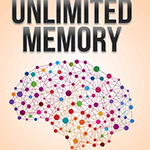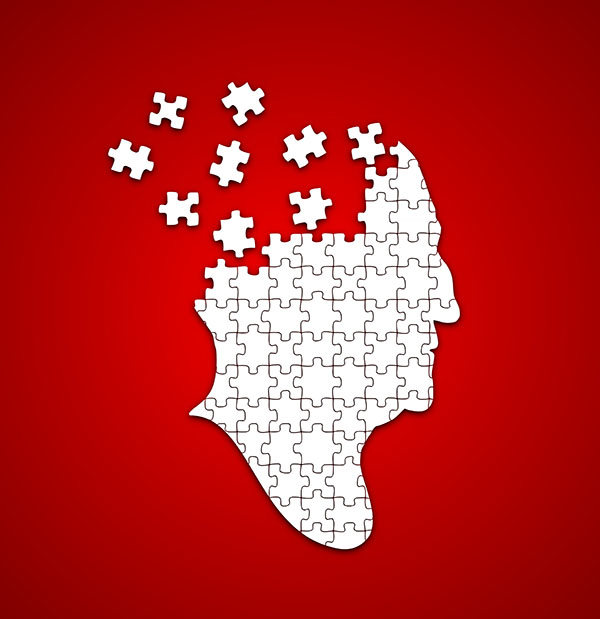Thu, 31 December 2015
I’ll never forget the day I made the most important discovery of my life. A discovery that would also prove important for thousands of language learners and students of various topics around the world.
Here’s what happened: I was on my porch down in Zehlendorf. (It’s really too bad about Zehlendorf …) I really miss that part of Berlin. I used to walk to the nearby lake and through a wooded area leading to the stores and the M48 bus I often took to Potsdamer Platz where I would watch movies for my work. Yes, watch movies. I was a Film Studies professor back then. Greatest job in the world – if you can get it.
And If You Can Keep It!
Anyhow, I was on the porch studying German and nearly tearing out my hair with frustration. No matter what I did, the German vocabulary wouldn’t stick in my mind. Worse, the flashcard software I’d been using bored me to tears. I’ve never found anything more painful than banging foreign language vocabulary repetitively against my eyes in the vain hope that I would somehow magically remember the abstract and mysterious words. In all fairness, some people can tolerate rote learning. In fact, there’s research suggesting that polyglots get great value from hard repetition. This happens primarily because they’ve trained themselves to be really good at it.
But Let’s Be Real
Most people do not want to be polyglots. Most people would be happy just to get halfway decent in one language, not several. In fact, most people would be overjoyed just to get a couple of hundred words in their long term memory. And most people would be ecstatic if they could turn those words into basic conversational fluency. All you need is about 800-1200 for that, plus a touch of understanding the grammar.
So there I was with a fat dictionary pumping words into the spaced-repetition software I loathed like the plague. I sure loved that dictionary, though. What a glorious thing, all thick and yellow. Heavy too, almost as heavy as a brick. But that didn’t stop me from carrying it everywhere.
And That’s When It Hit Me!
With a bit of summer wind on my face, I asked myself a fundamental question: Why on earth wasn’t I using memory techniques to help me learn German? Seriously. They sometimes say that Ph.D. stands for “piled higher and deeper,” but Mann O Mann (as the Germans say), was I ever mystified. You see, following a terrible and nearly suicidal depression that almost forced me out of grad school, I discovered memory techniques almost by accident. I was avoiding the looming field exams and dissertation defense by learning magic tricks. Of course, procrastinating on my studies only made my depression worse … But it’s at least a good thing that I was doing something constructive. I thought of my magic practice as developing a kind of “emergency paycheck,” because I was certain at that time I was going to wind up on the streets with nothing more to do than entertain people and pass around my hat. And I suppose that would have been fun for awhile. Studying card magic was certainly better than jumping off a bridge, which the mounting pressure and the teeth of my depression were forcing me to consider. Worse, if you’ve ever experienced the horrors of manic-depression in full swing, you know the impulses involved. They are sick and sweet and jump out at you from nowhere. It’s terrible too because once the urges pounce, they can keep trouncing on you for days and days on end.
The most sinister part of the situation was that I couldn’t concentrate or read. It always felt like my eyes were slipping off the page. And when I could read for brief periods of time, I always wound up forgetting everything. And that made me frustrated and even angry. Magic was my only relief. And it was easy to study too because you can buy a lot of training in card and coin magic on DVD. I didn’t have a whole lot of money at the time, but it sure was worth it. Especially when I came across the process that would save my life. I’m talking about the “Holy Grail” of all card tricks: The Memorized Deck. There’s a ton of effects you can create with a memorized deck. The only difference is … They Aren’t Effects! They’re Based On Real Magic …
… Or at least, the closest thing to real magic that exists. The ability to go through 52 cards, looking at each only once and being able to recall the entire order backward and forward … This ability is a complete miracle. So I bought a book on the topic and an audio program that included a section on card memorization. It would be years before I read the book, but my hungry ears gobbled up the audio like peasants on bread during a famine. And what I heard nearly made my brain explode. It’s true. I understood the procedures immediately. It’s shocking how simple it is, and yet … … I was skeptical. How on earth was I going to put these techniques into action when I could barely concentrate on a book? Not only that, but playing cards are essentially a kind of book, only they are made up of totally abstract and fragmented sentences and chapters. And the pages can be endlessly recombined. But even so, I gave the technique a try. What happened totally blew me away. Why? Because 15 minutes after learning the technique, I had memorized my first deck of shuffled cards. I couldn’t believe it. In fact, to this day I’m still in awe. And the reason I work so hard to promote memory techniques to people around the world is precisely because that awe remains. And it grows and grows the more I hear from people who have read one of my books or taken one of my video courses.
They All Have One Special Characteristic In Common …
They, like me, learned the methods and took action. They experimented. They memorized vocabulary using the tools of the Magnetic Memory Method and they got results. And then they repeated what they learned and got even more results. And those results led to even higher payoffs because things just keep getting better and better the more you use mnemonics as part of your learning. Anyhow, as soon as I realized what I had done with the playing cards, I instantly saw how I could apply these techniques to learning and memorizing the 250+ books I needed to cover for my field exams. These are mean and nasty affairs where seven professors sit around a table and drill you with questions for nearly two hours. They’re very protective of the university Ivory Tower, so they do everything they can to keep you out. The hostility makes the process of sitting for those exams frightening an stressful in every possible way. And frankly, most people never make it. I don’t know what the figures are now, but back then, the graduation rate from Ph.D. programs in Canada was a mere 13%. In other words, out of every 100 people who enter grad school, 87 walk away without a degree. But I wasn’t one of those who left the hallowed halls empty-handed. And it’s all because I took action and used the memory techniques I’d learned on that magical day during the depths of my nearly suicidal depression. Of course, it’s not as if my studies were suddenly free from challenges.
Far From It
The memory techniques boosted my confidence and this gave me increased clarity. But I still struggled to read with the amount of focus needed to even discover and isolate the information I wanted to memorize. So what I wound up doing was to read the books out loud. Unlike the memory audio program I had no problem following, the philosophy and history books I was reading had no audio editions. Worse, they were so dense and so obscure … It was often like pulling teeth just to get through them.
But by reading out loud to maintain my concentration and then listening to my narrations, I could finally concentrate. And then I would write down the key points and facts from the books on index cards. Next, I would order the index cards in particular ways to aid the memorization of them into the Memory Palaces I’d created. Following that, I memorized the information on the cards. Kind of like memorizing a deck of playing cards, only in this case you’re not entertaining audiences but rather earning a degree. But there was another level of difficulty. The memory techniques and especially the Memory Palaces I was using at the time were far from foolproof.
And I Made A Lot Of Mistakes
You see, the techniques I had learned were actually kind of pedestrian. They weren’t made for higher levels of learning. And they certainly weren’t designed for language study. So what I did was to develop completely new approaches to the memory techniques. I was still learning and memorizing information very well, but I knew I could do better. Above all, I knew that my Memory Palaces could be much more precise. So I found better ways to begin the journeys through them. I discovered principles that reduced the errors many people make with mnemonics and massively reduced the cognitive load extensive learning places on the mind. And the more I worked at it, the more streamlined the techniques became. Before I knew it, I had zoomed through most of the books and was ready to sit for my exams. I had also finally landed on a feasible dissertation topic. And even though I still felt physically terrible and the mental illness remains to this day …
I Was Sitting On Top Of The World
I marched into those exams brimming with confidence and aced them. In fact, when my final dissertation defense concluded and I was called “Dr. Metivier” for the very first time, the top examiner who had come up to Canada from the United States told me something I’ll never forget. “Most people freeze up,” he said. “Some of them even break into tears. But you … … the only person cooler than you is Miles Davis.” I guess what he meant is that I was calm, collected and cool in the sense of being unshakable. And trust me, each and every one of the professors surrounding me at that table on the second floor of the Vanier building on the campus of York University in Toronto did all they could to shake me up. But none of them could, not even the one hellbent on failing me. Why? Because I knew my stuff and could remember it.
All Of It
And when they awarded my degree, they even added a special comment on the form that I had presented my knowledge with originality and audacity. I take that to mean that I did it all with nerves of steel, total confidence and the ability to create new knowledge, not just parrot what I’d memorized. And that’s what the Magnetic Memory Method is all about: Creating knowledge while also being able to repeat information verbatim. Or in the case of memorizing vocabulary, being able to create unique and meaningful sentences. But don’t get me wrong. In some cases, being a parrot isn’t a bad thing.
Not A Bad Thing At All
But let’s flash forward a couple of years. There I was on the porch. Stupidly I’d sat through six months of a German language course after landing a research and teaching grant at a university there. Looking back, I still can’t believe it. But in all fairness, I had already used my memory to get my Ph.D. But researching and teaching didn’t require them in quite the same way. I used mnemonics only to memorize the names of my students and the basic architecture of my lectures. But on that porch, I realized that I could have been using memory techniques all along to memorize German vocabulary. The only question now was … How? When I thought back to what I’d done during my graduate years, it all fell into place. You see, when organizing the knowledge I needed to know in order to memorize the works of philosophers and literary or film theorists great and small, I had created at least one Memory Palace for each, sometimes up to five. In many cases, the Memory Palaces weren’t so much centered on the career of a philosopher, but on a single book. For example, for Aristotle I concentrated only on memorizing the major details of The Nicomachean Ethics. But as for the rest of his cannon, I’m a sitting duck in water.
Michel Foucault, on the other hand, had five Memory Palaces, four for individual books he’d written and one for facts about his life and how it intersected with important moments in his Zeitgeist. Regardless of having one Memory Palace or five per philosopher, in each I got some kind of picture in my mind of what that person looks like. In the case of Aristotle, I had only paintings to work with. With Foucault, I could look at oodles of photographs. Then, using a well-formed Memory Palace that obeys the principles of what would eventually become the Magnetic Memory Method, I followed these philosophers along carefully constructed journeys. At one point, for example, Aristotle fistfights with the notorious serial killer John Wayne Gacy. Foucault, known for his sexual escapades, got into some situations rather X-rated to at present mention. I would eventually come to call these Magnetic little puppets of mine, “Bridging Figures.” Why? Because by following them around in my imagination, they “bridged the gap” between Memory Palace stations and engaged in behaviors that quickly and efficiently reminded me of the key points I needed to know. After that, it was just a matter of rehearsing the show a few times and writing out what I’d learned in summary format to ease the information into long-term memory. As one commentator on a Magnetic Memory Method YouTube video puts it regarding my approach to memory techniques and mnemonics overall, it’s all …
Easy Peasy Lemon Squeezy
Lemon squeezy, indeed. Thinking about that practice and its tremendous power, I clearly saw that the same approach readily applied to German vocabulary. Abraham Lincoln helped me connect “ab” words in an “A” Memory Palace. To give another example, Einstein took over the show in an imaginary reconstruction of my brother’s home. Even more interesting, real people proved useful too. For example, my ex-wife’s good friend Vera war sehr verantwortlich when it came to stuffing “ver” words into a very special Memory Palace that happened to be her home in Brooklyn. I had only visited the place once, but due to the mind’s uncanny ability to absorb the details of a building on autopilot, I used its rooms and hallways to great effect before moving to my old girlfriend Vicki’s home and on and on and on.
Nifty, Isn’t It?
You bet it is. And before I knew it, the fruitless hours spent on index cards and writing words out by hand became a thing if the past. I deleted every trace of the spaced-repetition software clogging my laptop and honored instead the unparalleled abilities of a well-trained memory. Thousands of books and over a dozen video courses and public appearances later, the ancient art of memory finally had an innovation for one of its toughest opponents: language learning. There had been other attempts. Harry Lorayne and Jerry Lucas devote three pages to memorizing vocabulary in The Memory Book. In Memo, Oddbjorn By talks about organizing a city into three parts to help organize gendered nouns, an idea he may have found in Host Von Romberch, who was a contemporary of the great mnemonist Matteo Ricci. But none of these approaches had the rigor needed to memorize vocabulary en masse. Harry Lorayne is no fan of Memory Palaces and mnemonists like Dave Farrow use them sparingly.
Nothing Wrong With That
But for so many people like myself, pegs and linking do little or nothing. Without a track upon which to lay the associative-imagery, the choo-choo train of the mind has to grasp after ghostly images popped willy-nilly into the void, connected only by abstract relationships between silly images. But a Bridging Figure moving along a Memory Palace journey matches two extremely concrete elements that are easy to follow. The Memory Palace serves as the rails, beautifully fixed in place. The Bridging Figure is the train conductor who stops at the stations and lets you decode the associative-imagery. It’s simple, elegant and fun.
So Much Fun
Of course, it would be years later before I told anyone about this revelation. When I finally did release How to Learn and Memorize German Vocabulary following a mysterious and strange set of tumultuous adventures ranging from divorce to the biggest dental nightmare of my life, many people instantly got it. They went on to collectively memorize thousand of words and experience unheard of boosts in fluency. But others didn’t get it. They cursed at my book and the books to come, calling the Magnetic Memory Method impractical, impossible and insane. Others called me a scammer and compared me to Kevin Trudeau, a memory trainer who had broken the law by making dietary claims. What his health niche crimes have to do with his memory training, I’ll never know, but one thing will remain eternally clear: haters gonna hate. The critics and naysayers aside, I focused all of my attention on helping the dozens of people who emailed me their questions. I spent hours clarifying the technique on an individual basis. And to be perfectly honest, I loved each and every minute. But it soon became impractical to spend the better part of each day sharing clarifications to one person at a time. It’s the Information era after all. So I started gathering email addresses and emailed the answers to every one interested enough to subscribe. Soon, ever more questions started rolling in. And new subscribers asked me how they could get their hands on all the emails they’d missed. More than a hundred requests later, I created the Magnetic Memory Method Newsletter. At the end of each month, I gathered the emails I was sending once a day into a Kindle book and put them up on Amazon. Although these never became Bestseller like my other books, they have become the stuff of legend. Not a day passes when someone doesn’t ask to be subscribed to the MMM Newsletter or get the entire collection. I’ve put ten of them together so far, totaling over 1000 pages of the deepest investigations into the art of memory on the planet. Some people have called me the Simonides of the 21st century. Others think I’m the reincarnation of Giordano Bruno (probably because of my Heavy Metal/Stoner Rock look and sometimes stubborn and insistent ways). But to quote the late, great master of copywriting Gary Halbert:
“Whatever.”
One day I will have to put together the mounds of other correspondence with readers that I’ve never published. I expect that this eventual set of documents will amount to 3000 or more pages of material, writing that some people will undoubtedly gobble up and put to immediate use in their personal memory practice. But for now, my focus is on the Magnetic Memory Method Podcast and creating second editions of the existing vocabulary books. After all, I now know so much about why people struggle with the MMM that it behooved me to incorporate it all into the first editions. And now I’m excited to release the second edition of How to Learn and Memorize German Vocabulary. This new and revised edition includes: * Illustrations of how to create a well-constructed Memory Palace so that you can see the principles right before your very eyes and model them. * Drawings of a few pieces of associative-imagery so that you really understand how you can instantly memorize the sound and meaning of a word in just a minute or two. * A lengthy list of suggested German words you will want to learn so that you aren’t stumbling around blind wondering what you should memorize. * Notes on memorizing grammar principles and phrases so that you can speak sentences instead of just words. (Though the emphasis is on words because you can’t form sentences without them.) * An expended discussion of Recall Rehearsal so that you know exactly how to get the words and phrases into long-term memory. * A mega-conclusion that covers every possible question you may have so that no stone is left unturned, and you know exactly what to do to memorize hundreds of vocabulary words a week. And make no mistake …
This Stuff Works
I heard a few months back from one person that he learned 1000 words in 6 weeks. Just imagine what having that ability could do for you. And even if you’re not learning German, the principles apply to any language. So if this book is something for you, grab it. If you get it during this special promotion, I’d like to send you a special bonus.
That’s right. For people who get the book, either for Kindle or in print, I have a 45-minute exclusive video training I gave for Jonathan Levi’s SuperLearner Masterclass. In this training, we go into detail about the misconceptions and problems people have with creating Memory Palaces. It’s all in the book, of course. But sometimes having a “student advocate” ask me questions live can make all the difference in the world. Plus, Jonathan is a force unto himself when it comes to learning. At the present moment, this interview is available only in his SuperLearner Masterclass. It’s an experience that costs several hundred dollars to access. And honestly, if you’re willing to take action, 45 minutes listening to me talk in detail about the MMM is priceless. I’ll send you a link where you can download this exclusive interview. It’s just as simple as that. So here’s what to do next: – Grab the book now. – Click forward on the email receipt you get from Amazon. – Enter my email address (anthony/at/magneticmemorymethod/dot/com). – Click send. Just make sure you do so before 11:59 p.m. on January 1st, 2016. Now you may be wondering what’s coming up in 2016 for the Magnetic Memory Method Podcast. That’s a great question and so I can only urge you to stick around and see just what this grizzly old Wizard of Memory has up his sleeve. 2016 is going to be a big place indeed and if you want to learn a language, never forget a name or recite poetry or speeches, or pass even the most complicated math exam, the Magnetic Memory Method is here to help.
But Don’t Delay
Each and every day that you aren’t using the natural abilities of your imagination to integrate with the art of memory, you’re missing out on the massive power of flawless recall. You’re surrendering to the demon of forgetfulness when you could be eliminating its terrorist attacks on your life once and for all. Grab your copy of How to Learn and Memorize German Vocabulary now and make 2016 the most amazing year of your life. Your friend in memory, Anthony Metivier Additional Resources The post The Story Of How To Learn And Memorize German Vocabulary appeared first on Magnetic Memory Method - How to Memorize With A Memory Palace.
Direct download: The_Story_Of_How_To_Learn_And_Memorize_German_Vocabulary.mp3
Category:Podcast -- posted at: 1:04pm EDT |
Thu, 24 December 2015
But for something you do so often, are you getting the most out of your eating, for both your body and mind? Doctors, nutritionists, fitness instructors, and your mom are constantly preaching: “You are what you eat.” “An apple a day keeps the doctor away.” “Eat your fruits and veggies.”
Undoubtedly …
… diet is consistently cited as one of the more important aspect to weight loss and overall good health. What you eat can make you healthy, happy, and well-functioning, or throw you into a death-spiral of obesity, disease, and disability. It should come as no surprise that diet also affects mental health. In fact, there is mounting evidence that specific types and classes of food can have beneficial – or detrimental – effects on memory. Recently, for example, coconut oil has come into question. The question is… Is it possible to change your diet to maintain, and even achieve new and better levels of memory and information retention? We are all salivating for a definitive answer, but for the most part, the jury is still out. Much of the research surrounding food and memory are in preliminary stages and tested on animal subjects. Not to dismiss the abilities of a lab rat, but making the connection between a rat and a human is dubious. However, we aren’t entirely left in the dark. In fact, there is exciting new research pointing to real and impressive associations between food and memory. This post (don’t forget to listen to the podcast version too) will dive into this salad bowl of findings and scoop out foods to help with memory conservation and retention. All you’re left with is the easy – and delicious – part of figuring out how to incorporate these foods into your meals. So, let’s dig in. |
Thu, 17 December 2015
In this episode, you’ll learn: * Why the Ancient Greeks are not the only source of powerful memory techniques. * An amazing focus method for people with A.D.D. that’ll also work for anyone! * How to beat any world memory record and maintain the information over long periods of time. * The important of accuracy in memory and how to develop it fast. * How Dave memorized 59 decks of cards, totally 3068 cards. * The important difference between a memory championship and memory competition. * The nearly magical power of pegs as a powerful alternative to using a Memory Palace. * The secrets of bring longevity to memory without having to cram or spend tons of time reviewing. * A stunning and colorful alternative to the Major Method, especially for people with dementia using an arrangement like this (you can create your own version): 1 = red * Exactly how to memorize the Major Method (sometimes called the Major System) using “mnemonics for mnemonics.” * How to use memory techniques to “fill in the gaps” of anything you missed from a lecture. * How to deal with being accused of cheating when you use memory techniques to ace every test. * How to rebalance your brain after intense periods of learning so that you can maximize every minute you invest in your studies. * How to study with zero fatigue, no matter what field you’re in (medical, legal, etc.) * The relationship between the focus created by athleticism and what you need to maximize your scholastic studies. * Why having a short attention span has little to do with the Internet Age and everything to do with our primal ancestors. * The best places to study so that you have the space and the freedom of mind to get the most out of your memory. * How to combine focus bursts and mnemonics to blaze through learning a language – even supposedly difficult languages like Chinese. * Why you need to avoid memory techniques taught by people unqualified to explain them. * How to find out your primary way of making imaginative connections so that mnemonics work for you at the highest possible level. * The power of irony, oddity and personification as alternatives to action and imagery in your approach to memorizing information. * How Dave used memory techniques to become expert in everything needed to build the animatronic FarrowBOT with fully articulated hands. It truly is the robot that memory built. * The secret keys to developing motivation and passion so that you can make maximum gains with your memory over the long haul. * … and much, much more!
Photos From Dave Farrow’s 2015 Canadian Memory Seminar And Tournament
The 2015 Seminar and Memory Tournament took place on October 17th in Toronto, Canada at the Ontario Science Center. Please feel free to read the full Tournament Rules. You can also grab the World Memory Tournament Manual Dave put together with Chester Santos for more information about being a memory competitor or putting together your own competition.
At the competition, anyone can take turns being either a competitor or a judge. It’s amazing how quickly complete beginners pick up the mnemonics and get stunning results just minutes after receiving instructions in how to memorize vocabulary, numbers and playing cards. Even the most skeptical utterly surprised themselves!
As you can see, I was having the time of my life overseeing some of the matches. It was actually a challenging experience because judges have to make some tough close calls. If one competitor makes a mistake, the other competitor can claim the point and then go on to rack up even more until they’ve exhausted the amount of vocabulary, numbers or playing cards they were able to memorize.
These competitors are memorizing lists of vocabulary that they are seeing for the first time. A camera captures everything and detailed records of the results are recorded by the judge.
At the end, everyone walks away as a winner just for taking up the challenge of exercising their imagination and memory abilities and it is a thrill to get a photo with the “Farrow” of Memory himself, Dave Farrow.
Further Resources And Information Mentioned During The Interview Dave’s TEDTalk On Why Forgetting May Save Humanity: Excellent article about a Dave Farrow event by Tatiana Sanchez Dave Farrow article on Wikipedia Eric Dinnerstein’s World Memory Statistics PAO notes on the Magnetic Memory Method Podcast The post Dave Farrow Talks About Focus, Fatigue And Memory Expertise appeared first on Magnetic Memory Method - How to Memorize With A Memory Palace.
Direct download: Dave_Farrow_Talks_About_Focus_Fatigue_And_Memory_Expertise.mp3
Category:Podcast -- posted at: 7:43am EDT |
Thu, 3 December 2015
If you had the cure for cancer, to what lengths would you go to get it into the hands of the people? I’m guessing you would not rest until you could see the world freed from the disease in all its manifestations. Matteo Ricci did not have the cure for cancer, but as we learn in The Memory Palace of Matteo Ricci by Jonathan D. Spence he did have the next best thing: A simple recipe for eliminating forgetfulness. Not only that, but Ricci’s recipe helps with memorizing entire books and large volumes of vocabulary. Most impressively, Ricci developed a means for memorizing how to write in Chinese. Yes, you really can memorize how to understand and sound those crazy characters, and even memorize the stroke order.
The Freakish Willpower Of A Memory Wizard
As an Italian Jesuit priest and missionary, Ricci’s memory techniques were so powerful that some of the people in China who heard him recite their books forward and backward thought he was a wizard. In some cases, people saw him as a religious threat because Ricci also believed he had the ultimate salve for the human condition: Christianity. Indeed, as Jonathan D. Spence suggests in The Memory Palace of Matteo Ricci, “by impressing the Chinese with his memory skills, Ricci hoped to interest them in his culture; through interesting them in his culture he hoped to draw them to an interest in God.”
Talk About Ambition!
Although Ricci’s proselytization had only middling results in China, he was a friend of memory techniques, and we can learn a lot from him about how to use mnemonics at a much higher level. He wrote about his approach to memory and quoted the scholars from whom he learned the Memory Palace technique in a book called Xiguo Jifa. It took me forever and a day to find a copy of it, but finally I did and made sure to pack it up and take it with me during a recent move:
Speaking of books, Ricci was said to have the ability to memorize them cover to cover – and recite them forward and backwards. But is this a useful skill? You be the judge.
But memorizing entire books aside, as with all interesting lives, Ricci’s was filled with drama. Along with his many thrills, chills and spills, this “wizard” of the dark mnemonic arts we can learn …
The Many Dangers Of Using Memory Techniques
The first danger with using memory techniques is that as your memory grows stronger, so do your powers. You may even find that special new powers grow, abilities that you did not anticipate. And, as all fans of Spider-Man know …
With Great Power Comes Great Responsibility
This is certainly true, but those of us living today can probably ignore the idea that using mnemonics fuses your brain with the cosmos. But it was a common concern in the sixteenth century, the flames of which Giordano Bruno had no problem fanning. But for Ricci’s contemporaries, the threat was real. Being accused of magical powers regularly led to imprisonment, disfiguring torture and public execution. Often all three.
We can also probably dismiss the idea that rosemary helps with memory improvement, something promised by Ophelia in Shakespeare’s Hamlet: “There’s rosemary, that’s for remembrance, pray you, love, remember.” Other than that, the rest is golden. Drawing on Spence’s book about Ricci, we can now turn to …
Matteo Ricci’s 5 Memory Palace Tips For Total Memory Mastery
1. Cultivate eloquence by using familiar buildings. Ricci grew up during a time when fortresses were taking on more prestige than cathedrals in European cities. This historical circumstance meant that Ricci could use the best of both worlds. And you can too by visiting the most modern architecture where you live and the oldest remaining buildings. You can transform these buildings into well-formed Memory Palaces simply by following a few simple principles. This free Memory Improvement Kit teaches you each of these, so grab it now. The great thing about many civic buildings is that they’re well-planned. You can also usually find a floor plan on one of the walls. If not, a guard or other official will probably know where it is and let you take a photograph for later reference.
Get Freakishly Insane Results With This DIY Memory Palace Strategy
Or, for very good practice, you can sketch out a floor plan of the building yourself. This activity translates your immediate impressions through your muscles and other representation systems directly into your memory, and if you can start memorizing information before you leave the site, all the better. For more ideas about the kinds of buildings that make great Memory Palaces, check out the How To Find Memory Palaces episode of the Magnetic Memory Method podcast.
The most important point Ricci draws out is that familiarity breeds eloquence when it comes to creating top-notch Memory Palaces. As he noted in his letters, even the biggest and most chaotic cities he visited during his travels became small and manageable in his mind through familiarity. For us, this means spending more time visiting the homes of our friends and maximizing the value of all the Real Estate surrounding us. Even the most sprawling metropolis can provide you a tightly organized system of Memory Palaces if you take it just one corner cafe at a time.
This “Best Friend” Secret May Be The Best Way To Get Ahead With Memory Techniques Ever
2. You Don’t Have To Use Memory Palaces On Your Own Memory improvement takes places in your mind and your mind alone … Or does it? Not for Ricci. As Spence unearths, Ricci and his friend Lelio Passionei created Memory Palace systems together while studying in Rome. Twenty years later, Ricci still reflected on these Memory Palaces. No doubt they were even more memorable to him than others because he did not create them alone. If you’re creating Memory Palaces all alone, you could be limiting your success. Check out this post on how to play memory games using your childhood with a friend to maximize the potential of your memory and the Memory Palaces you want to use. 3. Flexibility is king All memory techniques involve encoding information, storing it, consolidating it and then decoding it when you want access to it later. But many people think that using a Memory Palace and visual memory techniques requires creating perfect images. They sweat and labor and fight with their minds to come up with 100% accuracy.
The Best Way To Prevent Failure Is To Stab |
Thu, 26 November 2015
|
Thu, 19 November 2015
Work is killing you. Your Kindle app is bursting with unread books. Your credit card is melting from the heat of buying stuff you want but do not need. And that circles back to the job or entrepreneurial pursuits you need to keep the devil’s circle spinning. Here’s the good news: There are specific habits that can get you off of that wheel. They are easy and mostly inexpensive to do. They give you insight into your situation and can spring you from the prison of burnout faster than you can imagine. The best part is that these seven techniques are also minimalistic. There’s almost nothing to them. And the “zen of almost nothing” is a great way to get started dealing with overwhelm.
1. The Shocking Truth About Meditation
Daily meditation feels good and creates many benefits ranging from stress relief to increased creativity and improved critical thinking. The only catch is that taking time for this simple practice can be difficult to remember. And that’s somewhat strange, given how good it can make you feel, even after only five minutes of practice. One way to make meditation a regular practice you won’t forget is to place a mat beside your bed. When you wake up, sit for even just a moment to connect with your surroundings. You don’t have a spend a penny on your mat either. Just fold up a blanket, and for extra comfort, place a pillow on top of that. In this way, you can keep your ankles off of the hard floor and give some balance to your spine. Many people think meditation is difficult. But it’s easy to do and gets even easier when you approach it without a lofty goal, like enlightenment. As Alan Watts said, the best way to approach meditation is “sitting just to sit.” If you can make this simple approach to meditation a regular practice, even with thunder and lightning jolting through your soul, you have a chance at developing better balance in your life within a week or less.
2. How Taking A Simple Walk Can Protect Your From Harm
Many hold walking as a form of meditation. But walking also releases regulatory chemicals in the brain, such as dopamine and norepinephrine. These chemicals not only create pleasure, but can also help reduce any physical pain you might be suffering. And you can make walking even more soothing for yourself. Take some MP3s of calming music that you resonate with and focus on immersing yourself in the sound and rhythm as you walk. Match your movements to the music and pay attention to the feeling of the world around you. It’s only important that the music you choose reduces overwhelm – not increase it. And if you are interested in meditation, take a break and sit on a bench in a park. Just to sit.
3. How To Practice Vegging Out (In A Positive Way)
Well, not exactly “vegging out” in the traditional sense. Practicing Shavasana has a funny catch to it. You will always lose the game. No matter how good you get at the stillness, your body will eventually force you to move. But in this game, losing is a good thing. As you experience the relaxing feelings of stillness, you’re also studying your impulses and your need to react to the same thoughts and desires that lead to overwhelm in other areas of your life. As you practice Shavasana over the coming weeks and months, try extending the periods of stillness longer each time. You’ll find that by extending your reactions in Shavasana, you’ll also be able to slow how you react to overwhelming elements of life too.
4. Do This With A Pen And Paper Every Day
When life hands you a car crash, we tend to react to the overwhelm by piling on worry, concern and more stress. The way around this is to buttress yourself in good thoughts before tough things happen. That way, you’ll have a reference guide to which you can refer. To complete this simple exercise, get a notebook and focus on writing down things you genuinely appreciate. Be specific. If you’re grateful to have a computer, list it. If you enjoyed the smile of a stranger on your walk, make a note of it. And commit to doing this every single day for at least three months. Add these 5 Brain Exercises for bonus points, if you like. Please don’t think this daily writing habit is silly or will itself contribute to your overwhelm. In 59 Seconds, a book by Richard Wiseman, the author gives scientific studies that demonstrate the validity of journaling gratitude. But you don’t take the word of science for it. Give it a try and you’ll find out on your own. Within as short a period as one or two days, you may find that you’re already feeling happier about your life and this new recognition of how things are for you will buttress you against future troubles that really can be overwhelming without a daily defense practice in place.
5. Have Two-Tiered Positive Goals You Can Achieve Now And Later
You’ve probably heard of SMART goals. They are goals that are: * Specific These are all great guidelines to keep in mind when making your goals, and they are designed to reduce overwhelm. As a bonus to the SMART concept, my friend Daniel Welsch down in Madrid adds on two other components that work well. He notes two kinds of things he wants to achieve: * Goals that cost nothing (like spending more time with a loved one) The former can be scheduled immediately. The latter can be worked towards and earned. It doesn’t have to be $1000, but the benefits of having a monetary goal in mind are huge. After all, you’re going to work one way or another and saving up for a specific goal that costs money not only engages you in your work in a more meaningful way. It also lets you give yourself a gift for all that you do. The trick is to make sure that your goals in and of themselves reduce overwhelm while leading to even greater states of calm and freedom in the future.
6. How To Make Your Favorite Poison A Cure
It was often said in Ancient Greece that the cure is always a poison, and the poison is always a cure. In fact, the word “pharmacy” partially descends from this concept (Pharmakia). Computers are like that too. At the same time you can use them to achieve miracles, you can also let them run you into the ground. Set specific limits. For example, no matter what, hit the off-switch at 10 p.m. and stick to it. Then go for a walk and sit on that bench. Of course, everybody knows that setting limits is tough, but the benefits of doing so reduce overwhelm and open you up to receiving so many good things in life that cannot be achieved when you and your brain are chained to a machine designed to bombard all your senses.
7. How To Reduce Overwhelm While Chilling Out With Friends
Social media has many positive aspects. But it’s not a substitute for real life contact. It doesn’t cause your brain to create any of the healthy and helpful chemicals that social interactions bring. And in fact, keeping up with all those posts and liking all those likable links can bake your brain. You also don’t get the challenges your brain needs while using social media. These include being asked questions and asking questions in return, complete with the body language and innuendo that only real life contact can offer. That said, like meditation, social contact needn’t have a lofty self-improvement goal. It can be valuable in and of itself just as something to do. But if you do want something specific to do with your friends, tell them about your minimalist plans to bring more balance into your life. After all, they’re helpful for everyone else too. And teaching something helps you organize information in your brain, leading to streamlined thoughts and crystal clarity that also help reduce overwhelm in your mind. So what do you say? Are you ready to get out of the soul-crushing loop that you’re in and bring in some new habits that will help you reduce overwhelm and boost your success? I hope so, because the truth is that you can free yourself from the suffering of burnout, one small positive habit at a time. The post 7 Minimalist Ways To Boost Success In The Face Of Soul-Crushing Overwhelm appeared first on Magnetic Memory Method - How to Memorize With A Memory Palace.
Direct download: 7_Minimalist_Ways_To_Boost_Success_In_The_Face_Of_Soul-Crushing_Overwhelm.mp3
Category:Podcast -- posted at: 8:20am EDT |
Wed, 11 November 2015
Check out this guest post by Camilla Hallstrom of 99 Smart Ideas. She teaches you how to use powerful psychological tools to make finally crossing that language off your bucket list simple and fun. Take it away, Camilla! Have you ever started learning a language only to find yourself still no better than a beginner years later? If so, you’re certainly not alone. Learning a language is often considered extremely daunting and takes a long time. After all, you’ll have to cram all this information into your brain. For example, you’ll have to memorize new vocabulary, including regional variations, slang, cultural concepts, grammar rules, and numbers. If you’re not some sort of a memory prodigy, you’re in it for the long term – and who has time and energy for that? But here’s the thing: The conventional wisdom that learning a language is a long and arduous path is…
Just Plain Silly
As a native speaker of two languages, Swedish and Finnish, and fluent speaker of three more languages, English, French, and German, I can communicate in two other languages, Norwegian and Danish, and I’m a beginner in an eighth language, Italian. Am I a language prodigy? No way. Do I have superhuman memory skills? Not really. Is it in my genes? Nope. No one in my family speaks as many languages with the same fluency. The key to every language that I’ve learned is that I have learned how to motivate myself to keep on learning and memorizing. Being motivated to learn a language might sound intuitive, but still, this is one of the most basic things language learners struggle with. Motivation also applies to learning in general and learning memorization methods that can be applied to other things. For example, you know from Anthony’s Magnetic Memory Method that there are structured frameworks that can be applied to language memorization. And if you’ve used the Magnetic Memory Method, you know it works. Yet, it’s easy to fall back on the same old excuses – you don’t have time to create those Memory Palaces right now, you don’t have time to learn the techniques, etcetera. So how do you continue to motivate yourself to keep on learning? How do you master those Memory Palaces and learn a new language? Read on to learn exactly how you do this – once you’ve mastered motivation, there are no limitations to your learning. (Note: I’ve put together an eBook at the end of this post that will give you 19 actionable ways get motivated and achieve your goal.)
What Does Motivation Do to Your Memory?
Years ago, back in high school, I wasn’t very diligent. German was one of my least favorite subjects. Yet, I had to undertake a rigorous and important exam at the end of my senior year. Everything that I had ever learned in my German classes throughout school was going to be tested. I didn’t have very much time to revise. Also, I had to take three other exams at the same time. I pretty much gave up at the starting line. Instead of trying to frenetically revise grammar books and dictionaries a month before my test, I decided to do something unconventional. Quite simply, I watched my favorite movies, read my favorite books, and watched the news – all in German. I did this for a month and I enjoyed doing it. At the end of that month, the result for my exam took me by surprise – I scored nationally in the top 20% and was one of the best in my class. This success happened despite the fact that I had been one of the poorest performing students just a few months earlier. How come?
Don’t Overlook This Little Known Secret: |
Thu, 5 November 2015
Or perhaps you’ve just wondered … what on earth makes the people who write all those ads tick? If so, then today’s your lucky day, because on this episode of the Magnetic Memory Method Podcast, the remarkable comic turned copywriter, Kevin Rogers of Copy Chief, holds the truth about …
How To Be Memorable On The Stage And On The Page
So go ahead click on the play button above, download the transcript for this interview or read Kevin’s many words of wisdom right here below. Anthony: Kevin, I’m really excited to have you on the podcast today. There are a number of reasons why I wanted to speak with you in particular. Maybe you could tell everybody listening to this a little bit about who you are and what you do. Kevin: Sure, thanks Anthony for having me. I’m really glad to be here. An interesting, I guess, resume, I am now a freelance direct response copywriter, which means I write the ads that force people to make a decision. Essentially, direct response compared to more sort or traditional advertising means that there’s always a call to action at the end of it. An extreme version would be an infomercial – buy now, buy now and you’ll get an extra set of knives and all that good stuff. We certainly have much more subtle ways to do all that, but that would be the one big distinction between what we do and other types of marketing. My story is that I was a stand-up comedian. I actually left high school a little early because I was restless and after doing some labor jobs that I didn’t feel were a perfect fit, I was dared by friends to do an open mic night at local comedy club. It turned out that was a better fit for me. I was fortunate to excel pretty quickly at that and actually won a contest to take over as the house MC at this club here in Clearwater, Florida. It was a really great opportunity because it meant that I was doing eight shows a week and stage time is everything to a comic.
For instance, in New York City, there are so many comics there, and they will club hop. They might be taking cabs from club to club from 5:00 in the afternoon to 2:00 in the morning just trying to get on everywhere. It was a big deal to get that much stage time at a popular club here in town. Then I went on the road at about 19 and stayed on the road for almost 7 years as a comic. That was an incredible adventure.
How To Turn Your Hair Into A Calling Card
I knew at some point that I didn’t have any control over whether I succeeded or not in that business. Show business is one of those things where it takes a little bit of luck and some knowing the right people. For me, I had no business sense whatsoever. I do know a few comics who had marketing backgrounds and certainly used that to their advantage, Carrot Top being one really good example. Carrot Top was having stickers made of his image when he was still just a road comic. He really understood that his shock of orange hair was his calling card. I had none of that. I had no business sense. I just kind of knew that at some point I would need to make a decision that if I wasn’t getting signs from the business that this was going to pay off for me, somewhere around the age of 30 maybe, I did not want to risk becoming some of the older very bitter comics that I worked with. Because they were amazingly funny and talented, and, they were also really tortured. It was clear to me, and to them, that they had no alternatives. When you spend most of your life as an entertainer and that does not manifest into a big win, then what do you do? It’s a really sad state of affairs for a lot of people I have a lot of respect for. Anthony: We know the image of the tortured comic, or many of us do anyway because we see it again and again. What do you think it is that tortures them? Is it something that links to memories that they’re trying to deal with? What would it be maybe from your own experience? Kevin: Yeah, it’s absolutely that. I think there is an incredibly thin line between pleasure and pain when it comes to how we express ourselves. You know funny comes from pain, period. We laugh as a healing device. Comics – I can’t tell you about a stable person I’ve ever met who is like gut-busting funny. It just doesn’t equate. Not everybody grew up in some terrible condition, although that’s often the case. A very true statement is comedy is therapy for the comic. Very often, these people would be in dire straits mentally without that outlet. It’s funny because hanging out with them or being around them offstage is very often not what you would expect. People just assume a comedian is funny all the time and loving life and it’s nothing but laughter. There are parts of that which are true. For the most part, it’s a bit of – I don’t want to call it miserable – but….
How To Hold The Most Depressing Dinner Party In The World
I’ll never forget a story a screenwriting teacher told about his wife wanting to liven up a dinner party so she invited comedy writers. It turned out to be the most morose dinner party she had ever thrown. It made perfect sense to me. Anthony: I’m curious, how do you remember sets and when you’re doing eight sets like that back to back, are you doing the same thing? Are you embedding it into memory as you go along? What is the artistry there in terms of your own delivery and the role of how you prepared and how you performed? Kevin: That’s a great question. I think what I did, and what I saw, is very typical among comics. There wasn’t a lot of strategy to it other than you always wanted to be coming up with new material. We would start with what we call a premise. A comic would say to another comic, “Do me a favor and watch my set because I’m trying out a new premise.” They wouldn’t really say I’m trying out a joke. Sometimes jokes come to you just done out of the aether. The first thing you do when that happens is you call four other comics, and you go have you heard this before? Because you are afraid that your memory is playing tricks on you and telling you it’s got something new when it’s actually something you heard somewhere else. The worst think you can encounter as a comic is being labeled a thief. We are all very careful that we’re not accidentally repeating someone else’s bit. You bring up the premise, you have some idea of what the punchline will be and you work it into a place in your set where it feels safe because you’ve got momentum and then you know that you’ve got some great jokes after that. You slide it into sort of a safe place in your set and you just work it out. I think most comics prefer to have the magic happen live. It’s almost more about how you introduce the premise than how you execute the punchline when you’re developing a joke. Because at its best, the process is letting the audience sort of dictate live which way the joke should go. Very often things happen in the moment that you couldn’t sit with a pad and pencil and create.
Notebooks … The 51st Shade Of Grey?
As far as memory, people would say all the time, “How do you memorize all that?” I guess it just starts with five minutes. You memorize it enough to – The first time I went on stage that was my biggest challenge. I got on stage. And it felt nothing like I could have imagined. I was very nervous. I couldn’t see. I didn’t expect that. I’ve got these lights in my face. I was just trying to remember the jokes and listen for something that sounded like good news coming back from the crowd. Then you just remember that and then you add on bit after bit, and guys could have hours of material. George Carlin famously would do a new HBO special every year. He would build up new material for that year, and then he would throw it away after the special was recorded. That was done. That was part of the magic of George Carlin. He was dedicated to the craft and to developing and evolving new material. He would take about the best 10 percent of the previous special, use that as the foundation, sort of the safety net to give audiences their money’s worth. Other than that, he’d bring up a notebook and basically just be working out new material in front of a crowd of hundreds or thousands sometimes. Anthony: I was going to ask you about that. Because there are some comics that have trademarks like Carrot Head. There are very few comics that have actually made a bit of a trademark of actually having lines written on a notepad or whatever that they bring up. I wonder if you ever did that too, or had any sort of visible triggers, notes written on your hand or anything like that to prompt yourself? Kevin: It’s a good question. There was like a phase – a thing in the 1990s all of a sudden called alternative comedy. It was the early days of Patton Oswalt and Marc Maron and these San Francisco comics. Janeane Garofalo was a big alternative comic. They would all bring their notebooks up. That was their thing. It was like we are so cool we are not pretending to perform. We don’t care. There is no formality here. Honestly, it was a bit like torture a lot of times. It was just very self-indulgent. It’s not that there should be some hard rule that you can’t bring up a notebook and refer to it if you’re working out new stuff. No problem with that, but it almost became a cliche. You know, like this is all so fresh that I have to look at my notebook to even remember it. With some people, it was BS. They knew the bits. They were just using the notebook as a prop. For me personally, I did later start recording my sets. To be honest, I don’t know how often I actually listened back to them. If I was trying to work out a new joke, I would record and at least listen to that part. Then I might go I forgot the funniest line I had or whatever. It would have benefited me to formalize that a little bit more. For the most part, again like I said, for me and a lot of comics it was about creating a moment. Believe me, when you do create a moment with a new premise and it hits, you will not forget what made it work. It just becomes a part of you because that’s your lifeblood. It wasn’t too formal.
How To Build An Empire Without Wearing Any Pants
Anthony: As a way of seguing from comedy into copywriting and Copy Chief, there is a real funny and compelling marketing video that you put out at one point recently for the Copy Chief community. You were apparently wearing no pants. Maybe by way of saying a little bit about how you went from comedy into marketing you could also talk about, “What is it about comedy that helps persuade people to buy?” and, “Have you ever really left comedy?” Kevin: Great question. So I’ll try to really give the condensed version of this. I did leave comedy and that was a painful exit for a couple of reasons. One, I was really done with touring clubs. That part wasn’t hard. My heart I knew would always be in it and there would be potential jealousy to see friends make it when I had kind of thrown in the towel. I had convictions about it, and I knew it was the thing to do. The other part that was difficult was logistically trying to go get work. That same problem I talked about wanting to avoid. The good news was I was only about 30 so I had plenty of energy and some time. I knew I liked to write and so I would take classes at the local university, University of South Florida here in St. Pete after moved to Florida from Chicago, my wife and I. I would just take all the writing courses I could before I had to actually choose a major and go to real college. Writing was always there for me, and I just had no idea there was this thing called copywriting. I always said I wanted to be a writer. I had no idea outside of comedy writing, which I had decided probably wasn’t for me just because of what I had seen of it in Hollywood and how it worked. It really turned me off. I was doing like these no resume jobs. I bellman, I was a bartender and then I just got really lucky and got into a situation where I met a guy who was a direct response marketing junkie and he introduced me to copywriting. He knew I liked to write and he said I think you’d be a good copywriter. You should check it out.
Here’s Why Comedians Might One Day Rule The World
I slowly became indoctrinated and learned and was able to make a career of it. What is interesting is in trying to sort of transition and “go legit” from an entertainer to a guy who you should hire to push people’s luggage around at your hotel, I realized that bringing up comedy was bad news. People don’t want to hire somebody who wants to talk about how great it was to be a comic. They assume that’s still what you want to do. I was finding other things to put on my resume and really kind of burying that story. When I got into copywriting, I still had that mindset. It just wasn’t on my radar anymore at that point. It was my friend and mentor John Carlton, the legendary copywriter, who, when we began in the early moments of our friendship, said to me – that was sort of what bonded us. He was really fascinated by the idea of standup comedy and that I had actually made a career of this. He had a lot of questions about it. Then he said to me at one point, “Why aren’t you talking about this?” He said right now you are just another copywriter but if you were the standup comic turned copywriter, that’s a much more interesting conversation. He said, “Do you realize how few people in the world have had the experience you’ve had and how many would love to?” I didn’t. I just knew most of the people I knew were comics. It was normal to me. That was a huge revelation to me. It still took years. Then what I began doing was teaching copywriting through the lens of comedy. Then I wrote the book The 60 Second Sales Hook where I took a joke formula and I showed people how to just change the last part of it and it becomes a perfect condensed marketing story. That was very popular.
To Be Memorable, You Gotta Make A Commitment
It wasn’t until recently, Anthony, where I realized it was kind of my duty to strive to be funny again with marketing. Part of it was me just getting comfortable enough in the market to feel like it wouldn’t hurt me to do that. Then it became about, “Well how do I do it? What approach do I take?” I started to just post up videos on Facebook and sometimes they would just be tactical giving copy tips and other times it would just be me doing something stupid like lip sinking to Sympathy For The Devil in my car. It’s funny because I never stop. I commit to the entire song, right. I realize that it’s not funny if I show 20 seconds of it, but the fact that I did the entire song and never broke character for a second. That resonated with people. I slowly started learning what’s funny. How do I merge into now this new technology, this new ability to reach people? That’s when I started having fun with video. It’s interesting that you bring up the no pants video, because that is the result of me spending two days in this very office that I’m talking to you from right now with a camera set up, the lights just right and trying to do a straight pitch for my copywriting course. I was feeling incredibly frustrated and it just not feeling right. I finally got just annoyed enough to go, “You know what dude, just like relax. Go sit at the desk and just look into the camera even if it is babble for a minute.” You know what it was? It was like just going right back to that idea of just take the premise and go with it and see what happens. I literally sat down, turned on the camera, and for whatever reason, I guess because I was sitting at a desk, that’s the line that came out of my mouth. I said, “Hi, I’m Kevin Rogers, the founder of Copy Chief, and I may or may not be wearing pants right now.” Then I kind of ran through some stuff. I literally wrote that video which is about four minutes long in a minute. I jotted down. I came up with the premise of I want to teach something. To me that is the most important thing we can do to brand ourselves is to deliver value. Always be teaching is my motto. I thought, “What can I teach?” Well, I will teach the difference between good copy and bad copy. I just wrote down real quick good copy means this and bad copy means that. I went into these characters. Then I realized at some point well I have to at least tape the part where I don’t have pants. The punch line has to be here that I’m actually not wearing pants. So that’s kind of how that evolved. It is interested you ask that because I did leave comedy. It wasn’t until smarter people than me made it painfully obvious that I needed to be using that and then putting in action and effort. If that’s my brand, if I’m the former standup comic turned copywriter, I’ve got to deliver some funny once in a while.
Anthony: I mean it stuck in my mind in such a way that I came back to it and it was an interesting moment for me as someone who is interested in copywriting and in marketing as such because I had first encountered as a voice only on the Gary Halbert All-Stars Audio. Kevin: Oh, interesting. Anthony: I had always noted a sense of irony in your voice. I’ve listened to that thing probably four times, the Part 1 and Part 2. There is always this kind of flavor of irony especially because of a particular part that you narrate. Getting to actually then see you and know you through video made it, I guess, exceptionally interesting, but what I really am wondering is, is there something about the comedy that you find that persuades people to ultimately buy? Kevin: That’s a good question. I don’t know. I don’t know about buy, but I do know about that “know, like and trust” are major factors in why we buy from one person over another. I do know that if you can get a laugh from somebody, and, in particular a couple of laughs in one sitting – two or three laughs – that is a real bond. People did share that video quite a bit. I had one woman tell me she loved it so much and thought so much of it that when she shared it outside of the marketing community on her personal Facebook wall and nobody liked it, she was angry. She felt like you people don’t get it. That was really interesting to me. I don’t know if that makes somebody a “buyer.” It’s interesting because I’m in direct response. Like I said, our job is to get a reaction whether it is sign up, give us your email and let us give you more value and let’s have a conversation and ultimately of course you would like that to lead to that person being a customer or it is buy right now.
“Look Like You’re Having A Good Time Being Yourself”
It may not be an immediate thing but yeah, if you can show some personality and really look like you’re having a good time being yourself people find value in that. They go I want more of that. I’d love to be that comfortable in my skin. I’d love to wake up happy to be me, and be able to turn on my iPhone and make people laugh or share these bizarre thoughts I have. I think it does make people buy, but not immediately and certainly not in every market. When you’re talking about healthcare or health supplements or things like that, outside of male enhancement products that have been able to use humor occasionally, there’s not a lot of funny going on in those subjects. If you’re marketing and you’re teaching people how to do what is ultimately at least a 50 percent creative endeavor, which is like write better sales copy, guys like me, Frank Kern and others have a pretty good license to let loose and have some fun. Anthony: I’m really glad you made this distinction between buying and knowing and liking and trusting and then deepening a relationship towards having a financial transaction because this to me has a lot to do with making yourself memorable with many touches over the long haul and in a way that hopefully to basically quote Frank Kern that’s “always cool,” but still moving towards the sale. You know, so many people complain about sleazy marketers and all the sales tactics that assault us thousands of times a day. There certainly are those kinds of people in that world. How do we make that many touches that are sometimes necessary to move towards the financial traction of the “know, like and trust?” Knowing that we cannot 100 percent not insult some people or offend some people or annoy some people, but what is the fine line there so that we’re remembered but not rejected so that when that moment comes when the person is readily to buy that they think of you.
Do You Know What You Stand For?
Kevin: Another great question. I think part of it is what you just said in that we can’t please everybody. Some people are going to reject us. I would take that further and say decide up front who you would want to be rejected by. Because if you are, as the great Gary Bencivenga said, (I don’t know if it was his quote but he emphasized the quote), “If you are not against something, what are you for?” I am actually totally screwing that up. I don’t remember how he said it. Basically, you have to have a rally cry. You have to let people know this is the enemy. This is who this is not for. You look at a copywriting colleague of mine, Colin Theriot, who has a thing called the Cult of Copy, 14,000 members in a closed group. Now not all loyal followers but 14,000 people requesting to join a group about copywriting. Pretty amazing feat, right? Anthony: Right. Kevin: Colin is constantly reminding people who that group is not for. It’s not for the timid. There’s going to be a lot of language and there’s going to be things that make people uncomfortable, and if it’s not for you, no problem but never, never tell me not to do these things, because you just don’t get it. So he’s against are the people who don’t get it or feel so righteous and indignant that they need to scold him or recommend to him that he should tone it down or these things. Those are the opportunities he sees to attack. It only strengthens his bond with his followers. That’s probably an extreme case of a guy who like honestly not only doesn’t care if you are not interested but goes after people who raise their hand that explain why they’re not. That doesn’t work in every market, but if you just allow yourself the freedom to be yourself and not hold back, and that doesn’t mean you have to swear.
Why Are Some Words Offensive?
I don’t swear much. I don’t know why, Anthony, I as I mature, because I’ll be honest with you, around the house I swear a lot. I’m sure I’m looser with language with my children than most other parents would be, but to me, I take sort of the George Carlin approach because we talk about why are some words dirty. Why are some words offensive? We don’t get it. At the same time, something in me, there is a filter like in my podcasts, one of guests on podcasts my default is to not swear for whatever reason. I don’t know why, but I point that out to say that it doesn’t mean that you have to swear or go out of your way to be edgy or annoying. Take a minute, I would say to anybody with a product, anybody who wants to build a following, take a minute and open up a notebook and say who am I for and who am I for not. Who does not qualify to be in this group, this tribe I’m building and go out of your way to point those people out? Not in a judgmental way, but in a way that the people who do belong will feel strengthened to identify that with you. Anthony: It’s a good life principal for sure in in many areas. I wonder, you know, speaking about I think what is sometimes called repulsion marketing so that you’re attracting the people that you want, I want to mention your podcast, The Truth About Marketing so people can look it up and it seems like a good example. There is an episode that you recorded with Ben Settle who sort of has that kind of down pat, you know, defining who is with him and who isn’t with him. Kevin: Yes, a big part of his marketing. Almost every email has some shade of that. It’s very strong to him. Anthony: So I just mention that to people listening that your podcast is called the Truth About Marketing and that would be a great example of that to listen to and remember some principals from. Speaking of podcasts, you’re also involved with in Psych Insights with John Carlton who you already mentioned. There is one particular episode on that podcast called How to be a Damned Good Road Dog & Sneak Into “Insider” Status and it connects to something that you’ve talked about on The Truth About Marketing when you were discussing how to impress Michael Jordan. What I like about all these episodes combined, and that really switches certain things on in my mind, is that you’re teaching through examples about getting it wrong when you’re trying to connect with influencers and that is the opposite of repulsion marketing. That’s where you’re repulsing people with, you know, not being consciously aware of mistakes that you are making, or just being kind of awkward. I know I’m often an awkward person. I wonder, first, what do you think if you could define them or list them some of the wrong ways that rookies try to get the attention of a influencer and wind up making themselves forgettable by that person or disregarded and maybe not forgotten but put on the “black list.”
How To Be Socially Awkward And An Epic Failure … Guaranteed!
Kevin: Wow, I’m loving these questions man. I have a great example of this. What is interesting is this is sitting on my desk now for months because I’ve been waiting to teach this. One classic way of doing a poor job of getting the attention of an influencer is to kick the door in. I always coach people to be confident and sort of take the reigns of their business and all that and not wait for permission to go forth and be an expert, because there is always somebody who needs to learn what they know. Being cocky – John Carlton has told this story a few times on our podcast. It is a great example. When Gary Halbert was his mentor and they were very close friends and when they would do live events they would have a lot of fun with each other and they would bust each other’s balls and do a lot of that from the stage. He said, “Once an event there would be that guy who thought the way to come bond with them would be to walk up to them and the bust Gary’s balls.” It was an epic fail every time. That’s a sure sign of showing that you just don’t get the joke. You don’t recognize and appreciate that that’s a bond that only happens after a certain comfort level between two people has been achieved. That’s a classic. Then I received a letter from somebody in three different ways: it was emailed to me, it was hard mailed to my house, and it was hard mailed to my office. This is somebody who clearly believes that they’ve figured it out, they’ve really nailed it, and all they need to do is get this in front of me. I’ve never responded to this person because of the first line of the letter. It says, “Dear Kevin, I need our help. Now I know that sounds selfish so I’m going to offer to help you.” Now that’s probably supposed to be what Frank Kern would call a pattern interrupt because maybe he would think most people who would write to me would start by gloating or trying to flatter me or something. It doesn’t work for a few reasons. Of course, it did get me to read it. If somebody sends you a letter, you know, that is usually enough to get you to read it. He was just so cocksure in how he was offering to help me, and he made so many different assumptions about whether that would actually be valuable to me or not without ever asking, “Hey, would this be valuable to you?” It made me instantly discount him as somebody I would ever want to invest time in or reply to. I think the worst thing you can do is (a) ever make assumptions, or (b) try to open with the joke that can only exist after you’ve been friends for a while. I’ll tell you another great story based on this. Do you know who Mark Ford is? He’s one of the great copywriters. He doesn’t get credit for it. He’s also known as Michael Masterson and he wrote a course called the Accelerated Guide to Six-Figure Copywriting and when I started it was the only course out there really on copywriting. The guy is amazingly brilliant. He runs a thing now called the Palm Beach Letter and he was a big player in Agora Publishing. Anyway, the first time I met Mark Ford it was outside of a conference and every time the guy would stop and talk to one person a group would quickly form around him because he’s a very magnetic person. In such a group, a guy came up to him and he said, “Mr. Ford, I have a question if you don’t mind.” He said, “Sure, what’s up?” The guy said, “You know, I’ve always heard that the best way to connect with an influencer is to offer to help them, but I’ve been walking up to some of the influencers and saying hi, I’m Larry, how can I help you, and they just look at me funny and it doesn’t go anywhere. It feels awkward.” Mark said, “Well, what is it you do and how could you help somebody like Clayton Makepeace that you’ve just had this encounter with?” He goes, “Yeah, that’s the thing. I’m not really sure. I’m just starting out in the business. In fact, that’s what he asked me and I didn’t have a good answer for him.” Mark said, “Well that’s the problem. You don’t even know what you do yet.” The point of going up and offering to help somebody is to know that (a) you really can help them and (b) first make sure that it’s something they need or have interest in. I always remember that story and I thought it was really funny that people just take the really core meaning of the device and then go out and try to implement it and are shocked when it doesn’t work.
How To Really Get The Attention Of An Influencer
I will give you just as an alternative what I think is a great way to get in front of an influencer and what I teach the freelancers that I coach. I say, “Look, if you have somebody who is an active marketer, just do a case study on a piece of their advertising and teach other people what you see going on in the piece. Show what you know. Showcase your own expertise through the lens of what you admire about their copy and make sure that gets in front of them.” When they see that, it’s kind of like hearing your name – you can’t not listen. If somebody says, “Hey, you know, this copywriter did a breakdown of one of your ads.” Of course, they are going to go look at it and if they’re impressed, they’re going to call you. I promise you because they are always looking for copywriters. That’s a really great way to get results in advance and display only your value and sort of generously give to somebody. Even though they never asked, but you also never asked them for anything. You don’t send it to them and go, “Hey I did this breakdown of one your ads. Hopefully you’ll learn something from it! You idiot. You were missing these four key factors that I call dah, dah, dah.” Just teach generously to other people using their stuff and they’ll think wow this person is cool man. All they want to do is teach and I happen to agree with what they’re teaching so why I don’t I get on the phone with this person. Suddenly you’re equals instead of some guy hanging out by their doorstep. Anthony: With this alternative example that you gave, what is an example whether you either have personally or through the mechanisms of the Internet created results in advance for people as part of making yourself memorable and moving forward towards goals that you have for yourself? Kevin: Probably the best example would be the book, The 60 Second Sales Hook. Because the whole point of the book, like I mentioned earlier, is I took a joke formula which is relevant to my story. Then I show people in a very short (it’s only a 50-page book that sort of gets right to the point and talks about story) and I give them the device to write their story and use this formula to make it really effective. That was a big turning point in my career because anyone who read that book and did the exercise was instantly compelled to share it with me sort of as a thank you and because it really did create a special moment for them. A lot of times, it was the first time anybody ever wrote anything that actually looked like copy and worked like copy. People who just thought they couldn’t write their own copy. They would of course naturally also want my feed back and see if – or maybe they would be stuck and say here’s what I’ve got but I feel like it’s missing something. I was giving them results in advance but I was also opening the door for them to want more from me. I found that was a great opportunity because with that opportunity I could kind of do whatever I wanted. I did everything from offer 20-minute what I would call sales hook perfection sessions for like $350.00. I realized that was unscalable and then that evolved into what is now Copy Chief because it was the simple premise of I’m teaching the same things over and over to people one-on-one, what if I could just let a bunch of other people watch that lesson and learn from it and implement it in their own stuff. It would very often solve their problem for a lot less money and deliver similar value. That is how Copy Chief was born and that’s sort of the premise of any effective membership community I think. Anthony: Would you think it’s fair to say that an effectively memorable marketing campaign essentially creates a kind of ecosystem?
Always Be Teaching
Kevin: Yeah, that’s a good way to put it. I guess so, yeah. I’d say that’s a fair thing to say, if the campaign is teaching along the way. This is why I say, “always be teaching.” Teaching is everything. If one of your top priorities for your marketing campaign is to deliver actionable value to anybody who comes into the funnel, the campaign, then you absolutely are creating an ecosystem because especially on Facebook and anywhere if you have a site dedicated to it, people are naturally going to share something cool that they’re value from. Anthony: Well, one thing that I wanted to talk to you a little about is the actual use of words. We’ve already been touching upon it with comedy and it’s come up a few times the idea of having structures and formulas and sort of setting something up so that it almost falls into place later when you come to the punch line. People listening to this may not be familiar with copywriting but we know that there are some particular structures like AIDA and related acronyms. How could you describe those kind of structures even if it is just one or two of them and how a person absorbs them into their memory so they can sort of use it on autopilot or using a crib sheet or something like that but still have an authentic ability to write according to structure? Kevin: I sure you can educate me a lot more on this in regards to how memory works, but I think the best way to do it is not to just recognize a formula but to immerse yourself in the formula. Sort of like what I mentioned about the book being so effective for people because it gives them a very simple formula and then they’re inclined to do it, to use it. It’s sort of fun to use and everybody has a story so they are instantly qualified to use this. They don’t need to go do research or anything like that first. Then they immerse in it.
The Insider’s Guide To Sales Hooks
Part of why that took off for me was that people began to take ownership of the formula. It’s the ISDR (identity, struggle, discovery, result). People would call it that ISDR or the KLT formula (know, like, and trust formula). Because they immersed in it, they knew it and they took ownership of it. What else was cool, what I never would have expected, was people started to recognize it out in the wild. They would be watching a TV commercial and they would go that was The 60 Second Sales Hook. They would send me a clip of the TV commercial or they would take a photo of an ad in a magazine and they go look at this. It’s The 60 Second Sales Hook. It was super cool. I think if it had not been for the fact that it was so easy to immerse yourself in that formula that never would have happened because like most things people would have nodded at it and said that makes sense and then just moved on to the next shiny object. Anthony: I mean it is such a fascinating world and there is so much depth to it all. You mentioned Gary Halbert before, and speaking of depth, he had this idea of neurological imprinting which is something you could perhaps explain better in terms of actually writing out either headlines again and again or entire sales letters. Is that something that you’ve ever done or what do you think is the logic behind that. Kevin: Yeah, it is something I did early on. It was one of the exercises in that course I mentioned, the Michael Masterson course. I found it useful but I also personally kind of got bored with it quick. Other people I know it’s actually become a bit of a cottage industry. There’s a service that does only that. I don’t know if there’s a fee for it or not. But essentially they send out a letter, a sales letter every day and then your job is to write it out by hand. They have kind of built a community around it. It’s a very popular thing to do. Occasionally, I question if that becomes for people, you know, they feel like okay I did my copywriting today but all they’re really doing is copying other people’s copy and I think there is value in that but it also could be a trap. What I recommend to people and it was recommended to me as rote learning. As I understand it, it sort goes back to like a Greek philosophy of how to learn just by doing something over and over and over and does sort of imprint it on your brain and become an instinct. Famously other writers have done this. Hunter S. Thompson handwrote Hemingway he said just because he didn’t want to write like Hemingway. He just wanted to feel viscerally what it was it like to write on that level. I think there’s definitely value in that. Again, I mention Gary Bencivenga, who is pretty commonly regarded as the best ever direct response copywriter. He gives a great piece of advice about a similar thing. His advice is to read a great ad every day, and not just read it, but as you are reading it, ask yourself, “Okay, what’s one thing I would change about this ad that I think would make it convert even better than it did?” To me that’s the real power. So I recommend to people if you’re going to hand copy great sales letters, headlines, stuff and bullets, add that to it. Every time you write a headline, go, “Is there a word I could change here? Is there a line I could add to this that I think would actually make it better?” You’ll begin to recognize that some things are super perfect the way they are.
The #1 Question You Need To Ask Your DNA
John Carlton famously wrote long headlines but you could not replace a single word in them. That’s something to study. Anthony: I think that’s a great way of approaching it. Maybe if I can offer something to you to take back to Copy Chief. There’s a real interesting guy named Kenneth Goldsmith and he runs something called “Uncreativity Courses.” There’s actually a YouTube video, I can send you a link later and maybe you can share it around where he talks about how he gets his students to pick something to rewrite, to retype essentially. He says the surprise assignment behind the assignment is for them to write an essay about why they chose that particular thing to torture themselves to type through. That’s where the insight is. It is in the reflection of the repetitive action. That’s kind of the connection to Greek philosophy that you were mentioning. How do we derive insight from what it is that we chose to repeat? The same thing with Zen archery and so forth, it’s not so much the repetition as such, but the reflection on the repetition. Kevin: Wow, love that. That’s great. What’s the name? Anthony: Kenneth Goldsmith. He gave a speech in the White House. It is the most hilarious thing in the world when you hear him saying to Ms. Obama that I think students should be retyping famous pieces of literature and in fact that’s what they do and the look on their faces is completely, like all these old biddies that are in the White House for poetry day. I will send you a link. Kevin: I’ll definitely share that. I love it. That’s great. Thank you. Anthony: It’s awesome. This has been really great. I wondered if I could pick your brain with a question for the people listening to this who aren’t going to become copywriters, but they aspire to get great jobs and have amazing careers and they need to write compelling resumes. As someone who relies to a large extent on the written word, what advice would you give to someone sending out applications for jobs that strictly require their details in print. How can they not kick down the door but get remembered and ideally called in for an interview so that door is opened? Kevin: I’ve got to be one of the least qualified person ever to talk about how to write a resume. I’m like proudly unhireable. I will say, and I’ve heard that it’s basically computers scanning resumes for certain keywords and that’s how you ever make the pile. The only place I could offer advice is on a cover letter perhaps. The advice I would give for that is speak to the reader like the human being they are. Cover letters that I’ve seen are either desperately boring because they are just trying so hard to sound professional. It’s like mission statements. Companies’ mission statements are typically – you are literally asleep by the fourth word. Compare that to something like Dollar Shave Club. That famous video, eight million views on an ad. Why? Because the guy just kept it real and made it funny and told you everything you needed to know in a very transparent and entertaining way. Humor doesn’t belong everywhere. I wouldn’t try to be funny, but if you could be real. You have got to figure these people are just scanning these cover letters over and over and over, and if you can be the one that makes them slow down their reading and go, “Huh, oh, that’s interesting,” and sound like somebody they can relate to or a niece or a nephew or a friend or someone they care about.
The Human Elements You Should Never Forget
There’s a reason C-level executives go to lunch with the people they go to lunch with by choice on Friday or whatever. It’s not always business. People are drawn to other people. We’re all human. I think that’s one of the biggest mistakes we make saying like B2B copywriting, which essentially this is kind of what this would be. We are so bent on sounding professional, intelligent and qualified that we forget to be human. I would say that would be your one shining example. Take a chance and be human. Anthony: I like that. That’s powerful. What is coming up next for you and how can people get in touch if they want to learn more about you, learn about Copy Chief and what you teach in terms of enabling people to write better and essentially make a career for themselves as a writer if they wanted to go down that route. How do people find you? Kevin: Yeah, Copy Chief is pretty much where you’ll find everything. A copy chief in our business is the person who oversees the ad campaign, the copywriting and my premise for the community is that we all need chiefs. We all chief each other and help each other write better and more effectively. There is a membership community with a monthly fee but there’s also tons of great helpful stuff you can get for free at Copy Chief. You’ll see the blog. You’ll see The Truth About Marketing Podcast and lots of fun little formulas. You can also download The 60 Second Sales Hook book. I would love for anybody – I think anybody no matter what their goal is would find a lot of value in that book if nothing else. I would certainly love to have anybody take advantage of that. Anthony: Well to end on the note of “the truth about marketing,” if – heaven forbid – some nuclear disaster were to wipe away your entire memory, what would be the one truth about marketing that you would want to hold in your mind and never forget? Kevin: Wow, that’s a big question. The one thing? That when all else fails, just be honest. When every other framework feels insufficient, try bold honesty. If there’s a flaw, point it out. If there ares people who something is not for, point them out. Help them identify themselves. Again, by doing so you’ll strengthen the bond with people who it is for. I guess that would be the big one. Know who you’re talking to and speak to them like you would a friend. Further Resources How to Memorize Classic Copywriting Headlines The Darkside and the Brightside of How Marketers Manipulate Your Memory Every Single Day The post Kevin Rogers And The Truth About Comedy, Memory And Marketing appeared first on Magnetic Memory Method - How to Memorize With A Memory Palace.
Direct download: Kevin_Rogers_And_The_Truth_About_Comedy_Memory_And_Marketing.mp3
Category:Podcast -- posted at: 3:41pm EDT |
Wed, 28 October 2015
Or maybe they just didn’t feel right for you? Here’s the thing: They might not be. That’s just one of the unexpected answers you’ll hear in this podcast and read below. Let’s get started with a wonderful letter I received from a student in the Netherlands: Let me introduce myself. I am Timo, a Dutch high school student. Nowadays I am preparing for my finals, but besides that I am also working on a final paper about the human memory. To be honest, last year I failed to pass my exams, so I decided to learn differently this year. During my summer vacation, I came across your website. While listening to your podcasts, I realized that this would be the best way to learn for me. That I eventually picked out this subject for my paper was a coincidence. Back to the story. The last months I have read many books and scientific articles about the method of loci (or the Magnetic Memory Method). There are not many articles about this matter. These articles suggest that the method of loci is an effective way, but they are written by psychologists. Most of them are sceptic to use this in classrooms. You are, on the other hand, the expert for teaching this method to students. I assume that you use this method almost every week. My practical part of my paper is an experiment with high school students. (This is required in The Netherlands.) Last week I finished teaching them the basics and how to apply the method to a list of random facts and vocabulary words. Now they are preparing to make a test, which I prepared. A university researcher helps me to process the data from these test results. However, I met some resistance with some of the students. They think that this is too time consuming. The teachers are, however, enthusiastic about my research. They want to know more about this subject. Therefore I am considering writing a much shorter paper for all the teachers to explain my findings. Assuming that you are the only one, who gives these kind of courses, could I ask you humble opinion. Most of the books and articles do not give a clear answer, whether or not this method is effective on large classes and is better for the knowledge of the student (long-term memory). So here are my questions:
Is the Magnetic Memory Method a skill that everyone can develop?
No. The Magnetic Memory Method, any mnemonics or set of memory techniques are exclusive to a particular kind of person. First, the person must be open to experimentation and implementation. These personal characteristics appear not to be present in everyone. They require learning a set of tools that must be used in order to truly understand them. Think of a computer keyboard, for example. Anyone can look at the keyboard and understand a description of what it is supposed to do. But without putting their fingers on the keys and learning to press the keys to produce words, words will never form. And the exciting thing about typing is that, once you’ve started learning it, you can learn to write very fast. Not only that, but you’ve become so familiar with the keyboard that you can type entire books without even looking down at the keys or your fingers. Memory techniques are like that, especially if you’re using Memory Palaces. The Memory Palace is a kind of keyboard you build yourself based on a manual like the Magnetic Memory Method. The information you want to memorize forms the keys and the associative-imagery are the sentences you write on the paper of your imagination. And of course, no one types an entire book without making mistakes. But editing is a minor feat and quickly accomplished simply by scanning the record and compounding your associative-imagery or making the necessary changes. The keyboard metaphor is not perfect, but it gives a sense of how mnemonic approaches like the Magnetic Memory Method work. Other metaphors have been given, such as the wax tablet and bird cage metaphors given by Aristotle. In sum, not everyone can develop memory techniques because not everyone will take action. Seriously. Some people prefer crossword puzzles. But even with games and puzzles, a large percentage of those who do get started with memory exercise and other forms of mental training will, unfortunately, abandon the task at the first sign of mental effort. This premature departure is unfortunate because incredible successes are usually just around the corner. Again, memory techniques are best learned by doing. The real job of an instructor in the art of memory is, therefore, inspiring people to take action by learning the techniques and then continuing to take action as a kind of scientist. As a scientist, you create the basis for an experiment based on a clearly defined outcome and track your results. When the results don’t match the desired outcome, you analyze the mnemonic procedures you used and the Memory Palace itself and make the necessary changes, try again and once again track the results. Like many things in life, they who test win.
Is the Magnetic Memory Method worth learning?
Yes, but ultimately that is not up for me to decide. Learning is just one part of the process. You must implement the memory techniques, not just learn them. Knowing what they are and how they work without using them is like holding your fingers over the keyboard but never typing anything. The same holds true of any other memory training you might pursue. I personally believe that everyone should read as many books on memory techniques as possible, but only if they’re willing to try things out. To this day, I continue reading every book on mnemonics I can find. Almost every single one of them has a new angle on an old technique or something entirely new. I always give these new approaches a try and sometimes they become part of what I do in my personal memory practice.
How much time does it take to master the Magnetic Memory Method for tests (and eventually final exams)?
Mastery is not the issue. It’s results that matter and these often arrive fast and hard when people learn the techniques, follow the instructions and implement based around topics they’re passionate about and that will make an immediate difference in their lives. When I say “instructions,” I’m not talking dogma. The Magnetic Memory Method is called a method precisely because you need to come with a spirit of experimentation. It’s not a system and it breaks my heart every time I hear someone talk about their “memory system.” There are no universal systems and you cannot truly use the approach of someone else. Rather, people need a method that helps them create their own, highly personalized system , remembering that flexibility is a requirement as they experiment with making the Magnetic Memory Method their own. You need to understand that the map is not the territory and results only happen when you’re with the rest of us mnemonists down in the trenches and doing the spadework. All that said, people typically learn and prepare themselves for the Magnetic Memory Method
Are there any requirements to make the Magnetic Memory Method easier to learn?
The only requirements are a willingness to learn and experiment with the techniques. It helps a great deal if you also come with a topic you’re passionate about, but that’s not strictly necessary. Even the most boring information from the driest topic in the world can be made thoroughly exciting using a Memory Palace and the other tools mnemonics offer.
How can someone test, whether or not the student has learned the Magnetic Memory Method?
Testing is simple. The student either correctly produces the memorized information or not. That said, unless you’re competing, 100% accuracy is not always necessary. You can create a huge advantage for yourself simply by covering 50%, 35%, 25% or even less of the material on a test. The important point is that you direct the memory techniques where they are needed. Some people pick up lots of information without the need of any technique. Others, for various reasons, are desperate for something – anything – that will get more information into long-term memory. Whether one uses memory techniques or not, testing offers the only means of discovering how much and how deep into long term memory information has gone. The best part is that we know that as memories age, they move into different parts of the brain. (Gary small link). These memories may even be segmented into different pieces that are stored in different places. In this way, the remembered material becomes connected to other pieces of information, leading to what can be considered the formation of knowledge. So it is not uncommon that a person using mnemonics will seek a single piece of information and wind up uncorking a powerful flow of related information. This effect takes place often when the remembered information involves philosophy, history and material from subject-based textbooks. Here’s a quick training on how to memorize a textbook. Testing is a tremendously exciting part of the Magnetic Memory Method because it not only demonstrates that the techniques are working. Merely by testing recall, you strengthen your memory. You also discover more about the techniques and create deeper familiarity with them, ingraining them deeper in your being. In principle, without testing, which amounts to recall, you aren’t really using memory techniques. This is why I talked in this video on card memorization about how memorization really only takes place during recall, and we must take the time spent during memorization and recall together to form a proper assessment of the time investment.
Is your method age restricted? Is it easier for younger students?
I do not believe that memory techniques are any easier or harder for younger students than any other age. The one advantage young people have is a lack of inhibition and a fresh connection to play. However, adults, when they can get their egos out of the way, have the advantage of discipline and focus. They can, by and large, sit still at will and channel their energies towards the imagination. They can also practice meditation and analyze the kinds of imagination they have at their disposal with greater insight.
Could information that someone learns, interfere with other information? For instance, would Latin vocabulary interfere with biology terminology?
One kind of information can interfere with other kinds. This possibility is called either “ghosting” or “The Ugly Sister Effect.” These tend to arise when people use the same Memory Palace more than once without cleaning it first. If the information is too similar – such as when memorizing French and Spanish vocabulary – the interference can be severe. However, Spanish and Russian vocabulary are sufficiently different, something that reduces, if not eliminates jarring effects and confusion. In either case, with a bit of practice, neither need be interruptive. Once you understand the Ugly Sister Effect, you can bend it to your will and make it advantageous.
Do you think that this method is an essential skill in our digitalising world? People are nowadays more depending on their mobile phones than their memory.
Is it really true that people are relegating more and more information to their memory? Or is it possible that they are freeing it up so they have more space and time to learn and memorize more important things? Long before computer technology, people suffered from unexercised minds. We sometimes have a false vision of the past in which all kinds of people were running around with superior memory abilities. Many scholars, yes. But the average Joe? Hardly. More everyday people use memory techniques around the world than ever before. No, it is a lame and technologically deterministic view that blames technology for human laziness. It is the same technological determinism that blamed cars for more sex amongst teenagers and now blames cell phones for sexting. Believe me, young people had lots of sex with each other before cars appeared and many lewd notes were passed from student to student in the absence of cell phones. What is interesting about technology is that it is at the precise moment that it became so central to our lives that a mnemonics Renaissance took on full force. I believe there is no mistake that the World Memory Championships, mind-mapping and a global interest in memory techniques surged as computers grew in popularity. But I do not believe this occurred because human memory was being replaced and weakened. I believe the mnemonics Renaissance began because technology has freed the human mind to remember much more valuable things. For this reason, I often berate those who teach the memorization of shopping lists. What a waste of human imagination and mental energy! No, if you want to truly learn mnemonics and feel their awesome power from the first moment, memorize something that will immediately improve your life, or at least please you. Memorize something in line with your passions, something you cannot relegate to pen and paper or a computer. It’s for remembering these daily concerns that technology exists. Save your memory for the information that matters.
Do you think that the Magnetic Memory Method is a necessity for all students around the world?
No. Some students do perfectly well without mnemonics. I believe they would do even better with them, but what matters is the results they want and the results they get.
Should education institutes implement the Magnetic Memory Method in the classroom? How could teachers successfully teach this skill?
Yes. However, I do not think the MMM or any form of mnemonics should be crammed into the classroom with other subjects. Mnemonics is a subject on its own. It has history, and like math, has different forms. If math has addition, subtraction, multiplication, and division, mnemonics has linking, association, rhyming, keywords, abbreviations and the mothership that bears them all, the location-based Memory Palace. If schools were to create a semester-long, or even a year-long course in mnemonics, our world would be a much different – and better place – almost overnight. We would be faced with an information revolution far more powerful and interesting than the computer revolution because more people than ever before would be using the software in the hardware of their heads at the highest level ever in the history of humanity.
How often do you use the Magnetic Memory Method, and what for?
I use memory techniques nearly every day of my life. When I meet people, I memorize their names. When I study a language, I memorize vocabulary and phrases. When I read books, I remember dates and facts. When I study music, I memorize scales and lyrics. When I sit in lectures, I memorize the messages in real time. When I warm up for memory projects, I memorize short runs of playing cards. Above all, I spend the first minutes of nearly every day practicing dream recall. Even if I can’t remember a single dream, I make a note of it to help stimulate recall the next night. And nearly every day, I spend a small amount of time writing in my gratitude journal. It is a powerful means of never forgetting just what a wonderful life I’ve got. No matter where we live or who we may be, our existences are tied deeply to memory. And where memory is absent, the mindless void of forgetfulness and repetitive fantasy and negative messages persists. Only by focusing on strengthening our memory can we remember to be present with higher and higher levels of clarity. In this way, using memory techniques are a powerful form of meditation and perhaps the ultimate path to enlightenment. Further Resources If you’re interested in developing your memory by using Memory Palaces so that you can create genuine knowledge and achieve your most precious goals, you’ll love the Magnetic Memory Method Masterclass that you can try completely risk-free. I’d be honored to be the one who helps further your education in mnemonics and get you the results you seek. The post 11 Unexpected Answers To Your Questions About Mnemonics appeared first on Magnetic Memory Method - How to Memorize With A Memory Palace.
Direct download: 11_Unexpected_Answers_To_Your_Questions_About_Mnemonics.mp3
Category:Podcast -- posted at: 1:43pm EDT |
Wed, 21 October 2015
Take it away, Nelson! So you’ve read a bunch of books on memory skills. You may have even listened to all the podcasts on this site. But although many of them have helped your memory tremendously, there might be some of you out there who want to use your techniques to compete in (and possibly win) the USA Memory Championship. As a 4x USA memory champ (and before you think I’m cocky, also a 3x USA Memory Championship loser), I know the ins and out to winning this competition. Surprisingly, becoming a memory champion is not necessarily all about memory. There are a lot of other subtle things that go into making it to the end and winning the USA Memory Championship. And I’m going to explain to you exactly how. Here we go. Step 1 – Sign Up
This first point is dumb and obvious, but I’ve met a lot of people who talk about the competition as if it’s this Holy Grail that awaits them … … once they are truly prepared. To them I say, f*ck it. Just sign up and compete. There is nothing better than getting the experience of a full competition under your belt than actually competing. I hate to say this but, no one (well except for the very first winner, Tatiana Cooley) has won this thing on the first try. You could argue that Joshua Foer won on his first go, but technically he was there the year before as a journalist. Sure, he didn’t compete that first time, but he dug himself deep into the competition for his article. Scott Hagwood, Ram Kolli, Ron White, Chester Santos and myself, we all lost before we won. Even this year when I took first place, I honestly believe I won based on competition experience. There were some competitors with better-trained memories than me, but less competition knowledge and experience. So, bottom line, it’s about getting competitive experience. If you want that edge, just sign up and compete. It’s worth gold. Go for it!
Step 2 – Make It To The Second Round
The USAMC is split into two parts. The morning events: * Names & Faces The afternoon playoff events: * Spoken Words Making it to this afternoon second round has a lot of parts, because you need to score well in each event to make it into the advancing top 8. Not as well as you might think, but decent enough. The scoring works like this: With each discipline you get a score based on how much you memorize correctly according to the rules. Then, that score is turned into a championship score, which is a weighted score based on a curve. The best score is 100 pts and then everyone scores comparatively. Statistically over the years, you need about 200-250 out of 400 pts to make the cut. But standards change over time and it is harder to get a score that high than ever before. But the nice thing is that even if there are a couple people hitting some awesome scores, there are a lot of people with mediocre scores. Until everyone in the USA is amazing at memorizing (which they’re not … yet), this fact will be your savior. The mediocre scores are there because it often ends up that there are one or two, at most three front runners who are in another league compared to everyone else in the top 8. The rest are good, and still better than the remainder, but not that impressive comparatively to the top. So the bottom line is that you need to score consistently mediocre (or better) across the board to make the top 8. You used to be able to pass to the second round by being amazing at just 2 of the events. But agian, that’s getting harder to do. And if you are great at only one event but none of the others, you’re chances are nearly zilch. In other words, sorry to say, but there is no real shortcut here. You gotta be “good” at all four disciplines: names, numbers, cards, and poetry. But the good news is, you don’t have to be that good.
Step 3 – Play Strategically Through The Playoff Rounds
Okay, you’ve made into the top-8. Maybe not top ranked, but you’re in there. The nice thing about the afternoon playoffs is that it is all strategy. The chances for anyone to win at this point are all pretty much even. You could be the worst of the 8 (i.e. Ram Kolli in 2013) and still end up beating 1st place (me) and become the champ. SPOKEN WORDS One slip-up and … … you’re out. The round ends when three people have made a mistake. To me, this is the most difficult and nerve-wracking event. What you want to be able to do is memorize just enough not to run out of words before those three competitors get eliminated. This means that the real trick is in figuring out how many words to memorize. It makes for a delicate balance between what you are capable of and what you think others can achieve.
Mind Explosion!
There have been years that the word count went up to 88, and others where it only went up to 35. Everything depends on circumstance. People trip up on the most unpredictable things. For example, favorite Johnny Briones recited “architecture” instead of “architect” in 2014. Top 5 finalist, Brad Zupp swapped the very two first words “aorta” and “office” in 2012. And many others have just blanked when they new up to 100 or so words. You just don’t know who’s going to trip up, so make sure you know YOUR words. Typically I go for what I think is a safe minimum, around 100 words. Make sure you can do those 100 words, and do them perfectly. What’s tricky in recall is that you aren’t by yourself reciting. You have to be mentally prepared to say every 7th word or even less if someone gets knocked out before you. This can be a bit tricky and throw you off if you haven’t practiced. TEA PARTY My advice: Don’t bother listening to the people. Just listen for the name, memorize it, then put your head down, ignore them, and just study the sheet (the same information they speak is given to you in print). They talk way too fast to memorize it on the fly, so just read it instead. Plus, you get an extra 7-9 minutes to review the packet info after the audience members are done speaking. On top of that, you get three strikes (not single elimination like SPOKEN WORDS). I find this event the easiest because it’s so lenient. Typically it goes until two people are eliminated, but in recent years, no one has made three mistakes, so all five competitors qualify for the next round. Look for them to add a few more bits of info next year to make it harder. DOUBLE DECK So now you’ve made it to the finals! All you have to do is memorize two decks of cards in five minutes. At this point, it’s most likely there are three competitors left (but it could be up to five). The goal is to memorize more than your opponents. There was a time when memorizing around a deck and a half was championship winning, but not anymore. Last year four out of the five finalists memorized (or claimed to) both decks in their entirety. So then it comes down to accuracy. How reliably can you recite those two decks perfectly? You won’t have to say all the cards, since you’ll be alternating between competitors, but as with the words, you need to be flexible and say any card when it comes to you. A few competitors have failed to do this over the years (me included) despite being clear favorites to win the title. It’s tricky, but can be overcome with practice.
Step 4 – Fly Under The Radar
Here’s an “inner game” tip to take with you for the whole competition: Don’t talk hype. Just show up to the competition and kick some quiet ass. For one, you’ll be no one’s focus. You can freely chill out in the back of the room hitting the scores that you practiced with zero attention coming your way. But if people know about you or you’ve been around a few competitions and done well, you’ll get more attention. More attention means more stress and possibly more cameras in your face. What I wouldn’t give to do my 2010 competition again. No one knew me, and I came out of the gates shocking everyone, quietly and confidently. The top guys didn’t know anything about me, and it made them nervous while I was in there just cruising. Obviously there is still a lot of work you’ll have to do if you want to do well in all the events. But there is an endless amount of literature on just how to train your memory for competition. You can start at Art of Memory where you’ll find loads of resources created by other memory competitors. Put all those things together and with enough luck and skill, you might just find yourself standing up on stage as the 2016 USA Memory Champ.
BOOM!
Further Resources Extreme Memory Improvement interview with Nelson Dellis Nelson’s Kickstarter campaign for a children’s picture book called I Forgot Something (But I Can’t Remember What It Was) Help a good cause by taking the Extreme Memory Challenge and support Alzheimer’s research How To Help Middle School Students Remember More The post How To Win The USA Memory Championship appeared first on Magnetic Memory Method - How to Memorize With A Memory Palace.
Direct download: How_To_Win_The_USA_Memory_Championship.mp3
Category:Guest Post -- posted at: 12:39am EDT |
Mon, 12 October 2015
You forget where you put your keys. Your car disappears from the parking lot. You left the stove on again. Well, guess what? There’s a cure for absentmindedness. It’s called focus, and you’re about to learn three ridiculously boring ways to develop it. The following techniques work best in combination, but obviously life changes work best when you add them one by one, so pick your favorite and dive in. But if you have to begin anywhere, I recommend that you start with establishing a basic framework by understanding …
The Stunning Magic Of Being Boring
Boring? Oh yes, and here’s why: Just about every successful person in history has lived a life of constraint. Check out the following video and beneath that, I’ll break out some of the key points. As you’ve just learned, highly boring people live exciting lives. They reduce everything they do to the essentials, including:
The reason developing a life based on constraints helps develop focus and eliminates absentmindedness is because you give yourself far less about which to be absentminded. Not only that, but should you fall prey to absentmindedness, you’ll find your way back to focus. Why? Because the mountains you climb in your daily life won’t be hidden behind the fog of multitasking. Frankly, when you limit your activities and focus on the essentials, you’ll not only find and climb your mountains, you’ll move them entirely out of your life and move on to finer things. Even if you have a boss, it should be possible for you to isolate your most high margin tasks. Write a proposal, make a meeting and ask to redefine your activities. If your boss rejects your suggestion, either track your time on your own time to prove what you can do on your own, or …
Find Another Boss!
Speaking of which, if you want to bypass working for the man altogether, becoming an entrepreneur or self-employed is a great way to develop focus. Placing yourself in a situation that forces you to get results or starve will rip absentmindedness from your life and leave it wriggling on the floor like a helpless insect. As you can see, developing a boring life really can add tremendous excitement to your days on planet earth. So get started. Time is ticking.
The Extraordinary Power Of Sitting Still For No Reason Whatsoever
One of the most regular activities you can add to your life involves one of the most boring and yet tremendously exciting activities ever invented by humanity … Yes, we’re talking about meditation. Would you like to know why so many people struggle to incorporate this simple activity into their daily routines? The answer is simple:
It’s Because They’re Trying To Meditate
Sorry, dear Memorizers, but that’s the wrong road to enlightenment and a quick path to suffering. But before we talk about how to meditate the Magnetic way, here’s what meditation can do for you. All of these features of the world’s oldest brain training technique are scientifically proven and should persuade you to add meditation to your daily routine. Meditation …
Each of these benefits of meditation reduces absentmindedness because when you’re not in pain, and you eliminate mind wandering, focus glides in to replace these distractions. To maintained your renewed focus, all you need to do is keep meditating. Boring, right? Not necessarily. Not when you know …
How To Meditate In A Buddha-shaped Nutshell
Surprisingly, proper meditation is super easy to do. You need only chuck the idea that meditation is about experiencing socalled “nomind” and sit just to sit. That’s it. Sit down and let your mind wander. When first starting out, don’t bother with breathing exercises or mantras. Sit just to sit. After a few moments, you’ll become aware of the fact that you’re sitting on the floor, completely lost in thought. When this happens, you’ll become present. You’ll be in the room, totally focused on the present moment instead of fantasizing about the future, playing some alternative version of things you’ve done in the past, or talking to yourself. In reality, all that inner-dialogue is far more boring than meditating. Why?
Because You’ve Repeated All That Junk To Yourself Before!
When that moment of clarity comes, even if it takes a few sessions to get into it, you’ll feel pleasure, elation, and yes, enlightenment. That’s all enlightenment is: the elucidation that the present moment is all we have and you can be in it. Here’s a practical, step-by-step meditation guide you can use every day for the rest of your life. 1. Pick a time. Morning, noon, evening, it doesn’t matter. Regularity matters. If you can’t commit to an actual time of day, create an After X meditation practice. For example, meditate after eating a major meal. Meditating after eating can feel especially profound because, so long as you’ve eaten nonirritating foods, you’ll be physically content. And who knows? You might also digest your food better. 2. Pick a place to meditate. It could be your bedroom floor, basement rumpus room or backyard garden. Face East, West, North, South … Take your pick. Which direction doesn’t matter, so long as you have one. Remember, the way to eliminate absentmindedness and increase focus is to eliminate decision fatigue. If you give yourself too much to think about, you eliminate the chances that you’ll get down to business. 3. (Optional) Set a timer. Tim Ferris suggests that you do less than you think you can. In other words, if you think you can sit still for ten minutes, set the timer for eight minutes, maybe even five. If you do this, I would add that once the timer rings, you turn it off and then sit a little longer. You can move a little or even stand up,but do squeeze a few more moments into the session. It’s often in this second, untimed session where the magic happens. 4. Sit and do nothing else but sit. A lot of people teach that you should progressively focus on each muscle of your body from head to foot. This practice is often called a “body scan.” By all means, experiment with this. But understand that it is not waiting for your awareness of the present moment to arrive. It is not allowing yourself to be lost in thought so you can catch yourself everywhere but here. 5. When you finally arrive, enjoy and observe. The more you practice this simple form of meditation, the longer these moments of arrival will last. Clarity will also bubble up in different ways throughout your days. Although it’s unlikely and undesirable that absentminded fantasizing can be eliminated from your life, you can limit the amount of time your mind spends wandering out of control. There are also dietary reasons why you can’t focus. If that’s the case …
Cut The Booze With A Vengeance
Drinking’s awesome, right? You get a buzz, inhibitions loosen and that ugly stranger across the room starts looking a lot more attractive. By the same token, your vision blurs. Your speech slurs. You develop difficulty walking as your reactions slow. Worst of all, you impair your memory, including your working memory for two days or more. Worse, alcohol interrupts neurogenesis. Scientists once thought that the brain doesn’t generate new cells, and once they’re gone, they’re gone. However, we now know that new brain cells generate from stem cells and alcohol interferes with this process. The lack of new growth in super important parts of your brain (like the hippocampus) leads to foggy thinking, reduced concentration and poor decision-making. Of course, not all people react the same to alcohol, but even so, why take the risk?
Dump The Sugar
Did you know that sugar changes the structure of your brain? Not only that, but it messes with neurotransmitters like acetylcholine. That, dear Memorizers, is one supercritical substance when it comes to your ability to learn. Sugar also leads to brain atrophy, which itself leads to dementia and Alzheimer’s. Those conditions involve more than absentmindedness. They are a complete and permanent journey into the void. Eat brain healthy substances instead. These include:
Warning: Dark chocolate (but beware of this because prepared chocolate bars usually dissipate the helpful ingredients. You’d need to eat 70 or more to experience any benefits) And of course, drink water. Like there’s no tomorrow. Without regular hydration, your brain will shrink in mass and it can’t detoxify. And it’s 85% water, after all, so it’ll feel in good company when you keep it swimming.
This Is Just The Beginning
There is a lot more you can do to increase focus in your life. Reducing clutter, regular walks, playing games and being social all contribute to greater focus. Simple stuff, right? Put these simple practices into your life and you’ll reduce absentmindedness to the bare minimum. You’ll focus like a hawk on your goals and become the Magnetic King or Queen of your realm, just like you’ve always wanted to be. The post 3 Ridiculously Boring Ways To Add Focus And Excitement To Your Life appeared first on Magnetic Memory Method - How to Memorize With A Memory Palace.
Direct download: 3_Ridiculously_Boring_Ways_To_Add_Focus_And_Excitement_To_Your_Life.mp3
Category:Podcast -- posted at: 9:43am EDT |
Thu, 8 October 2015
I’m from realfastspanish.com and over there I help Spanish students get a conversational level of Spanish using specific tactics and strategies to improve their effectiveness as language students. And in this post I’m going to teach you how you can apply some of these strategies to significantly improve your effectiveness when it comes to your memorisation challenges using the principles of the Magnetic Memory Method. Whether you are just starting out with memory palaces or you are a seasoned professional, today you will learn three ways you can improve your effectiveness with memory palaces in order to achieve your goals with less effort and in less time. If you are already using Memory Palaces and mnemonics you are well ahead of the curve. You already know that using memory techniques improves the efficiency of learning. But, it is still possible to get even more out of your approach to memorisation. It doesn’t matter whether you are using the Magnetic Memory Method for language learning, acing exams in school, vying for a memory championship title or trying to impress friends at a party. There are three steps you need to consider if you want to have even more success with your memory challenges. Memory Palaces Are a Means, But …What is the Goal?
“If I had an hour to solve a problem and my life depended on the solution, I would spend the first 55 minutes determining the proper question to ask, for once I know the proper question; I could solve the problem in less than five minutes.” — Albert Einstein. “Begin with the end in mind” — Stephen Covey. Before you can start to maximise the potential of your memory palace training you need a clear vision of what you are a trying to achieve. A memory palace is a tool that you can use to achieve any number of outcomes with incredible efficiency. But the real power comes when your outcome is sharply defined. The problem is that, often, we don’t clearly define where we want to end up, which makes the path to get there a lot harder than it needs to be. Recently, I met a guy who works for an oil company and was telling me about his vision to become rich. He said he had his whole plan mapped out. His plan was to buy property after property and then subdivide and develop. He told me he wanted to have a few million in property, a few million in stocks and a few million in cash for those “just in case” moments. After mapping the whole plan out, I looked at him and said “Why? What is all this money for? If money is a means to an end, what is your end goal?” He said “I want to work with children”.
I Couldn’t Believe It
I said “why don’t you become a teacher?” He said “I want to work with disadvantaged children”. He then told me that he didn’t need the money to pay for programs for the children, he needed it so he could live without needing to work to free up his time. I told him he didn’t need millions of dollars to do that. I told him about a good friend of mine—a high school teacher who quit her job to work with disadvantaged children. She left her job here in Australia and moved to the Solomon Islands where she is working and living on a small allowance to cover her board and her food. She is working with the local teachers to develop a new curriculum in the school. As well as helping and teaching the children that live in the local area. She didn’t need millions of dollars, she was clear about what she wanted to do and she went and did it. After telling him the story, he just stared at me blankly. He offered a few excuses but it was obvious there was a disconnect between the goal and the means for getting there. Without a clear vision in mind, it is possible he will spend years trying to achieve a poorly defined goal. What if it takes him 30 years to meet his goal? Will it be worth it if he gets there in his 60s? Or worse, if he doesn’t get there at all?
Don’t Get Caught With A Poorly Defined Goal
He is not the only one, though, who got caught with a poorly defined goal. I too have found myself without a clear vision at times. Seven years ago I decided I wanted to be fluent in Spanish. I did some online research and found some resources for beginners. I printed everything off and got to work. I practiced for quite some time learning whatever I could about the Spanish language. Within two years, I organised my first trip to Spain. Before I got there I was so excited for the fun and adventure I was going to have with my new language skills. I was going to make local friends, I was going to go to interesting places only the locals knew about and I was going to experience Spain the way a typical tourist couldn’t.
Does Language Learning Overwhelm, Confuse And Frustrate You?
When I got there, the reality was a completely different thing. I was overwhelmed, confused and frustrated. My Spanish was hopeless. It was miles from what I thought it was. I couldn’t understand what the locals were saying. I couldn’t remember what I had learnt. And when I did remember how to say something, I translated literally from English and got a lot of strange looks. When I returned to Australia I was deflated. I thought my abilities in language learning were worthless and I should move on to other pursuits. Shortly after my return, I met up with a few friends in bar. They brought along a friend from France. Her English was good but not amazing—it was good enough to communicate, better than my Spanish at least. I told her about my experience in Spain and for the next few hours we shared language learning war stories. She told me about her struggles with English. I asked her “despite what you are saying, I understand you perfectly, you can communicate. How did you get to this level?” She then told me something about language learning that changed everything for me. She said “you can just keep learning forever, and that’s it!” I asked her what she meant. She told me that, if I wanted to, I could spend every day for the rest of my life learning something about the Spanish language. But, if I wasn’t clear about what I actually wanted to do with the language I would be lost learning for learning’s sake. What do I mean? In the English language there are over 250,000 words yet only 20,000 are used in regular day-to-day communication.
Sure, You Can Memorize A Gazillion Spanish Words … But Why?
For Spanish, these numbers are even better—there are a total of 100,000 words in the language yet the top 1000 most frequent words make up 87% of spoken communication. It is really quite amazing, you only 1% of the total number of Spanish words in existence for almost 90% of the conversation language. What I discovered after talking to the French girl in the bar was that I could spend the rest of my life learning about 99,000 words in Spanish, but if I couldn’t use the most common 1000 words properly I would never have a chance to meet the locals and experience parts of the culture I had always wanted to experience. So the question is — how well have you defined your goals? How well do you know and understand the outcome you truly want from the use of your memory palaces? And is there actually a disconnect between the information you are placing into your memory palace and what you actually need to know? Anthony has mentioned that one of his most popular podcasts was How To Memorize A Textbook. It is possible to memorise a whole textbook using memory palaces. But as Anthony mentioned, and I reiterate here, before you start filling your memory palaces, you should start by eliminating components of the textbook that you aren’t actually going to need. If you are preparing for an upcoming exam, are there components of the course that you won’t be tested for? For example, imagine you have an upcoming chemistry test. The teacher tells you that the test will be on the periodic table. The question is—do you have to memorise all 118 elements? Maybe some quick research uncovers from the previous exam tests or maybe the teacher tells you that they will only test your memory for the first 50 elements. Now you only need 50 memory stations instead 118. Through defining a clearer goal you have made the path easier. If you are studying a language, are there low frequency words that you are unlikely to ever use? Or are there words that you can eliminate because you can easily say them in another way?
The 3 Person Test
If we use language learning as an example, one word that I don’t particularly like is the word fluency. I encourage all of my students at Real Fast Spanish to stop using this particular word when trying to set goals in language learning. For example, I mentioned that there are 100,000 words in the Spanish language. If you wanted to be “fluent” in Spanish, how many of those 100,000 words should you put in a memory palace? It is unclear, right? But …
What Does Fluency Mean?
Instead see if you can define a better goal for yourself. How? By using the 3 person test. Start by coming up with an appropriate goal to help you move you from where you are now to where you want to be. Then ask 3 people if they clearly understand your goal. If they do, it is a good goal, if they don’t, you need to go back to the drawing board. What you ultimately want from the 3 person test is a consensus from your panel of 3 when you have achieved your goal. Let’s look at a few examples. Imagine your goal is to count to 10 in Chinese. If you could do it, then the panel would all agree. Yes you have achieved your goal. Now imagine your goal is to be fluent in German. When you ask three people if they think you are fluent then it is very possible you could get three different answers, when you think you are. One person might say ”yes”, one might say “maybe” and one might answer the question with another question. In this case your goal would fail the 3 person test. Knowing and having a sharply defined outcome is the first step to maximising your effectiveness with your memory challenges. A clear end game allows you to carefully select the right information to place into your memory palace which will save you time and effort later. Let’s look at the second step.
How to Overcome Resistance
“Resistance will tell you anything to keep you from doing your work” — Steven Pressfield. Once you are clear about what you actually need to put into your network of memory palaces and you have eliminated all unnecessary memorisation, you simply need to create the associated images and locate them where you know you can to find them later. But, this is easier said than done right? In order to fill your memory palace, you need to actually do the work. You need to overcome resistance. Resistance, unfortunately, is a part of nature. It’s everywhere. In the physical world, resistance is called inertia. Have you ever tried to move a large boulder? Or have you ever tried to push a car when the engine isn’t running? If you want to move large objects in the physical world you need to apply a lot of energy. You need to find a few friends or get the help of a large machine to apply enough force to start moving the object. In the biological world, resistance is called homeostasis. In the human body there are hundreds of processes all working to maintain the status quo. There are buffers in the blood to maintain pH. Insulin is used to maintain sugar levels. Our bodies also use metabolic and perspiration processes to maintain a constant internal body temperature. If you want to change your internal body temperature—which is not recommended—you need to go into a freezing cold place or an extremely hot place and stay there for enough time to break down the body’s internal regulation systems. In other words, a lot of thermal energy is required to overcome biological resistance. In the psychological world resistance is called procrastination. Let me ask you this question—have you ever procrastinated?
Why Do We Procrastinate?
It’s because procrastination is similar to inertia and homeostasis. And here’s the thing—it’s not your fault! If you have ever procrastinated it’s because resistance is everywhere in nature. Nature loves to resist change. So if you want to overcome procrastination, like the large boulder or the internal body temperature, you need to apply enough energy to overcome the resistance. If you want to successfully populate your memory palace with all of the carefully selected data you have chosen in step 1, you need to overcome your psychological resistance to change. How? If you want to overcome resistance you need to apply enough energy. For psychological resistance …
You Need To Apply Emotional Energy
What does that mean? Have you ever had a big exam, assignment or report due for work that you left to the very last minute? Maybe you left it until the night before or the morning of. Let me ask you this question—in the end, were you able to pull an all nighter or some other feat of poor health in order to get the assignment done? If so, what changed? In the lead up to the assignment, you were resisting it—naturally. Then when the deadline came close, you started to worry about failing or getting in trouble at work. At a certain point the resistance to doing the work was overcome by the emotional energy that came out of the fear of failure or getting into trouble. Knowing this, if you want to successfully fill your memory palace, you need to develop enough emotional energy to overcome the naturally occurring psychological resistance.
The Test of the Five Whys
One idea that you can use to build emotional energy is the test of the “the five whys”. This idea originally came from industrial manufacturing as a strategy to pinpoint the cause of potential breakdowns in the production chain. They needed the test because human beings aren’t particularly good at getting to the heart of an issue. If you want to truly understand why you should do something you need to ask “why?” five times. The true answer is rarely obvious from the first why. If you want to unearth a limitless source of emotional energy for overcoming resistance, you need to get to the heart of your motivation. Let’s see an example. I will give an example for learning Spanish because it’s what I’m used to. But you can apply the test to whatever memory outcome you are striving for. Imagine you have a well defined small task to place 10 new Spanish words into a memory palace. The five “whys” test would go as follows: Why do I have to learn these Spanish words? Because they are important for Spanish. As you can see, by using the five ”whys” test I have connected the trivial task of placing 10 words in a memory palace with a higher life purpose. By asking the question “why” five times you can access a deep well of emotional energy and use that energy to overcome procrastination and resistance. Once you have a sharply defined goal and you have overcome resistance at a task level, the final step is to create a routine that will allow maximum effectiveness with the Magnetic Memory Method.
Creating a Routine Allows You to Create
“Discipline allows magic. To be a writer is to be the very best of assassins. You do not sit down and write every day to force the Muse to show up. You get into the habit of writing every day so that when she shows up, you have the maximum chance of catching her.” ― Lili St. Crow. “You try to sit down at approximately the same time every day. This is how you train your unconscious to kick in for you creatively.” ― Anne Lamott. One important aspect of memory palaces is the creation of associated imagery. If you want to fill a memory palace you need to create and be creative. You need to take an abstract word, sentence or formula and create an associated image that you can use to recall the idea later. Said in another way, if you want to be more effective with memory palaces you need to improve your creative muscle.
How To Be More Creative
How then can you be more creative? If I said the key to creativity is routine there would be artists all over that would cringe at the suggestion. Creativity is about spontaneity. It’s about moments of inspiration that can’t be bottled. And these types of moments come when we least expect them, right? At least that what I used to think. What do Steve Jobs, Barack Obama, Albert Einstein and Mark Zuckerberg all have in common? They all wore the same clothes every day. Steve Jobs is famous for his black turtle neck and blue jeans. Barack Obama has said that he simply either wears a grey suit or a blue suit. Zuckerberg rocks a black hoodie. And Einstein was known for wearing a similar grey suit every single day. Why do they limit their wardrobes? They all choose to wear the same clothes everyday because of a concept called decision fatigue. The idea behind decision fatigue is simple—every time you make a decision a future decision will be slightly compromised. In other words, every time you make a decision you are more likely to make a worse decision later. For President Obama, decision making is a crucial part of his job. He can’t afford to make bad decisions. Therefore he limits simple decisions like what to wear or what to eat to someone else. What this does is leave him more decision making power for the important decisions—the types of decisions that could affect the future of the country. Have you ever had the feeling at the end of a long day at work or college and when it came time to do something as simple as choosing what to have for dinner, the decision of what to cook was overwhelming? This is due to decision fatigue. So what does decision fatigue have to do with creativity?
There Is A Trade-Off Between Every Decision You Make And Your Highest Order Thinking
Creative types like Steve Jobs and Anne Lamott know that they need to reserve their best thinking for creation. In order to do this they cut down decision making in their lives to an absolute minimum. They did this through routine. Either by wearing the same clothes or sitting down at a desk to write at the same time every day. The evidence of other artists that used routine for creation is overwhelming. In Mason Currey’s book “Daily Rituals: How Artists Work”, Currey lays out the daily routines and habits of 161 of the world’s greatest artists such as Woody Allen, Agatha Christie, Leo Tolstoy, Pablo Picasso, Benjamin Franklin and Jane Austen. Why does routine work so well for creation? Charles Duhigg, the author of the power of habit, says that the brain starts working less and less as we start to form regular habits. The brain can almost completely shut down and this is a huge advantage because it means you now have free mental space that you can dedicate to something else. This is how the world’s greatest artists work and you can test it for yourself.
How To Easily Assign “Pre-Commitments”
If you want to harness the power of routine and minimise decision fatigue, start by creating pre-commitments. A pre-commitment is a decision that you make a head of time. And ideally a decision you make only once. There are so many decisions you may be making on a daily basis—decisions that may seem inconsequential but add up quickly to fatigue of your highest order thinking. What you want to avoid is having to make hundred of decisions in any typical day: – What should I eat for breakfast, lunch, dinner? Then after all those decisions: – When should I sit down to work on my memory palace?
But There Are So Many Decisions … It’s Overwhelming!
Start by taking stock of all of these daily decisions and start making pre-commitments. Try to make decisions ahead of time. For example, you could decide on a Sunday evening everything you are going to wear for the week and eat for every meal. Here is a powerful strategy: can you work on your memory palace at the same time for the same amount of time every single day? Can you remove the decision of when or whether to work on your memory palace completely? If you don’t have to make a decision of whether to work on your memory palace, you can save your best thinking for the first, second or third location based image you have to place in your memory palace. Can you avoid decision fatigue? Can you use pre-commitments and routine to minimise as many decisions in your life as possible? If you can, you will leave your mind maximum freedom to create and be creative. A freedom that will allow you to create amazing things, crazy and vivid imagery that will infinitely improve the power of your associated images and the effectiveness of the Magnetic Memory Method.
What Wikipedia Won’t Tell You About The Real Path To Overcoming Procrastination And Learning At The Deepest Possible Level
Memory devices and mnemonics improve learning efficiency. The Magnetic Memory Method is a wonderful framework for putting the use of memory devices in a usable process. Put simply—it works! If you want to take the Magnetic Memory Method to the next level and be a more effective memoriser you should start with a clear vision of the outcome you want to achieve from the use of your memory palaces. A clear vision allows you to save time by first removing information you don’t actually need to memorise. This in turn means you can focus more intensely on the information that truly matters. Once you are clear about your destination, you then need to overcome psychological resistance to change. You can do this by connecting deeply with your underlying motivation in order to build the emotional energy you need to overcome procrastination. And finally you can maximise the effectiveness of the Magnetic Memory Method by minimising decision fatigue and incorporating routines into your daily life. If you can reduce the daily mental load of simple inconsequential decisions, you can release your creative potential for a vivid world of associated imagery. The post Why Goal-Setting For Memory Improvement Should Be Your Number One Priority appeared first on Magnetic Memory Method - How to Memorize With A Memory Palace.
Direct download: Why_Goal-Setting_For_Memory_Improvement_Should_Be_Your_Number_One_Priority.mp3
Category:Podcast -- posted at: 8:16am EDT |
Tue, 29 September 2015
You know what it’s like struggling to come up with mnemonics. It can feel a bit like pulling nails out of dead wood with a pair of rusted tweezers. And what really makes the pain so bad is that you know that your brain is teeming with ideas. Great ideas … If only you could catch them. Here’s the good news. In this unconventional brain training post I’m going to teach you how …
You Can Catch More Great Ideas Than The Most Successful Fishing Fleet In The World (Catches Fish)!
Just pick and choose from these super simple brain training activities and start with the most appealing. We’re going to go deep into each one so that you’ll have the fullest possible understanding. Add one or more per month over a year’s time and you’ll enjoy an overflow of ideas so powerful it will take ten lifetimes and thousands of employees to handle them.
Just Kidding – Most Will Be …
Crap. Seriously. As awesome as having boatloads of ideas can be, the real power comes from the refinement brain training brings. We’ll talk about that too a bit further on so your ideas will always come out shining. But here’s the important thing for now: You can’t refine what you don’t have. And you can’t get more ideas to refine if you aren’t already producing a lot of ideas in the first place. That’s why you need an unending flow of ideas that you can turn on at will and focus into form with laser intensity whenever you choose. Here are 3 unconventional ways how brain training can make that happen.
1. Milk Your Mind For Ideas Each And Every Morning
Most people flush their most vibrant ideas down the toilet as soon as their feet hit the floor. It’s true. By the time you hit the head, you’ve forgotten most, if not all, of a valuable stream (pun intended) of ideas you’ll never get back. I’m talking about your dreams. Of course, most of what we dream makes little sense, at least not without practicing the art of dream recall. Even then, dreams remain fundamentally surreal and devoid of fixed meaning. But just because they may be meaningless, doesn’t mean your dreams can’t help you create meaning. Au Contraire!
Since the early beginnings of literature, for example, Daniel in the Bible, making dreams meaningful has been a practice powerful enough to direct the choices of kings. And with The Interpretation Of Dreams, Freud created an entire industry by empowering people to interpret their dreams and generate ideas about what to do and how to live in the world. You don’t have to use the dreams you remember to influence world leaders or deal with childhood trauma. You can simply jot down what you remember and then free-associate to the images and vignettes. Here’s a quick way to get started with this form of brain training: 1. Get a dream journal and pen/pencil. Make it exclusive to your dream capture practice. 2. Place the journal where it’s impossible to miss near your bed. You can even date it before you go to sleep and leave it open at the page you’ll write on. 3. Make the commitment to remembering your dreams. Just say your personal version of, “I remember my dreams. I write them down.” That mantra in itself will serve as powerful brain training. 4. Free-associate to one or more of your dreams. It helps if you get relaxed first. Let ideas come to mind and jot them down. Don’t think about it or try to guide them. Let them breathe. If you recall no dreams …
No. Big. Deal.
Write down, “no dreams” and perhaps a few notes about how you slept. Before you know it, you will start remembering your dreams with depth and intensity. And when you practice associating with these dreams, you’ll always be able to come up with new ideas. The best part is that you’re journaling your dreams. This brain training practice means that you don’t have to associate only with recent dreams for new ideas. You can go back through those pages for as long as you’ve been journaling. You’ll have a treasure trove of images, narrative snippets, and longer sequences as often as you please and always find some new angle on the material. To give you an example, years ago I dreamed about the pyramids. I saw them filled with a scented lava that poured down the sides, creating a river. When I finally got to visit Egypt, for some reason, I remembered the dream and started to explore it for ideas. I was there to research ancient Egyptian culture for its relationship to memory and reincarnation, past lives, etc. That was all fine and dandy and I learned some great stuff in some of the museums I’ll be telling you about soon. But the fact that I remembered this dream and the lava was scented led me to think about aromas, and I wound up wondering if there is a relationship between scent and memory. It turns out there is. I have found a wealth of research material on the matter, much of which centers on the use of oils in mummification – one of the most memory-centered activities in all of history. Would I have thought to connect scent and memory without this dream that helped product it? Maybe yes. Maybe no. But the point is that without the practice of dream journaling as a form of brain training, I probably never would have thought about scent and memory in the context of mummification and essential oils in Ancient Egypt. Deliberately remembering your dreams is a way of engineering happy accidents and generating new ideas that come power packed with resonating value. It’s easy, fun, quick and easy to do. It creates long term value and can change your life in many other ways too.
2. Brain Training Pulls Ideas Out Of Thin Air |
Tue, 29 September 2015
What if I wanted to memorize a chapter in a textbook so I could ace a test on that subject? That would be cool, wouldn’t it? Good news: It’s 100% possible. No JokeWhen I was studying for my doctoral examinations and later for my dissertation defense (rigorous 2 hr. + grilling sessions in front of a committee of 4-7 accomplished professors), I read a total of over 500 books and articles. I’m not kidding. I almost broke my back at the library on several occasions!
Here’s exactly how I used to operate – and still do when I’m conducting research or just want to memorize the contents of a book using memory techniques. It’s an ongoing memory improvement project to continue learning from textbooks and it all begins with this important step every time:
Leave Your Fear At The Door: |
Thu, 24 September 2015
|
Wed, 16 September 2015
… started to love it? Or have you seen a movie that thrilled you, only to find that your opinion suddenly sours? If so, then it could be that …
Someone Is Seriously Messing With Your Memory!
And there’s bad news. The people involved in changing how you feel about products and media you’ve consumed hold more than one weapon of memory destruction. Let’s look at just one of the ways advertisers manipulate your memory. But please understand that I am in no way talking about subliminal advertising. The tools we’ll explore rely solely on images and procedures that rehearse, train and retrain how you think by accessing your memory in particular ways. One tool, for example, involves …
Blatant And Phoney Misinformation About The Competitors
Do you remember the Pepsi Taste Challenge? How thinly they disguised the fact that they were testing Coca Cola with the poor citizens they ambushed on the streets with Coca-Cola? How Pepsi used to call Coke, “the leading cola?” By representing their main competitor in these challenges by association, Pepsi was capitalizing on the fact that human memory is constructed. Our memories don’t come from one location in the brain, but several. This means that as our memories come to the fore, they can be changed by the catalyst responsible for summoning them. And because the advertisements make use of nostalgic images, rousing music and cleverly placed sound effects that also invoke nostalgia (the sound of a soda can being cracked open or bubbling pop snapping against ice), they create feelings. These feelings cause your brain to associate positive experiences with the product and negative feelings with the competition. Because as this documentary reveals, it’s not about selling a product. It’s about selling an idea: At least, that’s the theory. Scientists and marketers call this effect “memory blending.” At its highest level, the injection of blended memories into your mind makes you think that you’re the one who formed your preferences. And if advertising can change how you feel about something you’ve purchased in the past, you can be led to buy more and …
… Think It Was Your Idea!
Soda companies aren’t the only ones to use product comparison and misinformation to create blended memories. Many companies do, including airlines, stereo and speaker manufacturers and fashion designers. The craziest part of all is that in so many cases, the difference between the products is marginal to none. If information is to be perceived by consumers …
It Must Be Done By Advertising
And because what matters most in these advertisement campaigns rely on how we feel about past experiences, advertisers constantly make references to childhood experiences. Playing with toys, camping in the woods, munching on cereal. You might see a mother with a child, a doctor with a patient or athletes with their trainers. Or the ads may feature running on the beach, playing tennis or eating in a restaurant. These iconic, universal cues apply to almost everyone living in the West. Even when traveling in countries like Egypt, I have seen ads nearly indistinguishable from those we see in North America and England.
Two Routes To Radical Memory Change
Let’s look deeper at how all of this memory change works. As we’ve already discussed with the Pepsi Taste Challenge example, the ads work at altering your subjective experiences if the past. Secondly, the ads change how you think about an objective experience from your past. Many ads, especially the Pepsi challenge, blend the two together. To take another example, let’s look at an interesting experiment conducted by Kathryn Brown and reported upon in 1997. In the experiment —- demonstrated that consumers will take second-hand information and use it to reconstruct memories of past experiences. They will do this completely outside of conscious experience. Here are the basics of the experiment: 2o female and 30 undergrads at a university in Iowa were shown the trailer for a Johnny Depp movie called Nick of Time. https://youtu.be/3ylx6aTM2hU The researcher chose this movie because: 1. The plot and marketing were shaped to appeal to Generation X. 2. The movie had not been released in Iowa, reducing the likelihood that students were aware of it. After viewing the film, the researcher asked the students to give their opinion of the film. They were asked to rate the trailer on traits such as acting, directing, pacing, etc. Brown also asked the participants if they would like to see the film in the future. The researcher then thanked the participants for their time after a twenty minute period given for watching and rating the film. For all intents and purposes, the participants thought the experiment was over. Next, however, the students were given reviews of the film to read. Although the reviews were professionally written, students were not given the names of the reviewers or the names of the newspapers or magazines from which the reviews were taken. Students, for example, might have a positive association with Rolling Stone magazine that could influence the experiment. The reviews given to the students were either thumbs-up with 5 stars or thumbs-down with 0 stars. After reading the reviews, the students were given a surprise memory test. The test asked them to reevaluate the movie trailer and then talk about how much they felt the reviews affected them. Although it was an option to say that they couldn’t remember their previous evaluation, less than a measurable percentage took this option. As a result, students who received the positive reviews shifted to more positive evaluations the second time around. Likewise, students who received the negative reviews downgraded their opinion of the film. Overall, when questioned, most participants believed: 1. That they had been consistent with their original evaluation. 2. Their original evaluation had not been affected by the second-hand information. The results of the experiment suggest one thing:
Your Memory Of Opinions You Once Held Can Be Eradicated!
Not only that, but in addition to changing your thoughts about past opinion, your future choices can be altered too. Those who said they would like to see the film based on the trailer but were given negative reviews tended to change their mind. And we’ve probably all had this experience. I remember being very excited to see Jupiter Rising after watching the trailer at the Sony Center Cinema in Berlin. But the reviews completely decimated that desire and to this day, I’ll never really know whether I might have liked the movie or not until I maybe one day watch it. All this said, there’s one big fat white elephant in the room …
Is This Experiment Valid?
It seems so, but we need to question: * The likelihood that they would not have seen the trailer on a national TV station. They do not appear to have been quizzed about their television viewing habits. * They were university students, so we can assume that at least some of them came from another state. We do not know when they might last have traveled to another state. * When people can’t properly remember their previous opinions, how can we trust them to remember whether or not they’ve seen a movie trailer before, let alone the entire movie? Nonetheless, as worthy as these considerations are, I don’t think these problems affect the experiment too deeply. But everything we learned about today does raise one very important question …
Is Selling Evil?
One of the world’s most successful marketing “gurus,” Dan Kennedy, often says that people selling products need to come to grips with one essential fact: Marketing is always manipulation. However, the extent to which manipulation to buy through the use of product comparisons, nostalgia and reviews is unethical or even insidious has much more to do with the product than the marketing. Joe Polish sums it up best when he said in a video that … And so if the product is crap – and let’s face it, soda pop does rot your body – then the marketing of the product may well seem to be evil. But if the product is awesome and makes your life better, than you may have had that experience of saying, “I’m glad I saw that ad.” And in fact, here at the Magnetic Memory Method Headquarters in Berlin, hardly a day goes past when I don’t get an email that starts something like, “thank god I found you.” So even if the quality of products may differ, the tools of effective marketing – the written ads, radio jingles and video presentations that get you itching to buy …
These Tools Of Unabashed Manipulation Are Exactly The Same!
And so at the end of the day, you’re truly on your own. You can do nothing more than decide for yourself. And that’s why guarantees are so essential in today’s world. Whether it’s Amazon’s 7-day return policy or the Magnetic Memory Method 1-year guarantee, not trying items is that interest you is relatively risk-free in today’s world. Just don’t be a jerk and ask for a refund when you’ve used a product and gotten value from it. In the words of the Fonz and one of my favorite marketing mentors (Frank Kern) … Always. Cool. And if you’d like to grab my four free video series and Memory Improvement Kit, then you’re more than willing to do that. I promise, I’ll improve your memory, not bend it. And once you’ve done that, I guarantee that between now and the next time we meet, it will be easy-peasy for you to keep your memory 100% Magnetic. The post The Darkside And The Brightside Of How Marketers Manipulate Your Memory Every Single Day appeared first on Magnetic Memory Method - How to Memorize With A Memory Palace.
Direct download: The_Darkside_And_The_Brightside_Of_How_Marketers_Manipulate_Your_Memory_Every_Single_Day.mp3
Category:Podcast -- posted at: 4:26am EDT |
Thu, 10 September 2015
Whereas we often use the word “memory” as if it’s a singular, globular entity, memory is more than one thing. It’s a collection a multiple entities that deal with different kinds of information, even …
Information About Things That Haven’t Happened Yet!
First we have, prospective memory. Prospective memory is that wonderful device that helps you remember tasks you need to complete and events you’re booked to attend in the future. The only problem is … … prospective memory isn’t necessarily all that good. For example, how many times have you forgotten an appointment, to take a pill, to wash the shampoo from your hair? These slips happen, but even more interesting is how prospective memory tends to fail us most in areas that it should be the most reliable. I’m talking now about routinized tasks. For example, most of us do our own shopping. And yet, why is it that we so often forget items we need and know we need? Even pilots have this problem. Without checklists, even the most routine – and absolutely necessary operations for flight safety – would be forgotten as easily as you can forget eggs or milk.
Spend One Dollar And Benefit From This Memory Exercise Forever
For prospective memory to work, you also need retrospective memory. Retrospective memory helps you recall information that you learned in the past. Your home address, directions to a restaurant or where you put your medication all rely on your ability to recall where things are located in space. Without this kind memory, even if you do remember to take your pills, you won’t have a clue where they are. Prospective memory and retrospective memory work together, and it’s quite easy to keep them fit. Here’s a fun exercise: Go to a dollar store and buy an object. It could be a ball, a pack of clown stickers or hair elastics. Next, visit a friend and ask them to let you hide the object in the back of a closet or somewhere deep beneath a bathroom sink. The more of the home you must navigate to reach the object, the better. In other words, don’t put your object in the hallway closet directly inside the entrance. Put it down in that creepy basement bathroom where a hole in the wall exposes all those rusty pipes. Then make an appointment to come the next day, the next week or even the next month to reclaim the object. When you get home, replay the entire journey in your mind. See the entire path from your home to the store to the creepy basement in your friend’s home. At the same time, see the object you placed in the home and nourish that image. Make it big, bright and colorful. Infuse it with a crazy energy, almost to the point of bursting. Then, use the Major Method in combination with Dr. Jim Samuels‘ method for memorizing appointments and associate the object with the date and time of the appointment you made for pickup. To complete the exercise, keep your appointment and claim your object. Then go hide it somewhere else and repeat the exercise as often as you like. Sounds crazy, doesn’t it? Not really. It’s the way you use to exercise your memory as a kid, after all. Only back then, you called it a treasure hunt.
And Now For Another Episode Of The You Show On The Brain Channel
Having gone to the store and the secret hiding place, you now have a nice little story in your head. Your ability to recall that story is called episodic memory. Always connected to time, episodic memory makes it possible for you to recall elements of your last vacation, going to the movies and just about any expanse of experience that features a beginning, middle and end. Then there’s semantic memory. This kind of memory trades in general facts that aren’t bound with time (as such). Vancouver, for example, is a city in British Columbia, one of several provinces in Canada. Of course, if you’re a historian and can rattle off the dates of when Vancouver was founded and when British Columbia became a province, then you might be blending in a touch of imaginary episodic memory, For example, when I think of places like Vancouver becoming a city, a little flash of story enters my mind. I see stiff European dudes with quills and parchment tricking the Natives into giving up all that precious territory for a few bottles of whiskey and a stack of shiny dimes. To take a more practical example, if you know that Vancouver is in British Columbia, Canada and Seattle is in the American state of Washington, and you’re also aware of the fact that a ferry runs between them … … you can take the ferry and then use episodic memory to recall all the beauty you saw along the way. But here’s the weird thing …
Episodic Memories And Semantic Memories Are Stored In Two Completely Different Parts Of Your Brain!
Do you remember that interview on the Magnetic Memory Method podcast with Dr. Gary Small? In that interview, he told us that our memories go into different neighborhoods of the brain. In those neighborhoods are tiny little houses in which parts of memories live. In order to simultaneously remember facts about places and episodes of time that you may have experienced, your memories have to leave their respective neighborhoods and come together in yet another part of your brain. It’s like having a family reunion where everyone comes in from different cities to eat at Recall Restaurant on the tip of your tongue. (link to tip of tongue podcast) And last but not least, there’s a very strange kind of memory, a kind of memory that often …
Doesn’t Require Your Conscious Awareness!
We fall this mysterious form of recall “procedural memory.” Some experts disagree whether it is a kind of memory all on its own, or a subset of semantic memory. I don’t know about you, but the ability to ride a bike without thinking about it seems quite different than the semantic knowledge of how and why bicycles work as they do. The same thing goes for guitar. Knowledge of where to find notes on the fretboard and how to form chords requires a different kind of memory than the procedural memory that takes over when some maestro is ripping it up on the stage. Of course, even though procedural memory can be accessed without conscious awareness, episodic memory can intervene. For example, your mind can wander during rehearsal or performance, breaking the flow of the song and causing you to mess up. Likewise, bike riding on autopilot while daydreaming can cause you to sail through a stop light or crash into another cyclist. And then these too become episodic memories. Like, for example, the time I was hit by a car crossing an intersection on my bike and how vomited into my mouth the last time I performed on stage because my joint pain had gotten so bad.
Fun Stuff All This Memory Business, Isn’t It!
It sure is. And now that you know about these different kinds of memory, you are truly empowered. You can exercise each of these special memory types and improve them. And if you use the Magnetic Memory Method, you can probably already see exactly how my unique approach to encoding, storing and recalling information lets you harness the power of each kind of memory you’ve just learned about. But if you don’t know about the Magnetic Memory Method, why then now is your chance to avail yourself of my special Memory Improvement Kit and 4 FREE video series. Grab hold of the magic of these truly special memory techniques right here. And until next time … Keep Magnetic! The post These 5 Kinds Of Memory Make The World Awesome appeared first on Magnetic Memory Method - How to Memorize With A Memory Palace.
Direct download: These_5_Kinds_Of_Memory_Make_The_World_Awesome.mp3
Category:Podcast -- posted at: 2:15am EDT |
Wed, 2 September 2015
… almost on auto-pilot? Here’s the good news: Even if you don’t use elaborate memory techniques and mnemonics, the following 5 ways will help you improve your memory almost without effort.
1. When Darkness Falls …
Go to sleep with the sun. Seriously. What have you got to do after dark anyway? Netflix? How boring. Drinking in bars? How destructive to your memory. Playing Scrabble? Well … okay. That’s at least halfway good for your brain. But the reality is that we’re killing our memory by stating up late and waking up early. And when you kill your memory, you murder something else too:
You Murder Your Intelligence!
And as with all acts of murder, you will get caught and you will be sentenced to life in the prison of stupidity and forgetfulness. Mark my word. Next to getting more sleep, it’s essential to …
2. Keep Your Brain Moist As The Soil Of A Mighty Rain Forest
That’s a fancy way of saying, drink lots of water. All too often we forget to imbibe the world’s mightiest drink. Oddly enough, some people don’t even like it. This strange, but true fact is responsible for forgetfulness around the world. But it doesn’t have to be you. And if for any reason you struggle to remember to drink deep from the tap in your kitchen, the solution is simple enough. You can create a visual mnemonic by placing a big fat bottle of water on your desk. Or you can print out a picture of a bottle of water and stick it on the wall or window directly behind your computer. In addition to this …
Use Every Bit Of Technology You’ve Got To Remind You
Smart phones … Dumb phones … Computer calendars … All of these of these come equipped with programmable alerts. Most of them can be set to repeat every hour on autopilot. It’s easy enough to ignore these alerts, however, so it helps to get theatrical. Instead of “drink water,” program in something like:
Drink Water Or Else All The Cats On YouTube Will Suffer One Thousand And Seven Deaths!
If that doesn’t get your attention, I’m not sure what else will. Well … maybe this:
3. Funnel Words Into Your Mind Like The Wind Shapes The Desert
One of the beautiful things about living in Berlin is that they still have bookstores all over the place. Not only that, but you still see people reading books too. Here’s a quick guide on how to read a book: Buy a book. No, it doesn’t have to be a book by me. Whatever you read, by all means read on Kindle or some other digital reader, but I recommend also holding a physical book in your hands once in a while. As this article suggests reading books instead of Kindles can improve your memory, concentration and good looks. Reading in general helps improve your memory because you hold the details of a story in your memory over an extended period of time. You also retain and maintain details about characters, objects and locations. But you can also deliberately memorize elements of the books read by using memory techniques. For example, instead of relying on bookmarks or dog-earing pages, you can memorize the number of the last page you read before pausing. This provides you with delightful memory exercise. Speaking of which …
4. Get Your Fat Butt Into Gear
Exercise is one of the best ways to improve your memory. It sends oxygen rich blood to your brain and brings fitness to your entire body. Awesome, right? You can also use your exercise time to reminisce over the books you’ve been reading. If you’re not a reader, you can play movies you’ve seen beginning to end in your mind (link to breaking bad movie post). And if you use Memory Palaces (you do use Memory Palaces, don’t you?), then what better time to practice Recall Rehearsal than when you’re out and about, huffing and puffing and sweating up a storm? Exercise also improves your mood, and when you use memory techniques, your mood improves even more. Nothing feels better than combining jogger’s high (wiki link) with the edification of recalling foreign language vocabulary. Or mathematical equations, song lyrics, professional terminology, or whatever else wets your whistle.
5. Stop Rolling Like A Stone And Gather A Bit Of Moss For Once In Your Life
Meditation makes everything in life better, including your memory. The problem is … most people have been misled by weird definitions. For example, many people think that they’re supposed to sit like a stone. And like a stone, they’re not supposed to have thoughts. No, dear Memorizers. No, no and a thousand times no. As the great Alan Watts pointed out …
Sitting Like A Rock Is Boring, Useless And An Utter Waste Of Time!
Instead of eradicating thoughts from your mind (which is technically impossible), don’t bother doing anything with them. Watts most famously said that the best way to practice meditation is to sit just to sit. Don’t “try” to do anything. Just sit there on the floor. Let your mind wander. Be mindless as you sit and float around in fantasies about the future, alternate versions of the present and strange wishes about an alternate version of the past. Maybe not the first time, but eventually you’ll wake up from the mindless fantasies that have your mind the vice of your grip. It’ll go something like this. When you’re sitting there, all of a sudden you’ll say …
Holy Moley! I’ve Been Sitting Here On The Floor Lost In Thought And Didn’t Even Realize It!
Nothing will prepare you for the enlightenment that follows. It might not last for long, but the edification you feel will stay with you and bring a completely new shape to the contours of your day. Not only that, but the experience will be hard to forget. And then the more you meditate, the more you’ll remember that you’re seated on the floor, sitting just to sit. Your periods of mindfulness will lengthen and you’ll take these levels of awareness deeper and longer into your days. And the more mindful you are throughout the day, the more you’ll pay attention. And the more attention you pay, the more naturally and effortlessly you’ll remember the events and facts you experience as you go through life.
How To Be A Memory Scientist In The Laboratory Of Your Mind
You’ve now had just a taste of some of the ways you can increase your memory by barely lifting anything heavier than a book or a bottle of water. In the case of sleeping more and practicing meditation, you don’t have to lift anything at all. Go ahead and give these few simple techniques a try. Keep a memory journal as you experiment so you can analyze the results. By measuring what you’re doing and when you’re doing it, you can create a picture of your daily life and how your memory serves you throughout. And analyze every Memory Palace you create. By taking time to go through them, you’ll deepen your familiarity with each and every one. Memory Palace work, even without memorizing anything, is great mental exercise. But …
The Easiest Way To Experience Massive Memory Improvement Is …
… do daily memory drills. An easy and compact way to do this involves a tiny set of objects known as playing cards. All you need to do is mix them up and use the Magnetic Memory Method to memorize them in ever knew arrays of random order. And if you want to learn how to do that, then I invite you to join the Magnetic Memory Method Masterclass. But start by grabbing my Free Memory Improvement Kit in order to make sure that the Masterclass really is something for you. If the Masterclass is something for you, then I want you to join it. If the Masterclass isn’t something for you, then I don’t want you to join it. Nothing could be simpler than that, dear Memorizer. And so until we touch base again, never forget to keep yourself well-rested, well-hydrated, well-read, fit and fully meditated. Oh, and of course, always … Always … Always keep Magnetic. Further Resources The Amazing Doctor Who Wanted To Cure His Patients By Memorizing A Deck Of Cards The post The Five-Fold Path To Memory Improvement appeared first on Magnetic Memory Method - How to Memorize With A Memory Palace. |
Thu, 27 August 2015
|
Thu, 20 August 2015
|
Thu, 13 August 2015
How To Outsmart Forgetfulness Forever With Superhuman Memory Skills!Jonathan: Hello Ladies and Gentleman, and welcome to the Becoming Superhuman Podcast. I am your host Jonathan Levi. For those of you who don’t know, I teach a course on a web platform called Udemy, which is one of the world’s largest online course platforms. It is through that platform and through that platform and through being an instructor that I met my guest today. Dr. Anthony Metivier is an experienced author, consultant and an expert in the field of memory and learning. Dr. Anthony is a fellow instructor on Udemy and he’s been a friend of mine since I originally appeared on his highly rated podcast, the Magnetic Memory Method Podcast. Anthony’s innovations in the field of mnemonics helped him teach people all over the world to exceed in academics, learning languages, memorizing poetry and a whole host of other amazing skills. This podcast goes into a lot of different topics and Anthony and I cover a lot of ground from different mnemonics and memorialization techniques all the way to meditation. So now I am very excited to introduce you to Dr. Anthony Metivier. So Anthony, good evening, welcome to the show. Thank you so much for making the time. I had so much fun with you on your podcast, the Magnetic Memory Method Podcast. It was one of the things that actually inspired me to do this show, and I want to thank you for that, and I thought it would be really fun to have you as one of our first guests. So welcome. Anthony: Well thank you for having and I know my audience of the Magnetic Memory Method Podcast really responded well to your interview, and I know it sent some people to your course so it was fantastic. Jonathan: It did and thank you for that. It was such a blast and I think the audience picked up on that. You and I kind of having this mind meld, and we had a really good time and I’m sure we’re going to have a great time on this podcast as well. Anthony: Yeah, absolutely. I think people really respond to it too because it’s not really coming from MENSA or championship stuff, and nothing wrong with that, but it is more down to earth and real application to our studies and so forth from people who use it for those purposes. Jonathan: Definitely. Actually you have been involved in memory and accelerated learning for a long time. Before I was and also before it became kind of a really trendy topic. Maybe share with our audience the story of how you got into this field. Anthony: Well it was just happenstance and a very lucky one because I had been in graduate school in Toronto at York University and these hard Toronto winters and something wrong with my biology sent me into a real bad depression. I couldn’t think and I couldn’t concentrate. I had the weight of all these exams on my shoulders for my doctoral exams. For people who aren’t in a PhD program now or have been, then they would know that there is these committees you have to go and sit in front of and they grill you over hundreds and hundreds of books that you are supposed to have covered, and I could hardly get out of bed. So it was just a crazy time. To avoid life, to avoid facing all of this and to avoid the horrid pain of cracking another book of obscure French philosophy with terms like architectonic tautology and just things that rattle your brain, I was starting to play with cards and magic tricks. I could focus on that. I could watch these videos. I didn’t have to read a book or anything like that. You don’t get far in the world card magic without coming across one of the holy grails which is a memorized deck and most people to some kind of trick. It’s not really memorized but there is another class of people who actually memorize the deck. There is a whole bunch of different techniques. I thought no way this is crazy I thought I would never be able to do this because I can’t even read. I couldn’t even read Harry Potter which is one of the books I had to read for a course where I was a teacher’s assistant and barely able to get out of bed for that. I apologize to all of those students that I misdirected with showing up to class unprepared for Harry Potter. In any case, I tried it and it was incredible. It is like a light saber through all that fog and all the inability to concentrate. That is what really hooked me on memory techniques. It is irrelevant how bad you feel. It is irrelevant how tight you are. It is irrelevant how hungry you are. You can actually just go to this place in your mind and these images that you have created and they are bulletproof so long as you’ve created them correctly. That was real miraculous for me. It has actually helped with a lot of concentration issues and a lot of mental confusion. Those things are still there and I still have to take medicine for them, but these memory skills when used properly just do not fail regardless of what the mood may be or the condition. I kept using them and studying and I have done hundreds of hours of research, thousands of hours really of application and figuring out the best ways that work. Then through a series of mysterious and unusual circumstances I wound up teaching them at a school and I wrote them down for the students. That wound up becoming a series of books and video courses. That is how I got there. Jonathan: Amazing, and I assume things kind of turned around in the PhD program once you kind of learned how to use and learn how to process all of that material. Anthony: Yes, it got kind of ridiculous because then I was saying things like, “Oh, and by the way that’s on page 19.” I think for everybody who gets into this stuff there is always a little bit of a showing off period. Nonetheless, it was incredible because I would go to these things and just be able to recall all this information and really crazy stuff. It is a funny story, but when I finally got to my dissertation defense, they call in a person from outside the University and outside the country if possible and he is called the external-external or she is called the external-external which means they are external to the program and external to the university. Anyway he came and they were grilling me really hard and they asked some tough questions and there was someone who even wanted to fail me and I knew she wanted to fail me really badly. At the end he said, “You know, you are cooler then Miles Davis. You hardly blinked during this whole thing and all the stress that these people were putting on you.” I didn’t know what to say. I didn’t even really know that much about Miles Davis, but I just thought, “It was memory, man, that’s all it is.” There’s nothing to be nervous about it all. Jonathan: Amazing, and actually your Magnetic Memory Method rubbed off on me quite a bit. You were one of the people who convinced me to start using these kind of techniques, the spatial awareness techniques to put it into my course and to use it in my own daily life, but maybe our listeners don’t know about the Magnetic Memory Method. They might not be familiar with mnemonics and you and I are telling these awesome stories about them. Maybe we can explain what the Magnetic Memory Method is and explain a little bit about how it works. Anthony: There is a lot to it and I don’t want anybody to feel cheated if I kind of gloss over certain things but it brings together a whole bunch of elements. The core of it is to actually use locations religiously and make the Memory Palace the foundation of all this. Because there are so many memory techniques is there are stairs to heaven (in the Led Zeppelin song) there is just so many. A lot of them just involve just making mental associations and pictures and they are just floating around in the void of your mind. That never worked for me very well. What always worked very well was combining the basics of memory techniques which are creating exaggerated images and then locating them somewhere so that they could be found and you essentially increase your chances the more that you combine location with these exaggerated images. But then I started to go farther. I thought what if we study this information in a particular way and break it down into components so that you could link sounds with parts of words and create images that are very, very integrally linked to those images and those actions that the images make. Then they are in those locations and make it more and more powerful and it got to like Jedi levels of thinking about this and actually implementing it and applying it. It is a bit involved to learn and it sounds almost insane, but for the people who use it, they get such amazing results. It is incredible and I have just been super pleased that it wasn’t just something in my head but something that other people could use. But there is definitely a formula to it and there is a recipe to it. I specifically call it a method rather than a system because there is a need for people to adapt it to their own learning style in their own ways of going about things in their own homes in their own buildings that they are familiar with. So there is universal principles that structure it, but there is a methodology that you need to adapt. It is kind of like the difference between kung fu or karate and wrestling. You have forms in karate and you have certain if-then, this-that kind of interactions with your enemy. But wrestling is more flexible and wrapping yourself around and innovating on the fly and there is not as many rules as such but there is universal principles. Just so that you could flop around like a fish when you need to and get the job done. Jonathan: Definitely. I am actually dying of curiosity. How many Memory Palaces do you have? Can you quantify them are you in the hundreds or? Anthony: Yes there is now 183 actually. Last June was 175 and I added to that since then for some various experiments but there is a go to amount as well. I mean I build some that actually never get used but the actual building of Memory Palaces is an important activity in and of itself even if you don’t use them because it just strengthens every other one you have. It strengthens your understanding of how they work and what you can do with them and it’s just a great way of preparing yourself. It’s like having extra bullets in your gun belt. Jonathan: Of course. So you are kind of walking around your city or cities that you visit and exploring buildings with that purpose? Anthony: Yes, a lot of people ask me, you have this idea that we should be having dozens of Memory Palaces. Where are we going to find them all? I always just think, on my street there are still places that I haven’t explored. There is like a clinic I could go into that I’ve never gone into. So if push came to shove there is one, and that’s not to mention the dozens of buildings on the streets around me that I have never really gotten exploited. Every time I travel and make special note of the hotels that I stay in because they are all perfect for their own little tiny Memory Palaces admittedly but they can be quite useful. There is another good reason to use Memory Palaces that you build from travel and that is because when we’re in novel locations or new locations we’ve never been to the brain secrete something called norepinephrine that makes things a lot more memorable when we have this chemical rolling around in our brain which tends to happen when we are traveling. Those can become super powerful Memory Palaces if you choose to focus on them in that way. Jonathan: Incredible, plus the benefit of remembering more of your vacation and that’s a huge benefit. Anthony: Yes, it kind of goes along with that feeling where you feel that you can really remember your first time in the city when you first arrived there. Those first couple of days can be very impactful and that has a lot to do with that chemical. Jonathan: Incredible. On of the important steps for me when I kind of became what I call a SuperLearner was to understand the differences between working memory, short-term memory and long-term memory. Now that we understand a little bit about how your method works can you give us an idea of how you managed to create memories that stick not just in your short-term memory, a month or two until you deliver your thesis, but also for years and years and years? Anthony: That is really quite simple. There is different theories and all kinds of things and one of the guys who had theories that are half-correct and half-tested and debunked and still very interesting one way or another is a guy named Hermann Ebbinghaus. Ebbinghaus had these ideas like the forgetting curve and he basically suggested there is something called the primacy effect which is that if you were giving a list of words he would remember the first second and third words very well and then maybe the last three and four words very well but in the middle there would be this decay. I thought about that a lot and tested it and it seems pretty well correct, but I thought there has got to be a way to hack this. So if you had a Memory Palace for example and there were 15 stations you would experience that primacy effect. The way to hack it is to actually go forward through the Memory Palace, go back through the Memory Palace, start in the middle of the Memory Palace go back to the front, and start the middle and go to the end, and the leapfrog over all the stations. You do this about 5 times a day or for a few days. I mean it sounds kind of weird to be doing this, but how many times you go to the washroom and you could do this with a list of really important information. I mean that is just to be bulletproof. You can do a lot less but that’s just kind the bulletproof thing if it really counts that you have this information. It is kind of like being a spaced repetition software machine organically and not relying on external technology to do the repetition for you, but deciding what your list is or what kinds of information you are memorizing and actually visiting it intentionally and that is what is going to get it into long-term memory. Dominic O’Brien has a rule of five but I think the rule of five is not enough. It should be a little more rigorous like five times a day for five days and then after that, once a week for maybe five weeks and something like that and then you are really going to get it into long-term memory. Jonathan: Wow. So I know you have some very successful book for learning languages and poetry and again, you have been providing me mentorship and guidance in publishing my own book, but what are some other applications that your students use the Magnetic Memory Method for with success? Anthony: Oh there is so much. For instance, programming languages. I know that is basically language, but the application is quite different in the sense that those are pretty obscure codes and whatnot. Then there is mathematical formulas and just practical things with numbers. A lot of people couldn’t tell you what their credit card number is for example and that is an incredibly useful thing to know actually. The amount of time you can spend looking for your wallet and digging it out and going back to the computer and typing it out and getting it wrong, you know you can really change your life just by having your credit card number and the amount of time you spend. Yes, there is all kinds of things. There are people who have used some of the techniques that I teach in my Names and Faces course to memorize or get a better sense of locations that they had visited so that they can actually go and paint them. That is been an interesting thing that I hadn’t heard of before. Then there is just the general boost in the critical and creative thinking that. People experience because of how the this opens them up to different ways of using their mind and their creative intelligence. So it spills out all over the place. Jonathan: Definitely. Actually, that raises another question especially talking about creativity and I know some people think creativity is innate. Others understand that it is very largely trained, but my question would be can anyone do this? You know I have some strong opinions on it considering I also teach accelerated learning, but I’m curious to hear whether you have seen a difference in some sort of innate ability and all the students you have worked with or do some people just generally have a better memory out-of-the-box? Anthony: I don’t know if anybody has a better memory out-of-the-box, but there seems to be that phenomenon, there seems to be that feeling. I find that when you ask people who just have a “natural memory” they usually describe the process that is very close to what happens in mnemonics. They sort of do it anyway without having to train. It isn’t really the case that anybody has some special edge on other people. Because, the people who win all the memory championships, they are as dull as doorknobs without those techniques. They are all great people but they will always be the first person to admit that I couldn’t do this without those techniques I’m just a plumber or whatever they may be. There is nothing particularly innate, but there is one kind of criteria I believe and that is actually wanting to achieve the outcome, and it seems being interested in doing the work and getting a kind of kick out of it. Because if you’re not having fun, then I don’t think all of the cheerleading in the world is going to get you over the hump of doing something that makes you miserable. I don’t understand why it would make anyone miserable, but some people just don’t have fun with it, and I have to accept that. I’ve done all kinds of clowning around and jokes and fun and games and there are still people who don’t enjoy doing it. I think that that’s really the great divide is having fun are not having fun. That applies to just about anything. Jonathan: Definitely. One of the things that we added to our course was an explanation of Malcolm Knowles’ work. This guy in the 1950s basically figured out that there are six requirements for information to get in and stay in for an adult learner and one of them is do they enjoy the material and do they have a practical application. Which is to say, you know kids, a lot Anthony: I think that there is two real things that this reminds me of with adults and not having fun with the memory techniques is because they don’t always completely understand why thinking about crazy monkeys cutting cheese off of the Statute of Liberty is going to help them remember something. They also often feel very compressed and restricted, and they don’t allow their imaginations to produce that kind of imagery. So they can be quite conservative and that is another sort of issue, but if they allow themselves to relax and have fun, then I think that they will find that their imaginations are much more equipped to create the kind of zany images that become memorable that allow you to encode information in order to have this kind of fun. Jonathan: Right. Anthony: It’s not that they aren’t fun it is just that there are a lot of barriers to finding them is fun. Jonathan: I think, honestly, your method added a lot of fun. You and I talked about it a little bit when I was a guest on your podcast and it kind of influenced me. Since then, first off, I have a lot more fun. I am personally learning Russian right now which can be to put it lightly not very fun. But I’m having a lot of fun and I can learn usually about 20 new words in a 20 or 30-minute session. I use is really fun outrageous visual markers that you gave me. For instance the Russian word for open is открытый. I think about myself with a migraine standing in front of a closed pharmacy just shaking my head in this absolute pain, or I can picture myself with a bullet wound, heaven forbid, and thinking the pharmacy ought to be open because it’s critical, right. So with открытый and that’s been really helpful. My question and I have a little bit of a personal motive on this, what about learning grammar? I am struggling quite a bit with Russian grammar, and I’m sure you’ve overcome this in the many languages you teach for your books. Anthony: With the exception of English I haven’t produced anything specifically about memorizing grammar, but the principles are more or less the same. So basically if you had a Memory Palace you wanted to focus on some grammar, the first thing to do would be to figure out what grammar you want to focus on. So instead of being overwhelmed by the giant engines of grammar you just pick one. So for instance declensions of verbs or whatever, and then you start in one corner and you and you think about how that is declined for that particular piece of language and you follow that linearly. In Spanish, for example, you have yo for I, and then you have tú for you, and then you have el or ella for he or she and you have all of these things. You put those in corners and then you add the next thing. You know what I’m saying? Like you add what the next word part is. So if you get to ellos which is the last of that list in Spanish then you would see a big sun. So that would be ellos sun. Or tú aires you would see a big statue of Aires in that location doing something really crazy. Jonathan: How interesting. Anthony: You know things like that. I am just going to my own Memory Palaces for that and then you go to the next set of principles and you go to the next set of principles and you just lay them out. In essence you make images to create the examples and you create kind of a crib sheet. Then what you do is go out ASAP once you got the stuff in your memory and you start writing sentences. You start speaking. You start listening to the language every day and to add that memorized material to a flow of other encounters. Because the more you include the memory techniques and the memorization process with reading, writing, speaking and listening then you create an ecosystem and things can get very fast after that. Jonathan: Right, I definitely need to do that. I hadn’t thought of actually breaking down the connecting words and stuff like that. In Russian you have I think it is 18 different ways to say “this” which can be very challenging. So I need to start creating these visual images for each one of those different variants it sounds like. Anthony: Yeah, I mean that’s what I would do and I would have them patterned out against Memory Palace and then do that exact thing, forwards and backwards, from the middle to the front, from the middle to the back and then a bit of leapfrogging from station to station like one, three, five, seven, or two, four, six, eight and you will really get a lot of speed and quickly wrap it into midterm and long-term memory acquisition, and, then again, reading, writing, speaking and listening. You can use all the memory techniques in the world but it is not going to lead to fluency without those other big four activities. Why that I came up with this is because I am pretty good at those for other four activities. The only problem is I can’t remember anything. So it’s really been the magic bullet so to speak. I mean it is a magic bullet that takes effort to take it out of your gun belt and put it into the gun enroll the chamber and point it at the target and shoot the gun. That’s all effort and so forth, but once that bullet is spinning, I mean that’s as magical as it gets. Jonathan: Right. I had kind of a little bit, kind of not argument but disagreement with my partners when we were building our course because I’m of the belief that people need to understand how it works and people should understand just a little bit of the neuroscience behind mnemonics and how do they work and why does your brain respond to this stuff. Do you think that that’s the case or do you think that it is something like with a good technology product where the confusion and the technicality should be hidden from the end-user? Anthony: What I had the great honor to interview Harry Lorraine who people probably know that name. He’s really one of the kings of the memory-training world, and I asked him the same question. I said you talk in your books all the time about how people don’t care about the science they just want to know how it works. I tend to fall on that myself. Although I have had criticism from a podcast listener who said that I have deeply undercut my credibility because of how I dismiss science and the science of memory, but that is not technically true and it is also because I do kind of fall in that camp that if you’re interested in the science by all means go and study it, but it in and of itself is not the recipe to get results. I mean there is no right answer to it but I know for myself when I am reading books and I start getting into memory books and they start explaining to me about why it all works and how it all works in the brain I just skip over it because one thing that is very important actually for people to know is that science is a process. It is in process everything that you read about science is going to be improved upon, it’s going to be changed but what is not going to be changed are the fundamental techniques of how memory skills work. They are ancient. There are innovations that come now and again when somebody comes up with some things that other people can copy and use for themselves, they are pretty rare but they happen. In principle but universal techniques are not going to change. So again, I don’t mean to undercut science but I still fall in that camp that if you’re interested in it, there are loads of books about it, but if you want to get the results from memory techniques, the science isn’t going to change the fundamental techniques and they are not really going to give you some deep insight about how they work. What is going to give you insight about how they work is learning them in using them and you are going to learn more from using them then you are about reading them. There is more to movement than meditation and reading about the science is a form of meditation rather than taking action. Jonathan: Interesting. You mentioned that there are innovations every year in these techniques and I think that that is one of the interesting things. Also you mentioned that these are thousand-year-old techniques and both of those are topics that come up in Joshua Foer’s recent book, Moonwalking with Einstein. I think that is an interesting book because it has really brought to the mass public the techniques that you have been teaching for years or you know that the Greeks were using 2000 years ago. What do you think about the recent popularity of guys like Joshua Foer or Ed Cooke, some of these memory athletes who are winning champions and stuff like that? Anthony: Well I think it’s fantastic. There is absolutely nothing to criticize although with Moonwalking with Einstein, if you go and read the reviews a lot of people are disappointed that he doesn’t actually teach the techniques. He sort of glosses over them but it is really a book of cultural history and this phenomenon of what is sort of an underworld. Not that many people know about memory championships and so forth. It is a really interesting book and it has brought a lot of attention to these ancient techniques. Ed Cooke also with Memrise and the things that he does. There is a really great interview with him recently on Tim Ferriss’ podcast that I recommend people listen to. At least the first hour, after that they kind of get drunk. Jonathan: They end up in the woods as that podcast often does, but it is really enjoyable how Ed kind of walks through and he tricks Tim into memorizing this list of really ridiculous stuff. Anthony: That gets back to the thing about having fun. You’ve really got to trick yourself into doing it then you see how much fun it is and you get hooked and things really change for you. I think that really what it comes down to, a lot of these people, not Foer or Cooke in particular, but the whole world that has been around for a long time and is just growing and growing, is a lot of people use the word system and there are no systems. There are just methods that allow you to create your own system. I think things would be a lot easier for people if more of these big names in memory would make that clear. So that is really important. I mean it has just been this kind of idea of it being a system since Giordano Bruno did his stuff in the 16th century. I don’t know if people are aware of him, but he had these really complicated books that he wrote for royalty, or at least so that they would fund the printing of the books, they are always dedicated to royalty, and he just created these massive systems but he just says use these instead of here’s the principles behind how I have used these for you can map your own learning style and your own interests in your own homes on top of them. So that is what a lot of these books have been about. They have been about how the other person used them but not extracting the methodology behind it and making that is clear as possible. Jonathan: I think you are absolutely right. I think the actual nuts and bolts are much more obscure. I mean down to like the nitty-gritty things like what kind of loci or locations or anchor points are better than others? Am I supposed to be storing my memories on a bookshelf or can I put a couple of memories on the bed? It’s like to really nitty-gritty details of okay great, I have built my Memory Palace, how do I actually use this thing and what do I put in it and where? Anthony: Basically that has been the core of my success because I go into all of that stuff in detail. I have written more than 1000 pages just with those specifics about can you use a bed, can you use under your bed, can you go underneath the sheets. I mean every possibility I’ve gone through one way or the other and yet at the same time hardly a month goes by when someone doesn’t email me with some new application that they are using that I never thought of before. Jonathan: It’s interesting. Anthony: It’s pretty crazy. Jonathan: I’d actually be very fascinated, I assume our audience would be as well, can you walk me through may be one of the first sentences you learned in another language and tell me what words are where out of curiosity? Anthony: Sentences in another language. Okay. That’s interesting because I actually don’t normally memorize sentences, just vocabulary, then because I know the grammar it’s not that I really memorize phrase. I’m focusing more on vocabulary so nothing leaps to mind, but I can give something in English because memorizing poetry is more where I would use that. I will explain exactly how it works. There is a famous little book called the Iliad by some guy named Homer. This is a particular translation, this is Dryden’s translation, there are others that you will come across is what I’m about to say doesn’t quite match what you come across. It says, “Of Peleus’ son, Achilles, sing, O muse, / The vengeance, deep and deadly; whence to Greece / Unnumbered ills arose.” It’s not even the first sentence, but it’s the first major statement. To do this I created a Memory Palace and actually I was memorizing it to demonstrate to a coaching client I had exactly how this could be done and I used her school, because she had the school, she still has school. I used the coffee room where coffee is made and then decide that there is a wall that has a painting and then there is an office that I sometimes worked in myself and then there was a classroom and that’s all that was needed for this particular thing. You want me to go through that and unpack that and how that works? Jonathan: Sure, if you don’t mind. I find it very fascinating. Anthony: Here is where I have to actually, because you don’t really need the training wheels after a while, but basically what I saw was Brad Pitt who played Achilles in the movie Troy, and he is kicking a pail. So “Of Peleus’ son, Achilles, sing, O muse.” He’s kicking the pail at the Statue of Liberty who is singing and she gets hit in the head by this pail which makes her feel vengeance, and she’s also at the same time digging in the dirt, “The vengeance, deep and deadly;” and throwing it at a map of Greece that has replaced this painting that’s on the wall in this school. So “whence to Greece” and then I’m standing at this office door wiping away numbers on the chalkboard. “Whence to Greece unnumbered ills arose.” You might notice that I’m not accounting for every single word in that line but just enough. That’s an important question that a lot of people have. Do I have to have an image for every single word? And the answer is no. You just had need to have enough that you want to honor your mind and let it fill in the blanks. You say potato. I say potato. You can fill in the blanks and your mind has that kind of ability so you give it space. As beginners you might want to do word for word but it’s really just a simple image. Brad Pitt kicking a pail of Statue of Liberty who is digging in the earth throwing the dirt at a map and I’m wiping away numbers. Jonathan: I noticed you compressed those symbols. We talk about this a little about this in my course create linkages between them. So it’s not a statue of Brad Pitt and then a statue of a pale but rather Brad Pitt kicking the pail and that’s in one location in your Memory Palace. Anthony: The real secret to it is it is a vignette that is strung along a journey and it has space in it. A lot of people will try to do that same thing inside of a single room or inside of a single image as you are suggesting, but I think that the fluidity comes from giving it space and obviously the entire Iliad would require a lot more space than this one school would offer, but that’s just how it works and if you wanted to, then you could find all that space to do the entire Iliad and people do. It is not unusual actually. When you look into it there’s all kinds of people walking around with entire books in their head. Jonathan: Well I think it’s interesting that you said “and people do” about the Iliad because people did and one of the things I found so fascinating about Foer’s book is he talks about some researchers who figured out that most of Homer’s works were written and reproduced for so many years with Memory Palaces. Just by the structure of the text they were able to figure out that you wouldn’t really write it this way unless someone was trying to convert it to a visual symbol, and the story would kind of double back on itself if it wasn’t being somewhere along the way someone crossed their own memory journey. I think it is so fascinating because these books are known for being huge volumes, very long works that were actually committed for thousands of years to memory. Anthony: Well sure, there was only eating, drinking, going to war and memorizing. That’s all they had or reciting what they memorized. Jonathan: It’s amazing as a species what we did before we had these tools that in a lot of ways help us but in a lot of ways, who even knows any of their friends phone numbers anymore much less credit card numbers or anything like that. When I was a kid I knew all of my friends’ phone numbers and then cell phones came out. So slowly but surely we have completely obliterated the skill of memory as a species and as a culture which is just a shame. Anthony: Well, but at same time, what is so interesting to me is that it is at the same moment that we appear to be eradicating our memory through technology, that memory techniques have basically come into a Renaissance. It is almost like a tidal wave has built the ship that will save you from the storm. Jonathan: Well also in Homer’s time, someone was very lucky to come across one, or two or three or ten such stories, the entirety of mythology and stuff like that was just about everything they were learning, whereas today I try to read two books a month and I try to read ten blog posts and articles a day. We don’t digest and redigest and reprocess the material. We are really going for breadth more than depth. Anthony: That’s true. There was always a saying when I was a student that you are better off mastering one book than knowing 1000. To the extent, and that is a bit exaggerated, but there is that question that I often think about when I read certain things is so much of what I am reading is either ignorant of or grounded in things that I already know from having a more traditional training. That does come from knowing a few books really well rather than 1000 not so well at all, if you know what I mean. Jonathan: Actually that raises another question, if I can kind of dig a little deeper into the Magnetic Memory Method. I think there is two ways to organize. Let’s say I do a lot of reading about programming and technology in general. I can organize it by here is a book that I read and every single book gets its own palace or I could be grouping, right. So any blog post that I read goes into a palace about Ruby on Rails if it happens to touch on that, just a just as an example. Do you group information book by book in its own palace or do you kind of take subjects and put them into their own palaces and many sources can feed one palace? Anthony: Well it depends what is going on. When I was studying for my dissertation defense for example, I made Memory Palaces per philosopher. It wasn’t as if Jacques Derrida would mention ____ or vice versa that I would somehow have to have this big confusion of what I was going to do. It is they just independent based on who they were and that person. Incidentally those Memory Palaces had what I call a bridging figure and is bridging figures would be those would be those philosophers and just sort of follow them around through their adventures and to be able to recall the stuff. But in terms of like branching out and having tunnels between this and that, I don’t deliberately build that because it builds itself anyway. It becomes what I call rhizomatic which a lot of knowledge and education is taught in a top-down tree structure, so you go from the branches down to the truck and into the roots, but a rhizome is something that is more beneath the earth and spreads out laterally and can even pop up new bulbs in ways that don’t even seem connected to the original plant. It can go up/down, left/right and center, diagonal and all kinds of different kinds of permutations can just pop out at anywhere, but I think that that is best produced by having kind of a grid that you don’t deliberately try to interweave too much other than you interweave it based on your understanding of the world around you using those buildings that you know to deliberately create well structured journeys and memorize stuff there and the actual connections will happen on their own. Jonathan: That is super interesting. Have you ever made a list on pen and paper or on the computer of your hundred and 83 Memory Palaces and what they contain or is that complete blasphemy? Anthony: Again, that depends on what the project is and it is not blasphemy it is insurance. It is actually the best thing to do because you are getting multiple modalities going at the same time. Basically, you asked me before about midterm and long-term memory and this is basically one really great way to use paper and pen or your computer in combination with these techniques. Let’s say you’ve got a list of 50 words that you want to memorize and you have a 50-station Memory Palace and you actually have that Memory Palace in your mind and you have it as an Excel file. So 1 to 50 and it lists the station and it lists the words that you memorized and another column lists the meaning of the word (or one or two meanings, you don’t want to overburden it at first, you can go back and add later). Then the next column has the record of the image you created. As you are going along making your associative imagery, you make a record of it you can do it with a pen on paper or you can do it with an Excel file and then you are going to go and remove yourself from that source material. No books, no dictionaries, no computer, nothing. Just you, a piece of paper and a writing device, pen or pencil. Then you reproduce everything from your mind and you go and check it against the record. Jonathan: Wow! Anthony: That’s the full-bore method. Again, you can do this the forward and back and from the middle to the end and all those different ways that I was talking about but do it on paper completely from your mind and you are achieving multiple things at the same time. You are deepening your knowledge of your Memory Palaces and your memory techniques. You are deepening your knowledge of what it is that you are studying. You are deepening your ability to use imagination, imagery and actions and you are deepening your discipline to actually sit and be able to reproduce information from your mind and then you are rewarding yourself going back to that list and seeing, oh my goodness, this is 90 percent correct, 98 percent correct, 88 percent correct and it gives you the basis to make corrections and go back and say, well that man hitting a cat with toast is really not working. I have got to make that cat battle tighter or whatever and you can make corrections and that again makes you more imaginative and it gives you more exposure to what it is that you are trying to memorize. So it is just a completely different way of approaching information and working with information that is fun and exciting and more interesting than just trying to hammer it into your head with pure raw repetition. Jonathan: I think you have inspired me. I’ve been working on Russian with the tips you gave me last time but I think I’m going to try to commit it to actual physical locations in a Memory Palace. The only issue is Pushkin, who the Russians love to admire, and they have this saying that “Pushkin is our everything.” Their language is what they are most proud of in their culture. The guy knew 50,000 words, which is why there is a lot rumors about him similar to there were about Shakespeare that there could not have been one person writing this work. So I am going to need to really start accumulating quite a bit of Memory Palaces. Maybe one for words that start with O and one for words that start with P and so on and so forth. Anthony: A lot of people think I’m pretty crazy for suggesting that. But the benefit of doing that is you don’t have to learn 50,000 words because when you are using an alphabetized Memory Palace system you are actually studying how those language works in a much more detailed way to the point that you can just start guessing what words mean. You are not going to be right all the time but your familiarity with the structure of the words and how they are patterned out develops really in this rhizomatic that I was suggesting. So you can read quite easily and you know we do it in our own mother tongue anyway. We read and go, “Oh, what does that word mean again or I never heard that word,” but you get the context and you just keep going or you make note of it and check it out later. I mean 50,000 words in Russian would be absolutely fantastic but whether it is a requirement to understand Pushkin I don’t know. Jonathan: I would be happy with 10,000 words at this point. The words, like I said, are only a very small part of the challenge of such a complex language. You mentioned in the beginning of the podcast memorizing cards and I happen to pick up as I was doing my research for this podcast, you actually just released a new course on Udemy on memorizing cards. Tell me about that. I’ve never actually had the motivation to do it myself. I know how it’s done and some of the latest techniques in compressing but explain why someone would want to learn that skill, and why it might appeal. Anthony: There are lots of reasons why. It is one of those things, again, where it just sounds absolutely crazy. Why would anybody want to do this? Jonathan: Unless they are going to Vegas, in which case you know if you can memorize four decks of cards in order you might be in pretty good shape. Anthony: You would certainly give yourself a small advantage, you know like maybe a 1 to 2 percent advantage but especially if you can do number calculation system as well like with blackjack. I just gave that example from the Iliad and I talked about having space in between things. One thing that makes my card memory a method rather than a system is unique is it teaches you to create that space between things. It is not necessarily the fastest way to memorize cards and I don’t teach it as a speed drill as such, although you will get faster. I teach it as a creativity drill and getting better at using locations in combination with images. So if you are interested in memory techniques, that is one thing that it will help you do. You can apply these card drills to everything else you want to memorize and it is something you can do for 5 minutes before you memorize foreign language vocabulary just to get the mind warm. There is other benefits also just in terms of being something you can carry around with you to practice and you can get apps for it as well. You are just studying how your mind is working. You are thinking about your creative imagination. . You are applying your creative imagination and there is also so something to the repetitiveness of it. So it is kind of like running where you get to a jogger’s high. You train yourself to feel that and you can apply that feeling to other things. Jonathan: Fascinating. So it’s a very good way to practice the entire methodology in a standardized way. Every deck of cards, you know, standardized deck of cards looks the same, has the same characters and so people all over the world I guess are practicing the skill and it is a great way to develop subsets of that skill that can then be applied to memorizing credit cards and phone numbers. Is that what kind of what you’re saying? Anthony: Yes and the other thing that is neat about it is it is a real nice combination of concrete and abstract things. That is a really great thing to have mastery of especially if you’re going to learn foreign language vocabulary and grammar principles. You recognize it, you know what letters are, you know what sounds are, those are the concrete parts and yet what their meaning is completely abstract. So what is the meaning of seven of diamonds, nothing. But you learn to apply meaning to it because you create it through a process into an image and by taking things that are largely abstract and applying imagery to them you get very good very fast at applying that to anything else. Jonathan: Right and any new piece of knowledge, especially with foreign languages for example, you start out with something like the 7 of hearts that means nothing right now and needs to soon mean something very real and tangible and memorable to you. So I can definitely see how learning to apply that would have huge repercussions, positive repercussions for anything you want to learn. Anthony: The way I teach it is actually quite different than most people teach it. So definitely explore other things and if you do listen to that Ed Cooke interview and see some of his videos on YouTube he has a completely different way of doing it and mine is less arbitrary. So if you are into that kind of way that he approaches or the Dominick method of approaching it, that’s totally fine but there is a way that is much less arbitrary and based more snuggly on principles they can reduce some of that arbitrariness. Jonathan: very cool. So I really enjoyed it. Actually the last time I listen to your podcast it happened to be in an episode where you shared a message that you had from a student who was really impacted by your methods and I found that (a) to be a really great thing to include in a podcast, but (B) super inspirational. Do you have any recent stories that you have gotten our recent messages that you might want to share about some student’s success? Anthony: I mean almost every day something comes but there was a student who was really stressed out about the exams that he had coming up and it was actually really nice he had never even really bought anything yet but just sort of cobbled everything together from my podcasts and he thanked me and he said, “I got 98 percent on this test and it was just unbelievable.” Then he bought my Master Class (www.MagneticMemoryMethod.com) which is not on Udemy but its own separate thing and it was just kind of like this big thank you because of the results that he got from the Magnetic Memory Method. Yes, there is people all around the world. I heard from a guy in Italy who is just super happy that he is making so much progress with the dictionary that he got. I suggested that he look at a particular kind of dictionary that he was able to find. It is just incredible. I heard from a law student today who is working on Latin and in order to get a better understanding of the law and he is doing really great. He is even teaching this approach at school now and the dean has invited him to give a presentation about it. It is really just spreading like wildfire, this particular approach which is great. I am very happy that if it’s just even gets interest in memory techniques in and of itself. Because to me that is really the most important thing is that people just start to see the magic and the power of this and just do something because there is so much suffering in the world that has to do with memory and there is so much opportunity that is lost because people cannot achieve their goals without it, and that suffering is simply just not necessary. Jonathan: Definitely. I also struggled a great deal through high school. To a larger extent, you know when a lot of the memory stuff was happening with when I was a lot younger. I just suffered and suffered through history class and through math class largely because of memory. There is no real teaching of this in academia which I just find mind-boggling. Nobody ever stopped and explained to me that I needed to create visual memories not until after college. I was lucky to run into someone like yourself who is an expert, and I tell the whole story kind of in my courses, but I just think what if I had never encountered this and I went through my entire life thinking that there was this huge barrier to learning. Today I am learning how to podcast, and I’m learning how to blog, and I’m learning all this different kind of stuff that it doesn’t faze me at all to approach a new language in my free time because learning has become this fun, friction-free process, and I just think what a shame that people think they have to suffer to learn. Anthony: There are all kinds of theories about why schools exist in the first place. I don’t necessarily want to get into that. For anybody who is suffering with school, know that there is a light at the end of the tunnel and you can start using these things now to make your school experience a whole lot more enjoyable if you are still somewhere in the middle of the road. Jonathan: Definitely. I have also heard from a number of my students, if you are dealing in and at traditional academic setting where concessions are made for the fact that learning is very hard for people who do it wrong to be kind of not politically correct. Once you start using these kind of techniques, the kind that you and I both teach, it becomes like fishing with dynamite. At least 98 percent test results are pretty common among people who know how to apply the proper methods and I just think that is so much fun that you probably have students all over the world who are setting the curve and really angering their classmates and it is simple stuff that is accessible online and takes a little bit of training. Anthony: I think that thing about angering their fellow classmates, one thing that I always try to do in just about every message that I send if you have learned something from this is pass it on because two things happen. You get better at them, because something taught is something learned twice and you also get to help those other people. There is no competition in the world. People who are tied up in competition are really just hurting themselves. But fishing with dynamite is a great metaphor and I think that also raises the important thing that you and I as teachers, and if you do take up these skills, becoming a teacher of them is that we really need people who know how to fish and are not waiting for fish to land in their boat. That has really been my great passion in and how I approach teaching in terms of showing how it is done rather than getting a lot of examples on how to do it. Jonathan: Definitely and that is without a doubt one of the most rewarding if not the most rewarding part of teaching is forget the ego boost, forget all of that stuff is when you get an email from a kid who has been seeing a psychiatrist for years and years about severe ADD and stuff like that and all of a sudden gets to stop seeing that psychiatrist. The psychiatrist cuts him back to once every 2-month meetings because hey, you are getting 90 percent on all of your exams and you are not having suicidal thoughts before every exam. That is a really impactful thing. So what is next for you if you do not mind sharing, what are you working on? Anthony: I am about to release a book on sleeping. Jonathan: Really? That is actually another topic that you and I share a lot of interest in. Do tell. Anthony: Well it is probably one of the more unique books on sleeping that is out there. I’ve certainly never encountered anything like this and I have been using it for years. The book, and it will eventually be a video course, is called The Ultimate Sleep Remedy, How To Fall Asleep Anytime And Anyplace With Ease, The Life-Changing No-Nonsense Rapid Results Guide To Getting A Better Rest And More Sanity In Your Waking Life which is one of these great long titles. Jonathan: I was going to say do you have a Memory Palace to remember the title when people ask you at cocktail parties? Anthony: Well you have to when you write titles that long. Basically, one of the things about a lot of sleep remedy books and training and stuff like that is if they tell you shouldn’t stay in bed if you can’t sleep and go out of bed until you feel tired and then go back to bed. That is something that I have found that is true to a certain extent, but there is a better way. I talk about that. The other thing is that there are all kinds of sleep rituals. Like brush your teeth at the same time and go to the bathroom 2 hours before you sleep or whatever. We are not robots. Nobody is going to brush their teeth at the same time every night. What we need is the ability to lay down in bed and fall asleep. So what I teach is being comfortable lying in bed no matter how painful it is to sit there and not be able to sleep and learn to be comfortable in that situation. That is the true path to sleeping at will basically. Is just to think about sleep completely differently and think about lying in bed differently. I wrote a whole book about it. Jonathan: Amazing! I have two questions on that. The first is do you think you can teach to fall asleep sitting up because I’m one of these guys if I am not lying on either my stomach or my side it’s not going to happen which makes long haul flights absolutely miserable. Anthony: Well yes, I think this would work for sitting up and I have sort of used it that way in terms of just being generally relaxed but not as a sleep remedy but I am sure that it will address that need as well. Jonathan: My second question, and you’ve already sold me, my second question is are you a believer in in biphasic or polyphasic sleep? Anthony: I don’t know that much about it and I’ve done some reading about and experiments and so forth. But again, it’s kind of one of these things where I’m personally not such a person that has such rhythms and to even try to get on the surfboard and let alone ride the wave is just going to be not something that I would gladly happily do and just the rhythms of my day don’t respond it. It would just be a losing battle to do that kind of like hacking. Jonathan: I have found, specifically in grad school, I found that the nap worked really well but anything above that, you know getting into the two, three, four naps a day just completely wreaked havoc on my lifestyle. So I thought I would ask if you similarly had experimented with it. Anthony: Well I certainly have used napping but there is a moment in napping where your brain will start to secrete chemicals that put you into the position of longer-term sleeping so that is why you often feel hung over and worse off than when you went to sleep. I think that meditation has always worked better for me. Jonathan: You read my mind. Anthony: But again, it is not like with the clock, ding-ding time to meditate or anything like that. I think that the real power with meditation is actually to meditate all the time. It’s like nonstop shopping. You just develop a kind of awareness and of course that awareness is broken but you can get it longer and longer and longer and become more conscious and aware for greater lengths of time and then combine that was sitting. I always loved Alan Watts’ idea of sitting just to sit and as being the ultimate meditation. Jonathan: When you say sit, I mean a lot of meditation enthusiasts use the term “sit” and they actually mean sit meditation. I get the sense that you mean just sit quietly eyes open kind of thing? Anthony: Yes, because basically what happens if you sit just to sit, then you are going to fall into those other sorts of techniques and strategies anyway. You are going to sit there and you are going to be aware eventually that you are just sitting there and you will start to laugh or whatever and you will come into basically “enlightenment” and the enlightenment is only 5 minutes away. It is just sitting just to sit and just wait for something to happen. Don’t move until something happens and you will know enlightenment very quickly. At least that is my feeling and I have developed it to a certain thing but I just love these moments were I am just walking around the streets and I went shopping or whatever and I suddenly catch myself not present at all and I just start to laugh because it is just the most hilarious thing to be mindless. Jonathan: Yes and it is the most common thing on the planet as well. I think in a vast majority of people just by the way we live our lives we spend a lot of our time even once we are aware of presence and mindfulness, we spend the vast majority of our time caught up in a lot of minutia that pulls us out of kind of our present state. Anthony: There is no one who is free from it but there are varying degrees of freedom and it is definitely worth cultivating because it can really change your life in some very powerful ways. Jonathan: And your brain, which I think is really interesting and they are starting to do a lot more research. I have my ticklers that send me whenever there is new research about this but they are really starting to understand the neurological changes caused by meditation and presence and even stuff like positive affirmations are literally changing the mechanical structure of your brain. I think that for anyone who is taking anti depression medication or attention deficit medication that is a really exciting prospect like I can sit for 20 minutes a day and I can change my neurochemistry for free. That has got to be one of the most exciting things happening in science to me. Anthony: It is actually pretty amazing because you can get free opium and all you have to do is sit for 20 minutes to get it or even shorter periods of time. Jonathan: Right, without the withdrawal Anthony: In fact it is totally without the withdrawal. It has the opposite effect. It is give me more withdrawal whatever. Jonathan: You sit, and when I say sit I mean meditate, eyes closed, focus on breathing kind of thing. Do you sit every day? Anthony: I do all kinds of things. So I will sit. One of the most powerful medications that I ever learned was the corner exercise which is just to find the corner of something and look at it and then start to be able to look at the space around it and see that air is really a kind of Jell-O that is pushing against everything and that object is pushing against the Jell-O and it is just kind of a neat way to blend yourself into presence in the room and think about that air pressing upon you as kind of like really a Jell-O. Air is an object and in and of itself an object filled with many objects. So I will do that and I also do certain kinds of breathing when I feel like it or I don’t and I really like something called psychic nostril breathing which is without using your finger to hold down a nostril, you just imagine the air is coming up your left nostril and out your right nostril and then up your right nostril and out the left nostril and you just sort of cycle that. Then you can combine that with something called Pendulum Breathing. Pendulum Breathing is breeding in and then breathing in again and breathing out and breathing out again and you swing your breath that way and you combine those two things together, it’s a little bit like syncopated drumming, but once you get used to it is just an incredible thing in and of itself and you don’t do it for any kind of end goal. You do it just to do it while you are sitting just to sit in the most incredible things happen. Jonathan: Right. I think that is really cool because a lot of beginners, myself included, start with a very common meditation practice and you are supposed to sit there just focus on your breathing and inevitably your breathing is not very interesting. So I like the idea of making it a little more interesting. Sometimes my breathing won’t captivate my attention so I will listen to Anthony: What do you think about combining meditation with technology? Jonathan: You know I have mixed feelings about it. On the one hand you have this very pure beautiful practice that is estimated to be about 5000 years old. In a lot of ways it shares that characteristic with the Memory Palace. You don’t need a technological innovation to use a Memory Palace. It is something that we as humans have kind of inherited down from ancestry and I think there is beauty in that. On the other hand, I think it is an amazing way to connect to millions of people and if you look at an app like Headspace or Calm, these apps are all over the news and they are raising awareness and they are creating what some people call the mindfulness revolution. I think that is great. I personally got into meditation because someone told me to try out Headspace and I tried their 10-day trial, at which point I decided that, no matter how lovely Dr. Andy’s accent was, I’d probably be better off with just some noise isolating headphones. But I will tell you one piece of technology that I’ve been very excited and very disappointed by is kind of home ECG. So I have this had been sitting here that is supposed to measure my brain waves and tell me how I am doing and help me understand the changes in my brain. How are my alpha waves changing? How my delta waves changing over time? I think that is really motivating and really exciting. The technology is definitely not there yet and I’m looking forward to a time when that will be there. But I don’t know what you think about it? Anthony: I am not that big of a fan either but there is some benefit to it sometimes. I really like an app called Stillpoint, which plays three different kinds of sounds and you can mix them. So you have like a baseline, not a bass guitar line, but a baseline sound and then you can add like some sort of heartbeat or something like that and then you can add a periodic ohm are periodic tootle-lou or whatever. You’ve got different options and when my mind is really sped up, sometimes I will go to that because it is just really pleasant to listen to and really does provide a point of focus that I may not be able to give for myself. Jonathan: Interesting. Is it a little bit like binaural beats? Anthony: Yes, except for without the binaural stuff. I mean I don’t know, to tell you the truth, I didn’t memorize the packaging when I got it but it really struck me as being quite interesting because it wasn’t really in that sort of fringe of science and I’m not that studied in what research they have done but it was just kind of like this is just sounds that you can put together to help you focus and no real claims above that were beyond it. But you reminded me of something when you mentioned 4000 years of meditation and a lot of people think the Memory Palace technique came from ancient Greece but the reality is that it did, except for that it also came from the ancient East and a lot of the Buddhist meditations used location-based memorization. Jonathan: Really! Anthony: For example, I learned a meditation one time and I thought man this is a Memory Palace. I mean it is one of those specific meditations where you are not just sitting to sit but you are actually doing stuff. The teacher said imagine that you are in this temple and at this particular location there is a bridge and as you walk across the bridge you see all these people at the bottom of the bridge and they are throwing stones at you trying to make you fall down. At the other end of the bridge you are at a party and everybody is cheering you on and offering you food and wine. Then over at this corner of the temple imagine this big black dog and that dog is always chasing you and that is the representation of death, and then it went on and on. I remember this because I am going through my mind right now thinking of all these things. This is 10 years ago that I had done this meditation and so all of these things represent stuff. Like the people throwing rocks at you are reminding you to remember all of the people you dislike or that you consider his enemies and forgive them. The people at the party are also your friends but you forget them they are trying to poison you with all the good stuff or whatever. And the dog is death literally always behind you and you practice the meditation realizing that death is coming. It is a Memory Palace basically. Jonathan: Fascinating! Anthony: And that meditation is thousands of years old. Jonathan: Amazing! So Anthony I don’t want to take up too much of your time. I know you are quite a prolific man and you have very much lived up to your Miles Davis nickname from your PhD dissertation. I know you are doing books. You are doing podcasts, Udemy courses. You also have a Master Course that apparently I really need to check out. If listeners want to learn more about you or maybe start training in the Magnetic Memory Method, where did they start finding all this different material? Anthony: Well, what I would really like to do is give listeners to your podcast some worksheets and a free video series which you can find here. Jonathan: Awesome, that would be perfect. I know that there is so much different stuff that you have put out there and you know thousands of pages on whether or not I should be storing Brad Pitt in my bed that I would love to speed read through so I’m actually going to check that link out myself. Anthony: Yeah you’ve just got to decide above the sheets, below the sheets or Jonathan: I think it depends if it is a female listener or a male listener. Anthony: Yeah, but for people who are listening to this and who are really interested there are worksheets and there are videos that will make it a lot more concrete and you can see what is going on. Jonathan: Awesome and we are going to put up notes to all the different resources, some of which I’m going to research myself, different links we talked about, books, stuff like that, it will all be up on our website. Anthony: Cool. Jonathan: Awesome. Anthony thanks so much for your time it has been a real pleasure as always chatting with you. Anthony: Well thank you and keep up all the good work and I can’t wait for the next time. Jonathan: Awesome take care. Further Resources Jonathan Levi’s Becoming A Superhuman Podcast Download the transcript of this interview as a PDF The post How To Develop Superhuman Memory Skills appeared first on Magnetic Memory Method - How to Memorize With A Memory Palace.
Direct download: How_To_Develop_Superhuman_Memory_Skills.mp3
Category:Podcast -- posted at: 11:46am EDT |
Thu, 6 August 2015
But then you start reading all the books and watching the videos and within seconds … Improving your memory suddenly starts to feel like a lot of hard work! It’s understandable. Using a Memory Palace, associative-imagery and practicing Recall Rehearsal can be tough. It involves a lot of moving parts. But if you’ve gotten hold of my free Memory Improvement Kit, then you know that in reality, it’s actually pretty simple. But if you’re not interested in beelining directly towards total memory mastery, no sweat. Here are three games and exercises you can play starting today. They will exercise your memory, move the muscles of your imagination and renew access to parts of yourself you’ve probably long forgotten.
Warning!
Before we get started, you’ll need something to write with. And what you’re about to experience could well change your life forever. (In a good way, of course.) And when I say write, I mean “write.” Sure, you can play these memory games by writing in Evernote or whatever. But don’t. You’ll get more from them by using old-fashioned pencil and paper. You can also use your mind on its own too. These exercises can be completed while daydreaming on a park bench or wherever you find yourself. But with writing, the pages you fill will prove to you that your mind is a vast place with many recesses. And you’ll enjoy the exercise more when you see what emerges from the depths of your imagination. Plus, you’ll be able to feel the weight of your memory in the paper on your hands. And that is a sensation you can’t get from any app in the world. (Though a device that gets heavier the more information it contains could be a fun option for those who want to go on a data diet!)
Do These Things Now If You Want To Improve Your Memory Without Sweat, Blood Or Tears
1. Make a list of all the places you can remember visiting.
Start local and go back as far as you can remember. For example, here are some of the first places that I remember visiting:
Immerse yourself in these memories. Think about colors, smells, textures. Recall the people you were with and call up as many people as you can. Then you can start listing other towns and cities. Again, go as deep into the past as you can. I remember flying to Prince Rupert with my dad where he bought me cowboy boots.
Get All The Memory Guidance You Need From Someone Close To Home
Next, take these early memories and ask someone in your family to give them your version. When I press my memory for sensory detail, I remember nothing of the flight. But I do have glimpses of how the city looked, and I can smell beer on my dad’s breath. For bonus points in your own memory play, move from the deep past up until the present. And do your best to establish a linear time line so you have a feeling for the chronology. But at this point …
Don’t Worry About Exact Dates …
… except for seasons if your sensory memory provides them. For example, in my first memory of watching my dad train one of the dogs, he’s wearing the white sweater my mom knit for him. Although there was no snow on the ground on those mountain plains, white clouds were shooshing from the dog’s noise as it ran after the dummy. And I remember my dad letting me the starter pistol and how cold it felt in my hand. These details make it safe to assume it was Fall. Once you’ve gotten your sensory details gathered, come back and add dates if you wish for an extra memory massage. For that you should learn the Major Method for memorizing numbers. Or you can proceed the next of our memory games:
2. Recall the names of every classmate you can remember.
Again, go as deep into the past as you can. From preschool, I remember Ryan and Clayton. Ryan moved away with his family in grade one, but I would know Clayton for many years to come. I believe the last time I saw him was grade nine, and we’ve only had a quick series of exchanges on Facebook since. For each friend you can remember from this deepest place …
Fill In As Many Sensory And Narrative Details As You Can …
Recall their homes, their parents and your activities together. With Ryan, I remember a white house at the top of a lawned hill with a backyard with white wood fences on either side and a chicken coup at the back. We played downstairs, and he once proudly displayed an American dollar. His mom worked for the Buy & Sell newspaper, and I distinctly remember eating tomato soup. With Clayton, I remember much more. It would take a novella to write it all out, but I find sharp highlights in my memory. These include building blanket tents, watching Chuck Norris movies during sleepovers, going to the pool, smoking cigarettes for my first time and once getting our bikes taken by weird apple orchard farmers for trespassing. Later our bad-ass dads, both bikers, spun by on their Harleys and sorted things out. Clayton’s bikes were always cooler than mine, but I was happy nonetheless to get mine back.
Amazing, Isn’t It?
There’s a ton of detail tumbling around in the depths of my memory. And yours too! But the point of all these examples isn’t to wow you with the details of my life. I mean only to show how much amazing information lays dormant in your mind. Do a little spade work and when you hit a pipe, you’ll be amazed by the valuable oil that gushes out. And your memory will get an easy workout. The exercise will expand your sense of place and time. And the more friends and classmates you list, the more you’ll enjoy the wines of those times you haven’t thought of forever.
3. Recall the Rules of Childhood Games
First, list all the games you can remember playing: Although with these games, there’s not a huge amount of rules to remember, you can still pull up sounds, sensations and locations. You may also recall different versions and hear the sounds of your playmates in your ears. Then move on to card games and board games: I can distinctly remember the friends of my parents visiting to play Uno. The sensory parts are easy, but it’s a workout to remember the rules. Plus, it’s inspiring to think about how on earth I could have understood those rules at such a young age. From there you can list video games and role playing games. I remember Pong as the coolest thing on earth, Chuck Norris and Tron for Coleco, Pacman and Space Invaders for Atari and Contra for Nintendo. The list goes on and on. The more you press your memory for the details and rules of each game, the more fitness your memory will receive.
Did You Like Learning About These Games?
I hope so. Obviously, these are memory games you can come back to again and again. And it took me less than an hour to draft what you’re reading now. Just think of what you can do yourself in a cafe some afternoon using nothing more than a pen, pencil and that special thing called memory floating between your ears. Want to learn more about how to improve your memory? Check out this FREE Memory Improvement Kit and learn how to build a Memory Palace so you can learn, memorize and recall anything at any time, anywhere and under any circumstances. Further Resources How to Teach Your Kids Memory Techniques 3 Simple Exercises That Make Your Life Worth Remembering 5 Brain Exercises That Ensure Memory Improvement The post 3 Memory Games You Can Play With Your Childhood appeared first on Magnetic Memory Method - How to Memorize With A Memory Palace.
Direct download: 3_Memory_Games_You_Can_Play_With_Your_Childhood.mp3
Category:Podcast -- posted at: 6:59am EDT |
Thu, 23 July 2015
|
Wed, 15 July 2015
|
Wed, 8 July 2015
|
Thu, 2 July 2015
|
Wed, 24 June 2015
|
Sun, 21 June 2015
|
Wed, 10 June 2015
|
Wed, 3 June 2015
|
Thu, 28 May 2015
|
Thu, 21 May 2015
|
Tue, 12 May 2015
|
Thu, 7 May 2015
|
Wed, 29 April 2015
Have you ever wanted simple memory improvement tips that you can use straight out of the box? If so, then you’re in full a real treat. On this episode of the Magnetic Memory Method Podcast, Dr. Gary Small offers you some of the best ideas from his book, 2 Weeks to a Younger Brain. It was such a pleasure speaking with memory training and brain health fitness expert Dr. Small that I’ve had the interview transcribed. You can read it below or download a PDF version of the interview using the link at the bottom of the transcription. Enjoy! Why Even The Young Can’t Avoid Memory Loss
Anthony: Dr. Small, what is your first memory of being interested in the subject of memory?
Dr. Small: Well, I think I got interested in it when I started studying Alzheimer’s disease and geriatrics. When I got into the field of gerontology, I realized that one of the biggest problems we face is cognitive decline as we age. Alzheimer’s is the most common cause of that decline. It turns out, before people get Alzheimer’s disease, they have milder memory complaints. There is just so much worry and concern among millions of people about these age-related memory slips and what we can do about them. That’s really how I got started.
Anthony: You mentioned in the book that memory can start decaying or getting worse even younger than we think. What is one of the typical ages that memory loss can start to occur?
Dr. Small: Usually people begin to notice it in their 40s and studies of neuropsychological testing, pencil and paper tests done on many, many research subjects, has found that for the average 40‑year-old a decline in memory performance can be detected. However, we have done some recent studies, collaborating with Gallop Poll, where we find that people even in their early 20s begin to start complaining about their memory. Now, their complaints are probably different from those of somebody who is in their 70s, but still the methods we’ve developed for the book apply to people of all ages.
Anthony: Given this wide age range, is there a common so to speak anti-memory activity that people are engaging in every day and if so what are those things and how can they be treated or how can people go about their daily activities differently so that they are honoring their memories and their brains?
Dr. Small: That is really what the book is about and it takes the latest science of the brain and explains it in a way that people can understand. It then translates that science into practical strategies that people can begin using.
In the 2-week program, we introduce them to these exercises, strategies and they gradually build up their mental strength, and memory power over that 2-week period and it is just long enough for those exercises to become habit-forming. It involves physical exercise, it involves mental stimulation, stress management, nutrition and learning techniques to compensate for any age-related memory challenges people are experiencing.
Can We Really Trust Memory Exercises To Ward Off Alzheimer’s?
Anthony: You mentioned a lot of different memory exercises in the book. I am wondering if you have a personal favorite out of them all that addresses some of the prevention of Alzheimer’s and just longevity in general that you enjoy the most that you do yourself?
Dr. Small: Let me just clarify. I do not know that the memory exercises will prevent Alzheimer’s, but I think that physical exercise very well may delay the onset of symptoms as will general mental stimulation and proper diet. What the memory exercises will do is to compensate for the decline so people can have a stronger memory longer even as their brains age.
If you look at all of these different exercises, it really boils down to two methods that we now call focus and frame. We need to focus our attention because the biggest reason people do not remember is they are simply not paying attention, they are not getting the information into their brains.
Frame is shorthand for trying to frame the information, providing a framework so that it has meaning. If something is meaningful, it will become memorable and we do that by using visual images. Our brains are hardwired to remember visually very effectively.
We can take a very common memory complaint like names and faces, forgetting names and faces, and teach people how to create visual images to link the name to the face. Therefore, if you meet Mr. Foreman, you might notice that he has a prominent forehead. You notice that distinguishing figure and that links it up with the name in a visual way.
The Shocking Truth About Visual Skills And Memory
Anthony: Many of the memory exercises do involve some sort of visual imagination, and one thing I hear from a lot of people is that they are just not visual. They are maybe more auditory or kinesthetic or conceptual. Is there any advice you would have who would feel they do not have the visual capacities that many of these exercises seem to call for?
Dr. Small: That gets down to a common principle that we want to train and not strain our brains and try to cross-train the brain. Everybody has innate strengths and weaknesses. In areas that are weak, it may be visual skills. Those can be built up gradually. In areas that are strong, we can leverage those strengths to help us compensate better. People who are better with auditory skills can say the name or word to themselves or think up a musical jingle that might help them remember something better.
The Minimalist Guide To Einstein’s Brain
Anthony: You mentioned in 2 Weeks to a Younger Brain a few times Einstein’s brain and maybe you can describe that a little bit. Why does not everyone have a brain automatically like Einstein’s brain?
Dr. Small: I think, to a certain degree, it is genetics. Let us face it some people are Einstein’s at birth and others are not. When they looked at Einstein’s brain remarkably, it looked very much like the average person’s brain except for this area called the corpus callosum, which is the connecting point between the right brain and the left brain. What we might theorize is that Professor Einstein was better able to process information quickly compared to the average person.
Another point we make in the book is that genetics is only part of the story. In fact, the MacArthur study on successful aging taught us for the average person nongenetic factors are more important to keeping your brain young. That is why we emphasize all the simple things that people can do every day to get their brains to function better and their memory to be sharper.
What Video Games Can Teach You About |
Thu, 23 April 2015
Me too. If I don’t use the simple memory improvement techniques I’ve learned, my memory has about the same chance as a dog hearing “sit” once without a shred of repetition. It doesn’t do much good for improving memory. But we’re not dogs. And we have memory techniques. We can hear something once and memorize it forever. And without being dramatic or theatrical (a rare thing for me, dear Memorizers), I can tell you that I think that not developing the skill to do so is a crime against humanity. Failing to memorize using the simple techniques I teach robs not only yourself, but many others of the benefits of this powerful skill. Plus, you get to share information that you’ve placed in your mind. Valuable knowledge that you can produce at will. Change the world kind of stuff. Or it can be the memorize of simple things that makes a huge difference. Like when you’re boarding a plane and you keep forgetting your seat number, holding up the line to look at your ticket for the umpteenth time. Or when your child asks you what year some important event took place for his or her exam at school (major). Or when you’re playing Blackjack and you have no idea how many cards are out (could be major, could be minor depending on your pot). Or when you’re talking to someone and you have to ask them for a second time what their name is, sometimes just 30 seconds or less after the first time you heard it … This final point is a real doozy. Memorizing names is a moral obligation because it tells the person you’re meeting that you care about who they are, that they’re someone worth knowing, that their name has value. Some names are easy. You don’t need a special method to memorize Tom, Dick or Harry (at least most of us probably don’t). But the world is becoming more and more internationalized. We’re meeting more and more people with name structures that we’re not familiar with. And we need to be able to remember them in to be more sociable and to ensure that people know we value them in the daily interactions we make. It’s not that difficult. Hear a name, make a bizarre, exaggerated, big and bright picture filled with zany action and you’ll have that name memorized in a Magnetic second. As you know, there are many others. And a lot of fine details that structure each. It makes a huge difference if you know what they are and how to use them. That’s why I’m making the crazy offer of joining the Masterclass for the trial price of $1. For just a buck, you get 7 days access to the Magnetic Memory Method Masterclass. That’s seven days to work on improving your memory. Seven days to feel the power of memory improvement. Click here for more info and a lesson on 8 Important Memory Principles You Should Follow. The post Improving Memory And The Moral Obligations Of Memory Improvement appeared first on Magnetic Memory Method - How to Memorize With A Memory Palace.
Direct download: Improving_Memory_And_The_Moral_Obligations_Of_Memory_Improvement.mp3
Category:Podcast -- posted at: 7:10am EDT |
Wed, 15 April 2015
Guest post and podcast narration by Tor Refsland. You’ve finally made the decision. You are going to improve your memory by building a Memory Palace and learn how to memorize things fast using memory techniques. You are so excited! You know that learning how to memorize things fast will give you the unfair advantage compared to the rest of the world. So you close your eyes and start to dream of your new future. The feeling of being able to impress your family and friends by reciting stored information as if you were a super computer can only be described with two words … Freakin’ Awesome! Perhaps your friends will be so impressed that they will insist on buying you drinks every time you go out. And your parents might finally realize that you are the prodigy among your siblings and make you the sole inheritor of your family`s legacy. There is only one problem. You are a victim of one of the biggest success crushing myths…
You THINK you don’t have time.
But if I could prove to you that you actually have more than enough time to learn memory techniques, would that be interesting to you? If so, then read every single word of this post, because it could really change your life. Let me show you how to find time to create a Memory Palace and start using it in record time.
How To Create More Time
Since we all only have 24 hours per day, time is our most important asset. But you already know that from reading Time Management Chef, right? The real issue is that you are super busy and your schedule is packed, right? Welcome to the club! That is why creating more time is the most important skill you will ever learn. But before I move on and tell you how to create more time, let me start by explaining my definition of productivity.
This Productivity Formula Will Double And Even Triple Your Free Time For Using The Magnetic Memory Method
Time period x Goals achieved = Productivity Your productivity is the total sum of the goals you achieve in a certain period of time. There are only two ways to improve your productivity: – you can achieve the same goals in a shorter period of time – you can achieve more goals in the same amount of time If you want to become a productivity superstar you can dramatically increase your own productivity by shortening the period of time and increasing the amount of goals you achieve. That is the exactly what I did when I increased my own productivity by 200%. 200% is insane. If you could experience the same boost, that means you would increase your productivity by four times! Using this formula, I now do in 2 hours what I normally used to do in 8 hours. Even better, you can take this free memory improvement course first:
The Surprising Tip That Will Free Up Your Time – Fast!
So how do we actually create more time? Let me give you a quick crash course. There are 3 components that will help you create more time: 1. Planning and prioritizing The experts say that every minute spent in planning will save you 10 minutes in execution. In my article at Successful Blogging I talk about planning and prioritizing. For example, you can use the ABCDE method to prioritize your tasks: A: Tasks I must do – serious consequences if it doesn’t get done B: Tasks I should do – mild consequences if it doesn’t get done C: Tasks I could do – no consequences if it doesn’t get done D: Tasks I delegate E: Tasks I never do Never do a B task before you have done all the A tasks. Likewise, never do a C task before you have done all the B tasks, etc. And apply the 80/20 rule: you need to identify each day, which 20% of the tasks on your to do list will give you 80% of the results. By starting to implement the tactics above, you can literally increase your productivity with 100 % over night. 2. Focus One of the most important skills when it comes to becoming more productive and achieving your goals in a shorter period of time, is the ability to focus. As I talk about in my article on Blogging Wizard, true focus comes with some requirements. In order to be able to laser focus, you have to: - knowing what to do (work from a plan – to do list)
3. Increase productivity Increasing productivity means that we are able to increase our results in a shorter period of time. Becoming more productive is key when it comes to freeing up more time in your life, so you can spend it on practicing memory techniques. On Skip Prichard’s site, I’ve talked about one important factor – a factor that can change everything once you understand it. Studies have shown that most people are most productive the first 2 hours after they get out of bed in the morning. Some people are most productive in the evening or perhaps during the night. What does this mean? It means you have to identify at WHAT time you are the most productive. Then you have to reserve that period of time for your most important tasks. This will literally turbo boost your productivity. In combination with the time management and productivity techniques you’ve just learned, to improve your memory fast …
You Need The Right Tools
When Anthony asked me to write a guest post for his great website, I asked him for more information regarding the memorizing technique topic. He recommended that I read one of his posts about creating and populating a Memory Palace. Needless to say, Anthony Metivier is one of the best in the business when it comes to helping people learn how to memorize things fast. So what did I do? I read the article and decided to use my productivity formula, then I got cranking.
How To Create A Memory Palace
Since I had never created a Memory Palace before, I wasn’t aiming for a world class Memory Palace. But as a time management and productivity expert, “how long will it take to create a Memory Palace?” was the first question that came to mind. My next question was, “where should I start my path through the Memory Palace?” To keep things simple and quick, I decided to use my most familiar place. So I drew an outline of my apartment, and set a station in every corner of every room. To make sure the Memory Palace followed the Magnetic Memory Method principles, I made the starting point in my Memory Palace the front door. In order to keep my path linear, I made sure to create the journey so that I always follow the right side of the wall.
A couple more decisions later, I had built my first Memory Palace. My success felt awesome! I thought I was going to spend at least 30-40 minutes on it! But 32 stations in just 10 minutes? That`s incredible. Will you be able to complete your first Memory Palace in less than 10 minutes? If you follow the principles, I don’t see why not. The most important thing is that you ask the same questions I asked myself and then complete your Memory Palace as soon as possible. And remember the following:
– move around in the Memory Palace in a logical manner If you haven`t created a Memory Palace, please spend up to 10 and no more than 15 minutes to create it now. Have you done it? Awesome. Okay, what`s next? Then it`s time to… Populate the Memory Palace With Killer Information!
As with most things in life, the more passionate you are about the subject, the easier it will be to remember. Since I`m a time management expert, I don’t spend my time on anything that doesn’t either save me a lot of time, or give me a good amount of value for the time I have spent. I’m always about getting the biggest ROI (return on investment). After all, what’s the point of building a Memory Palace only to populate it with boring, trivial information that you almost NEVER use? In addition, your first Memory Palace should consist of information that won`t get outdated and that you won’t need to switch out. The best information to memorize is the information you want to hold in memory forever. And because it’s important and excites you, this will increase the speed and intensity you bring to the memorization process. So what did I do? I had the following criteria:
Since I have my own blog where I write about time management, I needed to pick a topic that would be useful for my business. I ended up with headline templates for blog posts. Notice, I didn’t say headlines. I said headline templates. Why? Because knowing X amount of headline templates is better, than knowing the same amount of headlines (which you would need to dissect, analyze and convert into a template anyway, if you wanted to use each headline in the best way possible). No need to recite the best headlines ever made, if you can`t apply their formula? Right? And as you continue reading, you might want to think how memorizing templates might help you in your studies or profession. For my purposes, I decided to memorize 8 headline templates from Jon Morrow’s free 52 Headline Hacks: 1. The Zen of X 2. Can`t keep up? The 11 Ways to Simplify Your X 3. How to Take Charge of Your X 4. The Minimalist Guide to X 5. 10 Shortcuts for (CTP – completing tedious process) in Record Time 6. Get Rid of (recurring problem) Once and for All 7. How to End X 8. How to X in 5 Minutes After 30 minutes I had memorized them.
All of them!
How did I remember them ? I started with memorizing bullet point 1 with a vivid picture. Then I recited bullet point 1 and created bullet point 2. And so on. It looked like this: 1. Memorize bullet point 1 It looks rather easy, right? No degree in rocket science needed here. Just following a simple system will do the trick.
How To Find Time To Maintain Your Memory Palace
In order for you to train your memory and to be able to find and recite the necessary information even quicker, you want to take a walk in your Memory Palace daily. How do you find the time for doing this? Spend the time that you are already using on other routine activities. You can recite your whole Memory Palace and everything in it while you do your morning routine, when you are taking the commute or when you are working out. I would recommend going through your Memory Palaces once a day at the same time everyday. Think about it. You will be brushing your teeth no matter what. Why not take a morning stroll through your Memory Palace at the same time? You may be thinking: Okay, Tor, I get it. But when do I find time to expand my Memory Palace? Well, let`s cover that in the next section…
How To Find Time To Expand Your Memory Palace
When to expand your Memory Palace, depends on your need. However, when you are a beginner when it comes to using memory techniques I would recommend to start slowly. The most important thing is to actually build your first Memory Palace and maintain it by reciting it daily (for example, as part of your morning routine). You can for instance put new bullet points into your Memory Palace every Saturday after breakfast, or when you are doing commute or working out. When exactly you do this depends on the schedule you have set for yourself in order to reach your specific goals.
Remember …
… the most important thing is to have fun and to just start applying it. If you set a schedule that is too hard when it comes to expanding your Memory Palace, you will become fed up and probably look at it as a tedious, boring task. But it should be neither tedious nor boring. There’s too much to gain by expanding your memory, increasing your brain capacity, boosting your confidence and saving time reciting stored information. In addition to the benefits above, I know that when you are willing to set aside time, you can learn whatever skill you want. Now you have the recipe for how to create a Memory Palace, how to memorize things fast and how to do both in record time. So get out there, expand your memory and have fun! If you want to learn how to create more time, click here to get my free eBook Insane Productivity Hacks and learn how to DOUBLE your productivity in 7 days. The post How to Memorize Things Fast Using These Time Management Tips appeared first on Magnetic Memory Method - How to Memorize With A Memory Palace.
Direct download: How_to_Memorize_Things_In_Record_Time_Using_These_Time_Management_Tips.mp3
Category:Podcast -- posted at: 5:21pm EDT |
Thu, 9 April 2015
|
Thu, 2 April 2015
They want to remember their dreams with clarity, consistency and in ways that change their lives. Profoundly. And although I don’t do lucid dreaming myself all that often (and try to avoid it), remembering dreams can help you feel more lucid during your waking life. Here’s what I mean with props to my friend Stefan for his incredible lucid dreaming and memory questions: Even with this powerful information, I wonder how many people will ever develop the skills needed to recall their dreams consistently? If the number is low, I find that incredibly sad. Because here’s the consequence: Now being able to remember your dreams means you will never develop fluency in one of the world’s most prominent languages: the language of dreaming. Worse, you will never experience the nuances and layers of experience made possible by advanced dream recall.
Why Is Remembering Dreams Just As Difficult As Lucid Dreaming?
Why is dream recall such a struggle? Many would-be dreamers blame a lack of sleep time. They don’t have enough time in bed for effective dreaming. But with proper training in dream recall, you can learn to notice yourself entering the dream world even before you’ve fallen “unconscious.” Don’t believe the REM myth that dreaming begins at some special hour after you’re in deep sleep. The notion that dreaming only occurs during REM has never been true. In fact, you are dreaming right now but have not yet learned to see and experience it. In short, dream recall begins by changing your definition of what counts as a dream. Then try some of these tips: But even with an improved definition (you’re always dreaming), some still claim that dream recall is too hard. And no doubt. Authors on the top don’t make it easy. They teach that you should draw symbols on your hand, practice “reality checking” and engage in other tedious methods. The truth is that you don’t need to artificially create “triggers.” There are better ways, more enlightening and elucidating ways, and ways that can improve all aspects of your life. So what helps with dream recall? 1. A Dedicated Memory Strategy For Remembering Your DreamsStrategy starts with motivation, so before you start, please make sure that you really want to remember your dreams. It’s an important consideration because you learn a lot about yourself when you recall dreams at an advanced level. And you motivation requires method if you’re going to experience real gains as you stretch your memory muscles. 2. Believe That Dream Memory Strategies Will Work For YouPeople often tell me that they cannot remember any dreams. They never have and never will. But such statements usually come from disbelief. Dream recall has been going on for thousands of years using different techniques. If you can accept that you’re not different than anyone else, your memory will amaze you with what you can achieve. Try out the main technique discussed in this episode of the podcast and you will marvel at the progress you’ll make. 3. Stop Thinking That Memory Strategies Are Too Much WorkYou will need 1-5 minutes every morning to practice the dream recall technique talked about in this podcast. There’s nothing to it. You only have to do it over a period of two or three days to get results. Often, you’ll get results as soon as the next day. The best part is that once you start, dream recall will serve your life in many ways. So I have a suggestion for you before you finish the podcast and start your journey toward advanced dream memorization skills. Believe in yourself. When I started working on dream recall, I told myself it wouldn’t work. I wasted a lot of time with this false belief. But once I settled into the practice, dream recall hooked me. Now I’ve got a YouTube playlist all about the practice: The ability to remember your dreams with near-100% accuracy creates wonderful things for you. And it opened the world’s doors for me. It also healed me in many ways and changed how I view reality. As a result of dream recall, I am more a positive, productive and contributing member of society. And I’m confident that becoming an effective dream memorizer will do the same for you. Please note that I’m not talking about anything “New Agey” or “NLP-ish.” I base the dream recall techniques and related approaches I teach on scientifically demonstrated principles known to increase the happiness of individuals. Dreams remain essential to the human experience. And those with an advanced ability to engage with their dreams experience greater pleasure and more interesting lives. So I hope that you will take the time to practice dream recall after listening to this episode of the Magnetic Memory Method Podcast. And if it changes how you think about lucid dreaming, let me know. You can also check out the Magnetic Memory Method Masterclass for more information about advanced dream recall. Further Resources Lucid dream article on Wikipedia A dreamy article about using movies and series as Memory Palaces The post Memory Strategies For Your Nightlife And Why I Don’t Do Lucid Dreaming appeared first on Magnetic Memory Method - How to Memorize With A Memory Palace.
Direct download: Memory_Strategies_For_Your_Nightlife_And_Why_I_Dont_Do_Lucid_Dreaming.mp3
Category:Podcast -- posted at: 6:50am EDT |
Thu, 26 March 2015
Ever Felt That Skull Melting Stress When Preparing For An Exam? If so, this may be the most important information you ever hear and read. Download the episode and keep reading this post all the way to the end so that you never struggle with passing an exam again. And if your schools days are over and you’re the parent of a student, be their hero and pass this information onto them. These techniques work for everything you need to learn, even difficult topics like memorizing human anatomy. How The Regeneration Of Your Cells Can Set The Stage For Making Your Memory Razor SharpWanna know why you forget so much of the information you read? It’s because we miss so much detail when we only listen or read a book once. Not only that, but you’re a different person the second time around. I learned this from my Uncle Walter. Unfortunately, he died in a train wreck, but he told me something I’ve never forgotten: Read the most important books you’ve encountered at least once every seven years. Every cell in your body will have been replaced, and you’ll be coming to it as a completely new human being. Of course, if you’re re-reading memory improvement books, be careful. Even the best memory improvement books are sometimes wrong. No amount of rereading will fix that. In any case, I’ve taken Walter’s advice to heart, but when it comes to podcasts and audiobooks and learning how to enhance memory, it’s possible to revisit them much sooner. And I love using Audiobook Builder by Splasm in conjunction with my iPhone so that I can get in all that info super-fast without affecting the sound quality. And today’s Q&A gives us the opportunity to talk about how to use this software in combination with the regeneration of your cells to learn and memorize everything you need to pass any exam: Schoolwork Can Be A Ball———- Dear Anthony, When memorizing textbooks, is there a good general guideline as to what key points to place in memory palaces? Only focusing on the most relevant information is a great way to save time when studying, and I am curious if you have a strategy as to what information is placed in a memory palace using your index card method. Are these key ideas derived from what is taught in lectures, or are they based on what is most interesting to you? I have downloaded your video course Memory Secrets of an A+ student as well as read many books on memory, and your methods make learning and memorizing more fun and effective. I discovered that schoolwork can be a ball no matter what the subject is, all thanks to me stumbling upon you website. ———- This question is great. And there are a lot of ways to answer it. For example, How To Memorize A Textbook remains the most popular episode of the Magnetic Memory Method Podcast. But for now, the first thing I would say is that … A Good Lecturer Will Make It Clear To You What Key Ideas Are ComingFor example, I used to write down all the “keywords” on the side of the chalkboard in a column. Students could literally “read” what I was saying and match them against the keywords. It seemed really effective because when the final quiz arrived, hardly anyone had trouble getting 98% or higher. Not all lecturers do things like this, or even present structured talks. Sometimes I don’t follow a plan myself because I like to use tangents and ask questions in the middle of a lecture. In cases like these, it’s a matter of listening for what jumps out at you. I also recommend taking no notes and recording the lecture. Some nice professors will even allow you to place your recording device on the podium. If not, you can still get a decent recording if you sit in the first row. And what are you going to do instead of taking notes? Harness The Secret Power Of DoodlingYour mind will “scan” what’s being heard, and when something strikes you as a key point, write down one or two words in the middle of your doodle. You can mindmap too if you want, but I like doodling. Or sketching. I find that I can listen intently and deeply when doing this. In fact, I’d hazard a guess that I’m paying far more attention than anyone else in the room precisely because I’ve got more than one representation center of my brain operating. At least, that’s my speculation. And that speculation is a key part of learning how to enhance memory in many respects. Here’s What To Do NextGo home and listen to the lecture again with a Memory Palace prepared, and a stack of index cards as described in the How to Memorize a Textbook episode of the podcast. And remember, there are only 4 Memory Improvement Systems You Need to be successful every time you study. If you’ve been given additional reading as part of the lecture, you might want to do that reading first before returning to the lecture. Again, the most important information is going to be the stuff that leaps out at you as the most interesting first. Why? Because you’re more likely to remember this information without the assistance of mnemonics and Memory Palaces. You won’t have to go to the Method of Loci for this stuff – though later you can if you want. And it’s just good practice to do so. But the point is that you go to your Memory Palaces primed with interest. That will make your memory Magnetic. And that way, the not so interesting stuff will stick with greater ease because you’ll be using the power of familiar locations and well-constructed Memory Palace principles. And you’ll be connecting it to what interests you. But of course … A Lot Depends On What The Instructor Is Looking ForSo if you want to be a cutting edge student, here’s what you’ve got to do: Go to the instructor. Make an appointment if you have to. Then ask the instructor to make the evaluation criteria clear to you. He or she may have a specific rubric. And if you can – record this talk! Why? Because when you hand in your work or answer questions on an exam that don’t give you the results you were expecting, you have a record of this conversation. Of course, you don’t want your teachers to feel like they’re under observation in a totalitarian state, but the fact of the matter is that you (or your parents) are paying their wages. You deserve to have the requirements made available to you in crisp, clear and sparkling detail. And That’s How You Know What To Focus On In Your StudiesIt doesn’t get any simpler than that. To review: 1) Pay attention to the things that jump out at you. If you’re interested in these details, they’ll be much more Magnetic. You’ll be memorizing them more for detail and ordered recall than anything else. They’ll also be a great “connecting” device for incorporating the information that you don’t find so interesting. 2) Know what the instructor wants and make sure you’ve memorized that information. When learning how to enhance memory for your studies, it only makes sense to focus on the information they want you to know. The rest is icing on the cake. 3) Come prepared with a well-formed Memory Palace. If you don’t know how, scroll up to the top of the page and register for my free Memory Palace Mastery course. 4) Perform proper Recall Rehearsal 5) Listen to this podcast with Scott Gosnell. He talks about a very special way to build a Memory Palace for prepping for exams. I hope this guidance helps you out. Please let me know if you have any further questions. Further ResourcesNote: The program mentioned at the end of this presentation is no longer available. A modified version of Memory Secrets of an A+ Student (now called The Masterplan) can be found in the Magnetic Memory Method Masterclass. If you’re interested in taking that memory training, here’s where to go next: Magnetic Memory Method Masterclass The post How To Enhance Memory And Pass Any Test Or Exam appeared first on Magnetic Memory Method - How to Memorize With A Memory Palace.
Direct download: How_To_Enhance_Memory_And_Pass_Any_Test_Or_Exam.mp3
Category:Podcast -- posted at: 8:54am EDT |
Thu, 19 March 2015
|
Thu, 12 March 2015
How To Build Memory Palaces – Even If Your Home Is Microscopic!It’s true. Housing in Japan is notoriously tiny. And that can make it challenging to use them for effective Memory Palace construction. As always, however, I’ve got a solution to suggest. Today’s podcast Q&A will give you plenty of ideas that will boost your success no matter how small your abode may be. And the best part is that you can read the entire episode right here too! Your Cramped Home Is Bigger Than You ThinkHello Anthony, I am just having a few obstacles come up with completing the worksheet and building the foundations of the Memory Palaces. For example, I know that I have been living at various spots throughout my life, but maybe I am not so confident about the layout of say, the school I attended, or the shopping mall I visited, etc. How vivid and detailed do these locations have to be in order for them to qualify as a Memory Palace? Another question would be about distance. What if I cannot remember in detail where things are in my journey of the Memory Palace? For example, walking around campus in my University. Things that I do remember are sometimes far apart from each other. Also, I am just naming spots, like the library, the parking lot, etc. I can probably go online and look at a map and that would most likely jog my memory as I mentally walk through the campus, and it would have the proper names of the buildings and the locations. How do I not get crossed up in a cramped area like my apartment? I live in Japan, and things are unbelievable tight in these apartments. This could be a real challenge. Are there strategies for not getting crossed up when memorizing the layout of a memory palace. Do we stay on one side of the wall or walkway and exit through the other side? For example, the school I work at now. How would I navigate this? (I could also pdf you a map of the layout). Imagine a Square with one side missing. And classrooms go down to the end of each side. Also, are we walking or are we flying / floating through our Memory Palaces since walking through large spaces like a Shopping Mall, or a University Campus, or an Amusement Park would take too much time to navigate? Thank you so much for your help and support. How To Wake Up Your Imagination And Make Even A Fishbowl Seem Like A Football Stadium In Your MindThanks for this question! Ultimately, a lot of these questions will be answered by experience. But based on my own experience, I can tell you this and then expand on some ideas: I personally don’t need my Memory Palaces to be so vivid. However, when I take the time to go through various exercises I’ve created (or heard about from Magnetic Memory Method readers and course participants), each Memory Palace becomes more vivid. And the effects are more immediate, intense and long-lasting. The exercises are simple, but depend upon being relaxed. In fact, all of the technical strategies aside, the number one piece of Magnetic Magic underlying the Magnetic Memory Method is relaxation. The Surprising Techniques That Makes Everything As Easy As Whip CreamSo here’s what to do first: Get yourself in a relaxed state. Use mediation, Pendulum Breathing, progressive-muscle relation and any other principles you know. Everything will come together. Once you’re in a relaxed state, all you need to do is wander through the Memory Palaces. Figure out if you can take a journey through the Memory Palace in a way that follows the Magnetic Memory principles of not crossing your path and not trapping yourself. The journey can be simple or relatively complex so long as these principles are in effect, and you can make a natural journey. I also recommend that you don’t try passing through walls like a ghost or jumping out of windows, etc. Why? Because these activities use mental energy and take the focus from simply going from one station to the next. You need that so you can quickly decode the imagery you’ve created and placed at the station. Can you proceed to memorize using a network of Memory Palaces without following each of these? Of course … but you risk spending mental energy on remembering where to go next. And this prevents you from focusing on what comes next during recall practice. Very Private Matters That Only You Can TackleAgain, personal experimentation is key. Dealing with distances is an interesting issue, but it is again solved by personal experimentation. I use the campus of one of the universities I studied at extensively, but always focusing on individual college or administrative buildings. There were also not any unusual distances between the buildings. But if I were to face long distance issues, I would consider creating multiple journeys and labeling each accordingly. In sum, it sounds like your apartment might not make an ideal Memory Palace. But don’t throw it away! You can save it for when you are at a more advanced level and start working with virtual Memory Palace elements. These would include bookcases and the like. How To Play Memory Like Music In Your MindAs for flying/floating, I came up with the term “Magnetic” because as things work for me, I am simply drawn from station to station. Almost as if a Magnet had pulled me there. You might like to fly or float, but this is something you will learn from practice and experimentation. I realize that I “pass the buck” onto practice and experimentation a lot, but there’s a reason for that. It’s because learning the Magnetic Memory Method is essentially like learning music. There are many elements that come together in order for a musician to produce sound based on reading marks on a page. The Magnetic Memory Method is those marks on the page and you are the musician. Sure, there are a few shortcuts here and there, but if you want to experience the music (i.e. the boost in fluency made possible by memorizing vocabulary en masse) then you’ve essentially got to know 1) How to read the music and 2) How to perform it on your instrument (which in this case is your mind). But There’s A Paradox!A lot of people say “but my mind is different!” To a certain extent that is true. But how music is written and how it is performed relies on the same eyes, ears, fingers that most of us have to work with. And the principles of music are more or less universal. Yet each person who picks up an instrument has the amazing ability to play it in a way that is unique from every other musician. I don’t know if Heavy Metal is your thing, but there is no one else on earth who can write and play riffs like David Mustaine from Megadeth. You can actually use musical terminology to describe his note preferences and some of the flavors and tones he uses. But at the end of the day, only he can do it. This is true of all musicians, whether they are great musicians or not. And this is true of all language speakers. Whether it’s our mother tongue or a second language, we learn it and then use it through a vast network of personal mental associations. These are our entirely our own and yet are still based on universal principles. And That’s A Wonderful Thing!Why? Because you have all the “Rock Star” substance you need to excel. You’ve just got to take this piece of music I’ve given you, fill in the words you want to memorize and then start to perform. The last thing I would suggest to you (for now) is that you start visiting new places and take care to pay attention to their layout. If you haven’t got enough places in your past, the good news is that the future is a big place. There is no end to the new locations you can collect for: a) General enjoyment in life and b) Memory Palace development Carry a notebook with you, make a list of new places you’ve been and take a few seconds to draw a layout or take some photos if that helps. Trust me, you won’t regret it. It’s True: Size Does Not MatterOn the matter of size, I was in Leipzig the other day, but it really doesn’t matter that the hotel room was small. I still made a mental image of it because there are all kinds of occasions where even just a tiny space can quickly provide ten stations for memorizing something. There is no building too large or small for Memory Palace construction and use. I hope these thoughts help you move forward! Let me know if I’ve missed anything or if you have any further questions and I hope to be in touch again soon. Further Resources How to Renovate A Memory Palace The post Memory Techniques Are Big In Japan appeared first on Magnetic Memory Method - How to Memorize With A Memory Palace. |
Wed, 4 March 2015
You’re standing in the Kitchen with the refrigerator door open. You know you’re not hungry, but for some reason you’re staring inside. You think to yourself, “What was the reason again I’m here?” But nothing comes. You’re mind is blank. You can’t remember why you went into the kitchen at. “Curse this short term memory of mine!” you say. “If only I had a better memory…” Do You Make This Epic Mistake About Your Memory?Many people give up on trying to learn a foreign language because they have this notion that they don’t have the memory for all of the vocabulary words involved. We’re here to dispel that myth. Many believe a strong memory is something you are either born with, or are lacking and are doomed for all of eternity. People watch the World Memory Championships and think “Man … I could never be like that”. The truth is, improving your memory is a coachable skill that like any coachable skill, can be improved upon by proper training. We’re not talking about training through rote memory, which is simply the process of memorizing through repetition. We’re talking about the use of Mnemonics. How To Understand Understand |
Thu, 26 February 2015
It’s no secret and certainly no shame about it. People get depressed. Ain’t nothing new. Before depression, was melancholy. Some called it “deprimare” (Latin). Some called it “melas” (Greek). Manic comes from the “manikós” and “manía” (Greek) and means inclined to madness. Latin later turned the word into “mania.” The names may change, but the states remain the same.Mania and depression are the sorts of thing that can happen to anyone, at any time, for any reason … or for no reason at all. I hope these states never happen to you, dear Memorizers. But if they do, I highly recommend that you supplement your medical treatment with mnemonics. I’m not a doctor (at least not the medical kind), so I’m not qualified to offer medical advice. I can only tell you that when the black bile of melancholia hit me during my graduate studies, it hit hard, it hit bad and it did its best to sink my Magnetic ship into the rough seas of depression. Anyhow, the inspiration for today’s episode and sharing these memory improvement tips for students suffering from Manic Depression comes from a listener of the Magnetic Memory Method Podcast. He wrote: Thanks for sharing your story. I also have bipolar. It’s a tough thing to deal with and I appreciate your willingness to share your story. I have always wanted a doctorate degree. But for reasons you are well acquainted with, it has been a massive struggle. Another one of my life goals is to learn Russian and be fluent. I feel skeptical that the methods outlined here can help someone like me to accomplish these goals, but I’m willing to take a deep breath, and give it 100%. Honestly, what’s the worst that can happen? It either works or it doesn’t, right? I’m going to try hard to make this work, and I will be in touch to let you know how I’ve progressed, but for now I wanted to just thank you for bringing the possibility to me, and for sharing your struggle with bipolar. In today’s episode of the podcast, I address this letter in detail, giving you the reasons why you should feel the mania and depression and do it anyway. There is nothing that you cannot achieve just because you have this emotional dis-ease. Concentration Zen For Students With Brains Bipolar Medication Has Turned To MushI’ve talked several times before about my personal history with concentration issues, so you’re not alone. I was thrown into a severe depression as a grad student and that’s one of the things that led me to memorization techniques. And of course, no sooner than I emerged from the depression, I found myself riding back up to the sky. And it’s hard to focus when you’ve got the wind blowing hard in your face as you blast towards the moon. But even with memory techniques to guide me during these torrential states, they didn’t completely eliminate the concentration issues. One practice that I found helpful (though not always) was to read out loud. Narrating books can put strain on the voice and requires a lot of water, but it also helps generate focus during especially difficult passages. When narration wasn’t possible, I found audiobooks whenever I possibly could. This is usually easy for novels, but not so easy for dry theoretical texts – hence reading out loud. But the point is not to “read” the audiobooks while walking around or cooking bacon. For the purposes of serious study, you want to have the actual text in front of you and read along with. That’s why I always listened and read at the same time. And If I had to, I recited the book myself and then listened to my own narration while following along with the book in hand. How Memory Techniques Saved The Lovely Voice You Hear Today On The MMM PodcastNext, I studied memorization techniques (you knew that was coming). These are great because they sharpen the mind and improve concentration. I think it’s because practicing with Memory Palaces and related techniques sends more oxygen to the brain. It also helps improve recall (of course) because it’s a simple matter to store key points in a carefully prepared and predetermined Memory Palace. Along with memorization techniques, meditation is incredibly helpful for avoiding all of the 17 student fails I’ve talked about elsewhere on the Magnetic Memory Method Podcast.. Nothing fancy. Just sitting, breathing, watching your thoughts. 3-5 minutes is good, 10 minutes is very good and 15 minutes is exceptional (that’s a loose quote from a meditation training I heard once upon a time). Three 15 minute sessions a day works gangbusters for me. Then there’s the matter of diet and exercise. Sorry to spread the bad news, but eating processed foods and anything wrapped in plastic or bolted into a can is probably not going to help concentration. I’m not a doctor (well, I am, but not the medical kind) so I can’t give any dietary advice. But you know the drill. Eat well and keep fit. While You “Treat” Manic Depression With Memory Palaces … Look At What Else They Can Do …And then read these … Further Resources Memorizing Vocabulary Fights Depression Robin Williams And The Most Unusable Memory Palace In The World Dr. Jim Samuels on using mnemonics to relieve stress Before I go, don’t think that you have to have a mental illness to benefit from these memory tips. They’re good for anyone and everyone. The post Memory Improvement Tips For The Manic Depressive University Student appeared first on Magnetic Memory Method - How to Memorize With A Memory Palace.
Direct download: Memory_Improvement_Tips_For_The_Manic_Depressive_University_Student_Magnetic_Memory_Method_Podcast.mp3
Category:Podcast -- posted at: 11:28am EDT |
Wed, 18 February 2015
Plus, I want to show you a number of Memory Palaces created by Magnetic Memory Method readers and course participants. Incredible Images That Show You Exactly How You Can Build Your Own Rome Of Memory In A Single Day!So read every word on this page, watch each and every video from beginning to end and listen to the entire podcast. First up … A Killer Resource For Becoming A SuperHuman! Not so long ago, I interviewed the great Jonathan Levi, a fellow instructor over at Udemy and now podcaster extraordinaire. He interviewed me in an hour long session that covers all kinds of memory topics that you’re going to want to listen to right away and then subscribe to the Becoming Superhuman Podcast. What you’ll learn in this special Magnetic Memory Method interview includes: * How to reduce stress with mnemonics … * Fundamental principles of memory and how I improve my memory every day … * How to increase memory power simply by understanding what noripinephrine is … and then acting according to its whims! … * Memory improvement tips for overcoming the “primacy effect” like a sabre-toothed tiger glides through the jungles of forgetfulness … * How to improve short term memory by understanding the Method of Loci and creating top-notch, bulletproof and 100% Magnetic Memory Palaces … * … and much, much more! Next up … The Unbelievable Secret To Getting Free Donuts While You Relieve Boredom At Work And Get Really, Really Fat!It was just another Magnetic day here at the Magnetic Memory Method headquarters until I opened my email and a subject line leapt out at me … Thanks for the Donuts! And so I asked myself … What manner of spam chicanery is this? No chicanery at all. Check it out! Good Morning Anthony! I am emailing to thank you for the donuts. As a fun activity and to help take our minds off of work, I made a wager with my fellow office coworkers that I could memorize – verbatim – a chart of makes, submakes, model numbers and letters, RV types, sub-types, and the 2-digit VIN identifier of 83 RVs as produced by our company. Again, this was for fun and by no means a testament to memorizing things “verbatim.” If I lost, I would buy the office donuts. If I won, the office would by donuts and I could have as many as would be considered gluttonous. Though this apparently seemed to them a silly bet that I could never win, I did warn the office that I was quite confident in my ability to do this. So, after a 2-week study window and a 20-question “test” (plus many shouts of random VIN IDs from the non-believers) I received enough donuts to move my belt out a notch. Again, !!THANKS!! For the donuts and I’m sure you will be happy to know I passed your information out to everyone as a gift for their participation. Sincerely, Matt Simon And because this email comes with an amazing graph of what Matt memorized … I made a video for you so you can see it! Next up … A Memory Palace Made Of BEAR MACE!Okay, not really, but check this Memory Palace sent to us by the amazing actor Matt Newby who has a hilarious produce spoof over at Famousoldie.com. He writes: Hey Anthony! Wanted to share with you some things! First when I started keeping a memory journal I found myself not wanting to open it because well I guess it just looked boring to me … nothing to exciting about a green composition book. So I printed out of retro futuristic designs and things this resulting in Now I want to open it! Second I’ve been doing cards using the Person Action Object method and an 18 room Memory Palace I built in Minecraft. Between Dec when it started and today I’ve done it 17 times with an average time memorized 12min and an average time recalled 9min missing about 4 on average. I feel like I’ve hit an “OK plateau”. Do you think I haven’t done it enough times to feel that way yet? I’ve done a lot of work with the PAO method. I got your book last night about cards and I feel like I’ve done so much work with the PAO I don’t want to switch methods just yet. I did however love the idea of breaking it down into 4 sets good way to make it seem easier! I will get this down to 1 minute! Do you have any drills I could do? Should I try other methods? You da main man with da plan! Matt PS I’m an actor I loved your last podcast! Having come this far, I thought … Why Not Show You Some More Amazing Memory Palaces Created By People Just Like You?Why not, indeed? Here’s one by a young person in grade school sent to me by her teacher (with the permission of the parents, of course). Here’s another presented by a Magnetic Memory Method course participant down in Australia: And to close off this episode of the Magnetic Memory Method Podcast, let’s look inside one of my very own Memory Palaces! So, I hope you enjoyed this episode. But even if you hated it … what are you waiting for? Get out there and build some Memory Palaces so that you can memorize anything you please! Further Resources Mentioned In The Podcast Jonathan Levi talks about Becoming A Superlearner. My take on the Person Action Object method … and serial killers! Tap the Mind Of A Ten Year-Old Memory Palace Master for more information on using Minecraft as a Memory Palace generator. Magnetic Memory Method Interview with Marc Shannon who talks about How to Remember Anything. The Magnetic Memory Method Masterclass. Method of Loci article on Wikipedia. The post Improve My Memory And Get Free Donuts! appeared first on Magnetic Memory Method - How to Memorize With A Memory Palace.
Direct download: Improve_My_Memory_And_Get_Free_Donuts_Magnetic_Memory_Method_Podcast.mp3
Category:Podcast -- posted at: 2:53pm EDT |
Thu, 12 February 2015
It’s okay. You can admit it. Your years in the traditional educational system were painful and boring, weren’t they? But even though you may have hated wasting all those hours away, I’ll bet you also wished that you had learned more. It’s a terrible irony, and yet you’re not to blame. And neither is your memory. Although there will always be problems with state education, just imagine what it would be like if learning could always be fun and interesting and that young people could remember everything they learn. Wouldn’t that be cool? Get Ready For The Good News About Memory Improvement Techniques For KidsIn this episode of the Magnetic Memory Method Podcast, Imogen Aires and her father Kevin talk about the powerful role memory techniques have played in her life as a young student. Even in a short period of time, Imogen has used a Memory Palace based on her school and another based on the home of a relative to memorize the names of royalty and the titles of Shakespeare’s plays. But the amazement doesn’t end with memory pyrotechnics. Kevin tells us about his surprise when he found that these memory stunts had an unexpected side effect: Getting Imogen – and the rest of the family – interested in the history of kings and queens. Even better, soon Imogen was reading abridged editions of Shakespeare’s plays. Kevin talks more about this in his recent TEDTalk: Tune into this episode of the Magnetic Memory Method Podcast and you’ll also hear about: * One of the best books for helping kids learn memory techniques (and adults too). * Why kids are perfectly capable of using memory techniques … and how this can lead to incredible “fluency” in Shakespeare’s plays. * How you can help your kids build and use a Memory Palace. * Why Imogen thinks that memorizing a deck of cards is going to be fun, even if they aren’t a huge priority for success in other areas. * Why Imogen finds that exercising her memory is anything but boring. Kind of like how Kevin Richardson turned his memory into the perfect Learn Japanese App. * Exactly why the mnemonic images you create need to be funny and weird so that they “stick” in your brain. * The kinds of information that kids find the most interesting to memorize and why. * How using memory techniques can serve as a “gateway drug” for developing interest in education. * Why kids have more than enough locations in mind in order to build many Memory Palaces, including schools they no longer attend. * The one thing that everyone has that makes creating your first Memory Palace incredibly easy and fun. * How you can practice what you’ve memorized simply by talking with other people by teaching them these incredible techniques. * How Imogen’s father turned what he thought would be a simple party trick into a moving TEDTalk about teaching memory techniques to young people. * Kevin’s “edge-ucation” concept and how to apply it to your exploration of memory techniques and any subject of interest. * Why mnemonic associative-images are like theatre plays and how that “restaging” them is the best path to getting the most out of your Memory Palace (and Memory Palaces if you’re using more than one). * Why you’re never too young and it’s never too soon to become a “memory consultant.” * … and much, much more. Further Resources Brad Zupp on Memory Techniques And Memory Improvement For All Ages 3 Powerful Memory Training Techniques From Around The World Remember, Remember: Learn the Stuff You Never Thought You Could by Ed Cooke The Memory Palace by Lewis Smile Tap The Mind Of A Ten Year-old Memory Palace Master on the Magnetic Memory Method Podcast The post Memory Improvement Techniques For Kids appeared first on Magnetic Memory Method - How to Memorize With A Memory Palace.
Direct download: Memory_Improvement_Techniques_For_Kids_Magnetic_Memory_Method_Podcast.mp3
Category:Memory Improvement Case Studies -- posted at: 2:19pm EDT |
Wed, 4 February 2015
Even if you’re not an actor, you’ve probably wondered what it would be like to get up on stage and completely forget your lines. Or maybe you’ve just asked yourself what that would feel like … To go completely blank in front of a crowd. It does happen, even to the best. For example, Matthew Broderick once had to call for his lines many times during a play. In this case, it was due to multiple dialog changes shortly before the performance. But just imagine the pressure one tiny slip up must bring! And think of how much energy it must take to hold all those lines in the mind, sometimes for months if it’s for a play. It must be mentally and physically draining. Unless of course you’ve got top-notch memory techniques. Doing my research, I was quite surprised by the range of activities actors use. And yet not all actors use straight-up mnemonics, making each of these memory tips interesting in their own right. 1. Don’t Memorize Your LinesSounds weird, right? After all, Peter O’Toole famously said that he and most of his colleagues get paid to memorize lines. The acting they do for free. But many actors forgo memorization, at least at first. Instead, they read their scripts again and again. Anthony Hopkins, for example, talks about reading his scripts several hundred times. But if they’re not memorizing the lines, why all the repetition? It’s because they’re looking for intentions. Motivations and the emotional experiences their characters go through. As we know from mnemonics, emotions are very memorable and build a lot of connections. And if you think about it, the most memorable scenes from movies all feature hugely exaggerated reactions based on emotional states. In sum, all of this repetitive reading builds associations at a microscopic level. The smallest detail in the dialog can make the lines much more memorable to the emotional being of the actor who must react from feeling just as much as from memory. And it’s the smallest twitch of a facial muscle that can make the difference between a blockbuster flop and an Oscar-winning movie. 2. Use Location and MovementActing takes place in time and space. It is an art of change, and as Plato and Aristotle pointed out about memory, change is always movement. And just as actors link their lines to emotional states, they also link them to movement. Knowing where a character says something, in which emotional condition and in response to what context all provide powerful cues. This cool technique resembles Memory Palace work in many ways. But instead of using a familiar home as a Memory Palace, the film set or theater stage becomes a specific-purpose Memory Palace designed to accomplish a specific task. Both Mark Channon and Scott Gosnell have talked about different ways of making Memory Palaces like this on the Magnetic Memory Method Podcast before. As an actor himself, Channon has used the technique just described. And Scott told us about going to an examination room before you take a test to install your imagery. This “immersion” technique works extraordinarily well because you’ve got a real representation of your Memory Palace in front of you. This immediacy lets you focus on the memory triggering power of your associative-imagery with great immediacy. And if you’re an actor or want to perform well on an exam, you need immediacy. In fact, you need the target material to leap into your mind like mice on cheese in a world free from cats and barriers. 3. Focus on EmotionsWe’ve already talked about emotions in the first part about mentally processing the lines of a play again and again. The idea here is that the more you read the lines, the more dimensions of the character in the context of their narrative world you’ll understand. But the actor also needs to feel those emotions at a legitimate level. And theoretically, by making oneself feel the emotions in a genuine way, the lines should be more memorable. And if you think about it, you’ve probably had more than one experience in your life where you could remember parts of an argument word for word. Maybe you’ve experienced arguments so intense that you can still remember things you’ve heard and said. And it’s this power of supercharged emotions that actors use to help them remember their lines. They hunt for that same spike in feeling in real life that people use to win arguments and memorizers use to make information more memorable. Those are the three main ways actors remember their lines and they can all add something to your practice as a memorizer. And you don’t have to go to your high school or college examination room to get results with real location projection. Try using your home as a Memory Palace sometime. Take lyrics from a song or a poem and stand at or beside or on a station. Create associative-imagery for the first line and with eyes both open and closed, burn that imagery into place. Do this with a couple of lines, physically moving from station to station. Then, looking back, see or reconstruct your associative-imagery using words and decode it. If you like, go back to the station itself and put some motion into your “act of recall.” If you’ve struggled with decoding associative-imagery before, this simple exercise in acting may be the breakthrough you need. Other Ways Actors Have Memorized Their LinesSince we’re here, let’s look at some other ways actors have “memorized” their lines. This part of the post is just for fun, so don’t try any of the following when the stakes are high like during an exam for school or professional certification. You could wind up failing your exam or even getting kicked out of school. 4. Don’t Memorize Anything At AllThis tip for improving your memory is not going to help much, but it is a tribute to the talent of many film and television actors. They simply show up and have their lines fed to them, one at a time. Remember when we talked about using the set of Deadwood a little while ago as a Memory Palace? Well, go ahead and use it to practice virtual Memory Palaces and recalling information, but rest assured of this. Although the actors on Deadwood certainly prepared by memorizing their lines, rarely did they deliver them as scripted. Why? Because the creator of the series, David Milch, changed the lines up to the last minute, including during the shooting of Deadwood. To deal with these changes, actors would assume their places and call “line” in order to be told by someone off-camera what to say. And then they would repeat the line, and their call for help would later be edited out of the footage during post-production. Knowing this behind-the-scenes fact about Deadwood certainly has increased my appreciation for how well those actors managed to stay in character. How about you? 5. Scatter Your Notes Around The SetIt was pretty awesome having Marlon Brando play Superman’s dad back in the Richard Donner film, wasn’t it? But it seems that the much-adored thespian was either lazy or Super-forgetful because, in this bit of film history, he insisted on having his lines on pieces of paper scattered around the set. The people who worked with him were not pleased by his lack of professionalism. Yet, when you watch the film, he certainly does a great job of playing the father of one of the greatest superheroes ever invented. And keep in mind that reciting from a script does not equal bad writing. Cartoon narrators do it all the time and no one criticizes them for that. Still, it’s kind of a weird feeling to think that Brando couldn’t be bothered to memorize his lines in this film. But I’m sure most fans will forget this fact and forgive him. 6. Use An App In Place Of An AssistantThere’s an app that looks interesting called Rehearser. It’s only available for Andriod, so I haven’t been able to assess it, but the idea is that you can import a script and it will feed you the lines that go before yours. These prompts train you to respond without needing an acting partner or a coach. Throw a dedicated Memory Palace strategy into the mix and you’re golden. 7. Let The Gods Of Acting Pump The Lines Invisibly Into Your EarAngela Lansbury will likely never be forgotten for her role as the star of Murder She Wrote. Yet, as age has taken its hold, and she’s boldly refused retirement (and apparently the Magnetic Memory Method), memorizing her lines has become increasingly difficult. http://youtu.be/g7s8NWAqVS8 Her solution when acting from the stage? She wears an invisible earpiece that lets someone offstage feed the lines to her when the going gets tough. Now You May Be Wondering …Is there a way for an actor who needs radio controlled prompting to make improvements, regardless of age or present mental condition? Of course there are ways. Lots of them. I would probably begin with some basic training in the correct construction of Memory Palaces. People who fail to have success with them usually haven’t had exposure to the finer details, which is why I created the Magnetic Memory Method Masterclass. Following that, I would add a few simple memory drills. Memorizing a deck of cards would be one of them. Purely for strengthening visual association skills, it’s a great exercise. It’s also a memory exercise that paves the way for memorizing increasingly abstract words and phrases with greater speed and accuracy.
But were I to coach an actor with memory issues, I would soon add a simple drill we’ve talked about before: Memorizing using dice. Starting with just one die and a poem or longer speech from a play, I would have the actor roll and come up with a number. Whatever number comes up, that’s how many lines she or he will memorize. For example, take one of Adriana’s speeches in Shakespeare’s The Comedy of Errors. If the actor rolled a one, then we would work on memorizing one line on one station. If the actor rolled a five, then we would go for five lines. I would them send the actor home and let them roll that die a couple times a day for a week with the goal of having as many lines as possible memorized. Then, when they show up for the next coaching session, we would roll again. Except this time, if they rolled a three, they would need to recite three lines starting from the third station. If they rolled a six, it would be six lines from the sixth station or six lines backwards if the actor had reached the end of the memorized material. From that point onward, we would add more dice every week. And you can use this memory tip for anything. If you’re working on a foreign language, roll the dice and memorize as many words as the number indicates. Then, use the dice to recall as many words as the dice indicate. Giving yourself a sort pattern like this is the mental equivalent of working out in a gym with skipping rope. Just Do ItAs I’ve hoped to show, actors use many different ways to memorize their lines, and we can take some tips from them to improve our memory abilities when using memory techniques. So what are you going to do with this information? Let it sit like an unproduced play collecting dust on a shelf? I hope not! Get out there and put these ideas to use because taking action by staging a play in the gym of your mind is the only way to get results. And these fun and games? They’ll make your memory Magnetic. Further ResourcesMagnetic Memory Method Podcast Episode on How to Increase Memory By Watching Movies And TV Series Magnetic Memory Method Podcast Episode on using dice to memorize. Superman info on IMDB. Check it out! The post Memory Tips From Actors Who Don’t Clown Around appeared first on Magnetic Memory Method - How to Memorize With A Memory Palace.
Direct download: Memory_Tips_From_Actors_Who_Dont_Clown_Around.mp3
Category:Podcast -- posted at: 9:25am EDT |
Wed, 28 January 2015
In this episode of the Magnetic Memory Method Podcast, Grand Master of Memory Mark Channon talks about memory improvement from his perspective as an actor, personal trainer and game show host creator. As the author of How to Remember Anything, Channon presents us with stimulating ideas and actionable techniques you can get started using right away. This interview truly demonstrates just how profound his Total Memory Blueprint will be for you. And in this interview, you’ll learn: * How to build your memory skill set, even if you’re a busy person. * How to memorize the streets of London using a Memory Palace, a bit of 21st Century technology and mnemonic chaining. * How to create powerful reference stories that you can refer to months and years later to recall information. * Exactly how it feels to compete in the World Memory Championships. * How to deal with the occasional “effort” involved in the fun and games of using memory techniques by discovering your purpose. * How to develop concentration, even if your body is busy as a beaver. * How to let go of your inhibitions and remember more without even using any memory techniques whatsoever. * The secrets of being present and active listening and the three levels of communication to focus on. * How to memorize lines for an addition for a Stephen Spielberg film in a foreign language – even if you’ve never learned a word of that language before! * The best mindset to develop for memorizing long texts verbatim. * How to create visual (and yet invisible) cue cards. Use these during a presentation to recall a memorized speech without taking yourself out of the moment. This is great for people who “skip a beat” while searching through Memory Palaces. * What you can learn about mnemonics from Iron Man in the Avengers. * How to use relaxation to create focus and energy without putting yourself to sleep. * How to harness the power of “tiny habits” to be more present, remember more information and deal with information overload. * How to use memory techniques to get tips if you work at a bar or restaurant and one crazy party trick that will amaze your friends – and make them wonder if they can trust you! * The importance of incorporating the fun of play into your memory improvement efforts. * Why you should focus on memorizing “anything” rather than “everything.” * … and much, much more. Amazing Clip From the Pilot Of Mark Channon’s Memory Masters Mini-MMM Review Of Mark Channon’s How To Remember Anything As you know, books on memory skills are a dime a dozen. And few are memorable. But what makes Mark Channon’s treatise and training on the art of memory so unique is its blend of unique ideas and Channon’s emphasis on sharing the sources of his learning and inspiration. And you’ll want to be following up on many of those sources. Ranging from training for actors to ideas drawn from psychologists, Channon not only helps you take control of your memory. You learn to take control of many other aspects of your life too. How to Remember Anything highlights the paradox of memory. It is both absolutely central and at the same time, peripheral to much that we do with it. Channon talks about the power of forgetting – or at least allowing ourselves to align so completely with the present that the ego steps out of the way. And when that happens, you can let memory fulfil its natural role of providing exactly what we need at exactly the right time. Channon compliments the book with brain science, but not to the point of overwhelm. If you’re interested in how and why the brain works, this book presents a snackable primer and all the resources you could ask for if you want to explore further. Each chapter of the book is well-structured and the exercises pack a punch. Many have value apart from raw memorization as well. You can use them to learn more, develop creativity, think critically at a higher level and elevate your communication style. In sum, How to Remember Anything gives particular understandings of the classic memory techniques that will widen your perspective of how they can be used. And there is plenty more for those interested in memory improvement that you won’t encounter in other books on mnemonics, so be sure to check this one out. Resources Mentioned In The Podcast And More! Mark Channon’s free resources on his Memory School website Mark Channon’s World Memory Championship stats How to Remember Anything on Amazon The Memory Workbook on Amazon BJ Fogg’s Tiny Habits The post Memory Improvement Fun And Games: Mark Channon Talks About How To Remember Anything appeared first on Magnetic Memory Method - How to Memorize With A Memory Palace.
Direct download: Memory_Improvement_Fun_And_Games__Mark_Channon_Talks_About_How_To_Remember_Anything.mp3
Category:Podcast -- posted at: 1:34pm EDT |
Wed, 21 January 2015
C’mon, admit it. You think that learning how to increase memory skill and ability is going to be a drag. You’ve seen all those pictures of memory champions with their sound cancelling headphones and nothing could seem more boring. But the truth is that you can improve memory ability simply by using something you already do almost every week, if not every day. That’s right: Merely by watching a movie and thinking about it in a few deliberate ways afterwards, you can exercise and improve memory by an impressive margin. Here’s how: Use The Power Of IntentionBut intend to do what, exactly? Intend to pay attention for the sake of your memory. Harry Lorayne makes the point again and again in his books that memory ability begins and ends with our attention. After all, you simply cannot remember anything to which you haven’t consciously attended. Pay attention to the next movie you watch with the intent to remember more and you’ll already give yourself a cutting edge memory increase beyond belief. Reconstruct The StoryYou probably haven’t done this since you were a kid. You watch a movie and then immediately get on the phone and retell the entire story to a friend. At least, I remember doing this as a kid and I loved hearing my friends recount what they had seen. Back then, after all, if you missed a movie at the theatre, it could be six months to a year before it appeared on videocassette. And even then, there was no guarantee that a video store in your town would carry it for rental. “A Story Told Is A Story Shared”The exercise here is to watch a movie and retell the story to someone. If you cannot find someone to relate the narrative to, tell it to a pet. Speak it into a recording device. Or even just write it down. Who knows? You could wind up becoming a great film reviewer and critic and memorizing what happens in movies for a living. For bonus points, do both: verbally recount the film and write your description down. This will exercise more parts of your memory and improve recall in a deeper way, especially of you make this a regular affair. And keep in mind, this description doesn’t have to be super-lengthy. When I recall the plot points of a movie in writing, I can usually squeeze it all on to a mid-sized index card, the kind that is about half the size of a sheet of paper. If you’re interested in more about memorizing plot points, you can check out this episode of the Magnetic Memory Method Podcast on memorizing plot points. For extra extra bonus points, listen to someone else tell back the story of a movie they’ve seen. There will probably be some back and forth as they revisit the story from memory, but just let them talk it through. Commit to memorizing at least three major pieces of information.
Hold On To The Names Of CharactersMy girlfriend at the time and I had been watching Deadwood. If you like Westerns, this is a great series. Anyhow, in season two a new character showed up and we both immediately recognized the actress. “What was her name in Breaking Bad?” my girlfriend asked. “Skyler,” I said immediately, “Skyler White.” How did I remember this character’s name so easily and my girlfriend did not – even though we had watched the entire series together, episode by episode? I deliberately paid attention to character names, that’s how. Now, to be fair to this former girlfriend, she never liked Skyler much and doesn’t have the same ten year plus track record that I do as a Film Studies professor. Plus, she didn’t work on memory development using movies the way I do. Or learn how to enhance vocabulary with a Breaking Bad Memory Palace like you see in this video: In this case, it’s not so much that she couldn’t remember Skyler’s name, but that she found it too unimportant to hold in memory. And perhaps her active dislike for the character (who is admittedly dislikable), actively deleted the information from her mind. It would also be hard to say that I would have remembered her first name of I hadn’t actively paid attention to it. Her husband, Walter White, is easy. It’s alliterative, for one thing, which is a simple aid to memory. Plus, “Walter” brings so many character-associated traits to mind: he’s old-fashioned, conservative, cantankerous and it’s easy to see him becoming an old man sitting in a rocking chair on the porch of The Walton’s. Finally, “White” makes you think of the white hat of the good cowboy and innocence is a constant theme throughout the series as Walter White transforms episode by episode into the monster Walter Black. Anyhow, even though Skyler’s name is not as easy to place thematically and has no mnemonic alliteration like the W. W. in Walter White, it was still easy to instantly memorize. How? By associating it with other information worth memorizing to build fast familiarity with the story and increase memory with this simple exercise. For example, I noticed that the story takes place in Albuquerque, New Mexico. There’s almost always a blue sky in this part of the US – at least as seen on the show. Thus, a simple memory association locked the name instantly into place. I also happened to have known a First Nations person named “Calm Sky” when I first started my higher education at Okanagan University College. Bringing this simple fact together strengthened the association even further. Doing Your Homework Has Never Been So Much FunYour homework is to pay attention to character names in the movies you watch and create associations. Are the names obviously constructed to be memorable and thematically rich like “Walter White?” Or are they more abstract like Skyler? You can also create a simple rhyme. For example, Skyler rhymes with Tyler, so you could see her kissing Stephen Tyler from Aerosmith and say it in your mind as you picture it: “Skyler kisses Tyler.” Maybe you’ll even hear an Aerosmith love song as you do this, strengthening the memory by adding color and emotion to the extended context. Believe me, you can think about these questions, answer them and do rhyming exercises while watching a movie without skipping a beat of the story. And it’s great mental exercise that will show you how to increase memory while you’re doing it. It’s also a wicked amount of creative fun. Pay Attention To Where The Characters Live And Where They GoThe mind has an incredible ability to map its surroundings, especially when buildings are involved. Although buildings in movies and series are less distinct than the ones you experience in real life, you can still use them to increase memory power. For example, think of a favorite show or movie. The Lord of the Rings as a whole is fairly indistinct to hold in the mind, but you can probably reconstruct a fairly accurate image of what Bilbo Baggins house on the Shire looks like on the inside – assuming you’ve seen the Peter Jackson film. Same thing for the home of Walter and Skyler White in the Breaking Bad house. You might not remember the exact layout, but in effect, there is the master bedroom, the baby’s bedroom, Walt Jr.’s bedroom, the heating closet where the cash is later hidden under the floor, the washroom, the kitchen, the dining area, living room, patio, pool, fence and driveway. These are all clearly defined areas throughout the series. And if you think about it, you can probably reconstruct the different places that Jesse lived, Hank’s house, Mr. Fring’s And if you can’t bring all of these places to mind at even a superficial level based on the stories I’ve mentioned, then it’s easy to get started on using them to improve memory. Do These Steps To Exercise Your Spatial Memory* Watch a movie or series episode And you can take all of this one step further by using the materials from this memory exercise and turning them into a Memory Palace for use with the Magnetic Memory Method Masterclass. Also, if you go to movie theatre, you can use that location as a Memory Palace too. But that’s a topic for another time, so please do make sure that you’re subscribed to the Magnetic Memory Method for more training and ideas like these. But Wait! There’s More …In the meantime, there’s so much more you can do to improve memory by watching movies and series. For example, you can try to hold the clothing of a character in mind as you move them through the location you’ve mentally reconstructed. It’s almost like playing with Barbie dolls or GI Joe figurines to develop hand-eye coordination. Except in this case, you’re doing it entirely in your mind. Throw drawing into the mix, and about 300 physical muscles will join the game, exercising your brain, your memory and small but critical parts of your body all at the same time. And although there will be more work involved, you can extend all of the techniques you’ve learned to novels. You just need to fill in more of your own details, which as Stephen King talks about in On Writing, you’re probably going to do that anyway instead of following what the author says by the letter. And if you are going to use your own visual imagination as you please, why not do so deliberately and experience memory improvement as a result? It all comes down to the same old truth. You make improvements by taking action. So get out there and watch some movies! Further Resources Complete lists of characters from Breaking Bad and Deadwood. Use them in your memory practice. 8 Movies About Memory Manipulation And How They Inspired Real Neuroscience The post How To Increase Memory By Watching Movies and TV Series appeared first on Magnetic Memory Method - How to Memorize With A Memory Palace.
Direct download: How_To_Increase_Memory_By_Watching_Movies_and_TV_Series.mp3
Category:Podcast -- posted at: 6:59pm EDT |
Thu, 15 January 2015
There’s a feeling of powerlessness that comes with failing to recall information, isn’t there? And the more important the information – be it a name, a mathematical formula or a word – the higher that feeling of having no power over your memory becomes. But you really don’t have to suffer from this powerlessness. You can learn how to increase memory power. And the good news is that a meaningful transformation can occur almost overnight using these three simple steps.
1. Determine what “memory power” means to you.
Go ahead and get out a piece of paper or something to write on. Then, without thinking about it too much, write down everything that comes to mind related to your personal concept of memory power. If you like, you can also create a mind map. Mind maps are great because they free you from many aspects of linear thinking and let you see different connections that normally go unnoticed. Make sure that you spend 5-10 minutes on this exercise before taking a break. Then come back to it, assess what you’ve written and add any more details that come to mind. In particular, search your writing and/or mind mapping for three kinds of information that can be placed into different categories. These categories are “fears,” “opportunities” and “strengths.” (I’ve adapted terms from a coach named Dan Sullivan for use in your world of memory improvement, but if you’re an entrepreneur, check out his teaching sometime soon.) Then, on another sheet of paper, put a headline on top that says something like “how to increase memory power.” Beneath that, create three columns, one for each category. For example, when I completed the prose version of this exercise, I wrote: Memory power means the ability to recall anything I’ve studied at any time and under any condition. Relaxation is always part of the process of memory power. It also means learning and memorizing information that will actually make a difference to the quality of my daily life. True memory power exists when I’m able to share the processes and results of how to increase memory power with others. The mind map version (because I think it’s important to do both) looks like this:
* Memorize Facts Next, on the three column sheet, map everything onto the three categories. Scroll to the Further Resources section of this post to download a worksheet if you prefer that to free writing on a blank page. Fears Not being able to concentrate Strengths Creativity Opportunities 45 mins for memorzing vocabulary
This Memory Power Exercise Eliminates All Fear
In sum, this exercise helps not only define what memory power means to you and how to improve it. The exercise also identified your fears. With awareness of these, you can eliminate them one at a time from your life before proceeding to the next exercise. Some people may think this first step towards memory improvement is too involved. However, this should take no more than 5 minutes to complete. You might want to revisit it every so often to see where you stand, however. In other words, your personal definition of memory power is not a “set it and forget it” thing. It’s living, breathing and subject to change as your memory power evolves into something much better.
2. Set a specific goal and study memory techniques.
Every body has heard of SMART goals. To quote from the Wikipedia entry, SMART goals are: Specific – target a specific area for improvement. Measurable – quantify or at least suggest an indicator of progress. Assignable – specify who will do it. Realistic – state what results can realistically be achieved, given available resources. Time-related – specify when the result(s) can be achieved. On the final note, it is often suggested that you add a deadline. However, the extent to which this matters (or any of the SMART goal conditions matter) is entirely up to you. In truth, even just having a goal in mind is better than nothing. But the more you can specify the conditions of the goal, the better. That’s why it’s important to include research as part of any goal. Although this means adding an additional step to your goals, it also means you’ll be able to proceed towards your goal on an informed basis. What does research mean when it comes to learning how to increase memory power? As we’ve seen in the previous exercise, it means starting by researching yourself and your memory improvement needs. But the next step is to do some research into memory improvement techniques themselves.
Brace yourself, because there are a lot of them – or at least, there are a solid core of different memory techniques that are taught in different ways by different people. This can lead to the impression that there are literally thousands. But as in card magic where there appears to be a zillion tricks, the reality is that magicians are presenting variations on a small set of themes. To help you navigate the vast world of memory training, I’ve created the Memory Training Consumer Awareness Guide so that you can make an informed decision when choosing a memory training that’s right for you. Please take some time to go through it in either its Mp3 or PDF format and feel free to let me know if you have any questions at any time. After you’ve researched memory techniques and started using them, it’s important to keep practicing. It’s kind of like the way a musician approaches an instrument or an actor approaches the craft. No matter how good you get, you keep playing and performing. It’s not just that the skills need to be maintained – it’s that they need to become a way of life. And just as actors are called actors and musicians are called musicians, there is a name for people who take up memory techniques as a lifelong practice. They’re called mnemonists, though you can also just use the term Memorizer. No matter what you call them, these are some the most Magnetic people on the planet because they’ve taken the natural abilities of their minds – normal abilities that everyone has – and sharpened them. How? Certainly by spending time in self-analysis, doing research and setting goals. So if you’re ready to join their ranks, here’s another exercise.
Determine Exactly What You Want To Memorize
List these down on the a piece of paper. For me, the most important things are foreign language vocabulary, grammar principles, names and faces, facts about art and poetry (which includes the ability to memorize quotes, jokes and even entire speeches). For you, it might be math, programming languages and passwords. There are all kinds of needs, and better you can identify what your memory requirements are, the better the memory training you can seek. My advice is that you concentrate on the memory needs that are going to help you the most right now. If memorizing poetry and all the things that go along with it (quotes, jokes, etc.) have no value to you, then save that for later. Focus on what will get you through school as an A+ student, get you a better job or whatever will bring you immediate pleasure first. Know what motivates you and then look for the memory training that will help you most directly. This will quickly boost your existing motivation even higher because you’ll suddenly see and feel just how quickly you can achieve your goals through memory improvement. Obviously, there are a lot of memory trainings to recommend, but I think you’re best off doing some research of your own. And in addition to my consumer awareness guide, you can readily visit the Magnetic Memory Method resources section too. But because research is such an important part of self-development, do make sure to do some – you’ll learn what research is best by simply doing it, but in brief, here are some tricks of the trade I’ve learned over the years as a student, graduate student and research professor.
Get. Off. The. Internet.
Look, the Internet is awesome. No one is denying that. However, so little of all the print material has yet to appear online. There are books, magazines and articles, audio programs and even old videocassettes that still work that are not and probably never will be online. If you want the fullest possible range of knowledge, go to libraries, used bookstores and for older trainings, go to the Internet, but look at Ebay for old memory training materials. You’ll probably be amazed by what’s kicking around. Here’s another way to get off the Internet with a simple visualization and memory exercise:
When On, Use The Internet Intelligently
Most people run to Google and pop in a bunch of words. However, there are specific search terms you can add in order to radically narrow and improve your searching. Try, for example: Intext More search parameters exist, but these are the ones I typically use. * If you have access to a university library, read journal articles, dissertations and even entire books exclusive to these services. Some public libraries can grant you access to these as well, so ask a librarian. People who don’t physically go to libraries and many people who do don’t realize what a powerful resource a trained librarian can be. They literally search and organize material to be searched and found for a living. * Read outside of the memory improvement genre. Not only do memory techniques appear all over the place in different kinds of books and personal development trainings, but such resources contain all kinds of techniques that you can build onto your approach to memory. This is one of the many aspects that makes the Magnetic Memory Method unique. Relaxation, mindset and scientifically verified methods for generating greater happiness have been included. Of all the books I recommend on a regular basis, 59 Seconds by Richard Wiseman is probably one of the best. The simple technique of writing down 10 good things that happened to you every day is worth more than a billion dollars, and I’ll probably repeat that simple lesson a billion times if I live long enough to do it. It’s been that valuable to me and I know it will be that valuable for you too. And it’s ideas that you’ll come across when you read outside of the memory improvement genre. But don’t just rest on the ideas – act on them. You’ll never experience flight by reading about airplanes. At some point you’ve actually for to get on one and actually get into the sky. This is totally an aside, but in writing this, I’m reminded of the poet Ezra Pound. When investigators brought him home from Italy to America to stand trial for treason, he strolled the aisle and whistled as the plane loped the sky over the ocean. This was used as evidence of his mental instability at his trial, but even though he would spend the next 12 years locked up in a mental hospital, the truth is that he was just happy. It was the first time he had ever flown. As with the other exercises, all of this should be fun. Even just 10-15 minutes a week can expand your expertise of the world of memory in rapid order while making you a better researcher overall. Making research part of your memory improvement goals also serves as several memory exercises at once because you’re expanding your knowledge of the field. Working memory processes information and you’re feeding yourself details about ideas and books that you can recall later from long term memory. If you want, you can even use a Memory Palace to memorize the titles of books and articles you’ve read for revisiting later or for your overall knowledge of memory techniques and memory improvement strategies. 3. Create A Personal Memory Power Improvement Program
Now it’s time to implement what you’ve been learning. But implementation without a plan is a dangerous business. Why? Because if you’re working and not getting results, you wind up frustrated. Frustration leads to inactivity. Inactivity leads to abandoning goals. Abandoned goals lead to more frustration, and before you know it, you’re far from where you could be. Worse, you might never wind up coming back. And that would be a tragedy because success with memory techniques is always just around the corner. (Even if you’re already accomplished, the next level also awaits if you regularly implement, experiment and make modifications according to your carefully defined goals.) As is clear to those who follow the Magnetic Memory Method, the Memory Palace is the be-all and end-all to your success with memory improvement. This doesn’t mean that it’s the only way, and this recent correspondence with a reader of How to Learn and Memorize Russian Vocabulary shows that. However, for most people, a well-designed Memory Palace is easy to create and even easier to use. Everything you need is available in the free Memory Palace Mastery video series (click the registration link at the top of the page). It’s never to late to develop this simple skill. Although the explanation is detailed and will take a little time to learn, the reason I go into such depth is because I want to ensure your success. I’ve seen it time and time again that most people experience the highest levels of success when they get the Memory Palace part of the memory improvement equation right the first time. Please don’t miss this special memory improvement opportunity available to you now for free. Once you’ve got a Memory Palace prepared, it’s actually time to build another one even before you start using the first one. I know this probably sounds crazy (and in fact some people have told me that it is crazy), but the reality is that you need more than one Memory Palace and multiple Memory Palace construction is in and of itself an extraordinary memory development exercise. If you’re building Memory Palaces in a fully informed manner, each one should take approximately 5-10 minutes each. Later, with a couple of Memory Palaces under your belt using the Magnetic Memory Method free video training and worksheets you get when you subscribe, pick something that fits one of your goals as described above. There’s no point practicing memory techniques by memorizing a shopping list (the typical, boring exercise that most memory trainings start with) – unless you absolutely love shopping and this ability will improve your life immediately and/or bring you enormous joy. Otherwise, pick something that interests you fiercely and will improve your life. Many people who are learning a language and have struggled a bit with the process will get an immediate boost from doing this. If you’re a businessperson, you might opt for learning to use Memory Palaces for names and faces or numbers first and practicing these will be of the greatest benefit. If you’re a student, you might want to practice with a list of important facts that are bound to show up on a quiz or a test. The more aligned your practice is with your goals and ambitions, the more you’ll be able to lock them onto your opportunities and eliminate your fears. It’s really that simple and really that fun. And the impact will move forward through time as you grow in life as an individual, as a learner and as a Memorizer (or mnemonist) if you prefer. In sum, increasing your memory power is easy and fun to do. That doesn’t mean it’s not without effort, however, though as I always like to say, even chocolate and sex require effort – and they’re both fantastic, as are advanced memory abilities. Don’t get scared off by the word “advanced.” It really means “forward,” as in moving forward. And as long as you’re moving forward, you truly are advanced. And that forward movement is the most important thing in the world. Without a doubt. Further Resources Download this worksheet so you can fill out your own Memory Power fears, strengths and opportunities sheet and start making massive improvements to your memory Pure Genius by Dan Sullivan Previous episode of the Magnetic Memory Podcast: Want Unlimited Memory? Get This Book! Magnetic Memory Method article on Tony Buzan, a master of memory and deep thinker of how to make world class mind maps Fabulous list post on Year Planning Mind Maps from mindmappingsoftwareblog.com All of Richard Wiseman’s books on his blog. Hint: The link to Night School points to Amazon.co.uk. If you replace the “co.uk” with “com” without changing any other part of the address, you’ll find this book on the U.S. store. This trick works for other Amazon stores around the world too. It’s magic. The post How To Increase Memory Power With These 3 Fun Exercises appeared first on Magnetic Memory Method - How to Memorize With A Memory Palace.
Direct download: How_To_Increase_Memory_Power_With_These_3_Fun_Exercises_Magnetic_Memory_Method.mp3
Category:Podcast -- posted at: 4:27pm EDT |
Thu, 8 January 2015
Program Notes Kevin Horsley’s recent book, Unlimited Memory is worth your time. If you’re a student and user of memory techniques, this written version of the podcast will tell you why. There Are No New Memory Techniques Under the Sun … Or Are There? As most people interested in the art of memory techniques know, there’s nothing new under the sun. The memory improvement methods were invented thousands of years ago and refinements have been slim. But that doesn’t mean that innovations haven’t occurred. Not only that, but memory techniques improve every time someone takes up using them and feels the power of empowered recall. And that’s why no matter where you are in your journey as a memorizer, Horsley’s book merits your full attention. Why? Because if you’ve never learned memory techniques before, his straightforward and energetic manner will serve as a great introduction to memory improvement. And if you’re already an old hat with using mnemonics but have lapsed, Horsley will inspire you to get back in the saddle. New Ways To Think About Old Techniques Plus, you’ll find new ways to think about the techniques. Fresh perspectives can be more valuable than the techniques themselves in some cases if they inspire you to keep going. And the book is filled with great quotes that place memory techniques in interesting new contexts. In fact, every single one is worth committing to memory. Horsley’s quotable too. “Conflict,” he points out, “is the opposite of concentration,” and much of the book talks about removing everything that gets in the way of your progress so that you can focus on. Horsley’s point about conflict in this context should be confused with having conflict in your associative-imagery, however. Although I’m not interested in being critical of the book, it is slim on how to include rigorous to help you a) memorize information and … b) recall it. Mnemonic Examples On Almost Every Page For those who feel the need for examples, you couldn’t find more to choose from. For each principle, you get tonnes of written illustration to imagine along with. From a pedagogical standpoint, this may be overkill and the book lacks some guidance on how to be creative and “see” those images in your mind. In terms of visuals, there are a couple throughout the book, with the illustrations limited mostly to explaining number memorization using the Major Method. I personally like the limited number of illustrations because it is important to recreate what you see in your mind, not what others see. This is why the overkill on text-based images can help you so long as you work at recreating them in your mind. Use These Powerful Visualization Exercises If you would like some fast and easy exercises for developing your visual imagination, try looking at paintings and then recreating them in your mind. You can also verbally express them on paper in a short paragraph and use what you’ve written as the basis for recreating the imagery in your imagination. And please realize that you don’t need to literally “see” the images in your mind in order to increase your memory power when using this memory technique. It doesn’t have to be high-definition television. Verbal expression in your mind (even without writing the words down) can be just as powerful. But please do work on visualizing. And to develop the skill further, think about what being visual in your mind actually means to you. If you struggle in this area, you might be pleasantly surprised at how simply thinking through this issue and defining what imaginative visuality means to you can give you the basis for truly creating improvement. How To Take Your Brain To The Gym Think of this defining process as laser targeting what’s really going on. It’s kind of like the difference between going to the gym to reduce general flabbiness and getting no results and going to the gym with a trainer who knows exactly which muscles to develop so that you burn the most calories. And of course you need to eat the right foods to support this process, which in the case of developing your visual imagination means looking at art on a regular basis and mentally recreating it. Horsely uses the gym metaphor himself when he talks about memory training. He points out that no one is born ripped out with big muscles. They must be trained. The same goes for memory power. Your mind is a muscle and you can develop it. Even just reading about memory techniques can help, but nothing beats getting into the gym and pumping the iron of actually memorizing information that can help improve your life. The Most Interesting Practice Items You’ll Ever Find In A Memory Improvement Book And that’s a cool feature of Unlimited Memory. Unlike so many memory training books that guide you through memorizing lists of objects and food items for your next grocery item, Horsely is a bit more creative in his suggested practice items. You’ll have to check him out to see what I mean. You’ll be pleasantly surprised and Unlimited Memory is one of the strongest books you’ll find in the department of giving you great practice material that serves more than one purpose. If you’re looking for in-depth training on Memory Palace construction, you may be a little disappointed, however. The Method Loci is covered, but the instruction lacks the nitty-gritty matters of making sure the path is linear and not crossing your own path. Following these principles will limit confusing yourself and spending unnecessary mental energy while maximizing your attention on decoding the associative-imagery you have no problems finding. Criticisms completed, let’s return to the good stuff – but please don’t let my nitpicking dissuade you from reading Horsely’s Unlimited Memory. It is a powerful resource and I intend these comments to supplement the book rather than poke a stick at it. You can, in truth, never read enough books about memory improvement even if not all of them are created equal. Learn How To Eliminate All Your Negative Memory Beliefs And Unlimited Memory excels in teaching the cost of negative beliefs and replacing them with constructive ideas that propel you into positivity. For example, Horsley encourages you to keep your mind open while showing you all of the little thoughts that are constantly working to shut your open mindedness down. This will help keep you on the path towards experimenting with memory techniques and getting results. Unlimited Memory Is Also An Amazing Research Memory Resource Horsely is also tremendously generous in sharing the books he’s read and the fruits of his research. Not just what he’s read about memory, but self-development books too. You’ll want to supplement your reading of these as well. And this such a powerful area that really makes the difference in a memory book. Without pointing you to other resources, so many books on memory development rob you of the chance to take the next steps in this field of specialization, which will always involve reading one more book. After all, the best books on memory are always yet to come. As Phil Chambers says in this podcast interview, the limits of memory improvement have yet to be reached. And as we push forward into new frontiers, new books documenting and teaching the processes will emerge. I hope Horsely will be there to write again. In sum, Horsely’s Unlimited Memory is a powerful introduction to memory techniques and you cannot go wrong because he points you to other reading and gives you much more interesting examples to start off with. And if you’re already on the path, you’ll find a good review and interesting perspectives. You simply cannot lose by reading Unlimited Memory. Further Reading & Listening Remembering the Presidents by Kevin Horsley Moonwalking with Einstein on Amazon The Art of Memory on Wikipedia
The post Want Unlimited Memory? Get This Book! appeared first on Magnetic Memory Method - How to Memorize With A Memory Palace. |
Sat, 3 January 2015
Photographic memory techniques, sometime confused with eidetic memory, are usually connected with a scam. Photographic memory is always scammy because …
Photographic Memory Does Not Exist!
Not only that, but it’s really not even something any sane person wants. Think about it: Why, unless you’re a painter, would you want to memorize every single detail of, say, a room or landscape? Even then, most serious artists would still want to make a quick study sketch, if not take a legitimate photograph. Thus, in most cases, the ability to clearly memorize only what you need always serve you much better than cramming it all in. That’s why spending some time clarifying exactly what you want to memorize is so important. For example, a lot of people ask me about memorizing an entire book, specifically textbooks. But I caution against spending time on this. So much so that I created an entire podcast episode about how to memorize a textbook the right way. In reality, you need only memorize the most critical pieces of information needed. The fear so many people have that makes them wish they had a photographic memory is this: They Don’t Know What Information Will Be CriticalThere’s a few solutions to this problem (also covered in the textbook memory training I linked for you). But the biggest step of all is this: Give up the phony notion photographic memory techniques exist. Even better, get my free memory improvement course and Memory Palace kit: After registering for this memory training material, understand this:
Your Memory Can Be Better Than Photographic. |
The Magnetic Memory Method Podcast

Categories
generalMemory Improvement Tools
Memory Method Tips
Brain Exercises for Memory Improvement
Memory Improvement Case Studies
Podcast
Guest Post
Memory Palace Tactics
Practical Memory Techniques
Uncategorized
Improve Memory Q&A
Archives
AprilMarch
February
January
December
November
October
September
August
July
June
May
April
March
February
January
December
November
October
September
August
July
June
May
April
March
February
January
December
November
October
September
August
July
June
May
April
March
February
January
December
November
October
September
August
July
June
May
April
March
February
January
December
November
October
September
August
June
May
April
March
February
January
December
November
October
September
August
July
June
May
April
March
February
January
December
November
October
September
August
July
June
May
April
March
February
January
December
November
October
September
August
July
June
May
April
March
February
January
December
November
October
September
August
July
June
May
April
March
February
January
December
November
October
September
August
July
June
May
April
March
February
January
December
November
September
| S | M | T | W | T | F | S |
|---|---|---|---|---|---|---|
| 1 | 2 | 3 | 4 | |||
| 5 | 6 | 7 | 8 | 9 | 10 | 11 |
| 12 | 13 | 14 | 15 | 16 | 17 | 18 |
| 19 | 20 | 21 | 22 | 23 | 24 | 25 |
| 26 | 27 | 28 | 29 | 30 | ||
Syndication




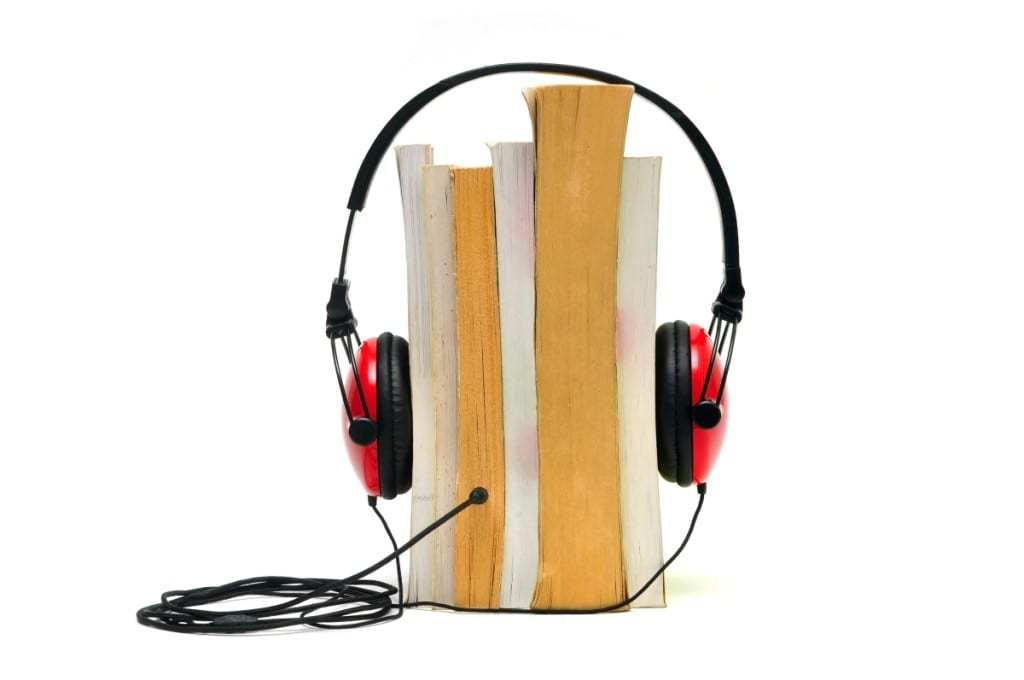
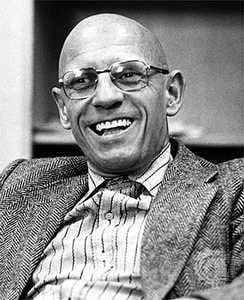
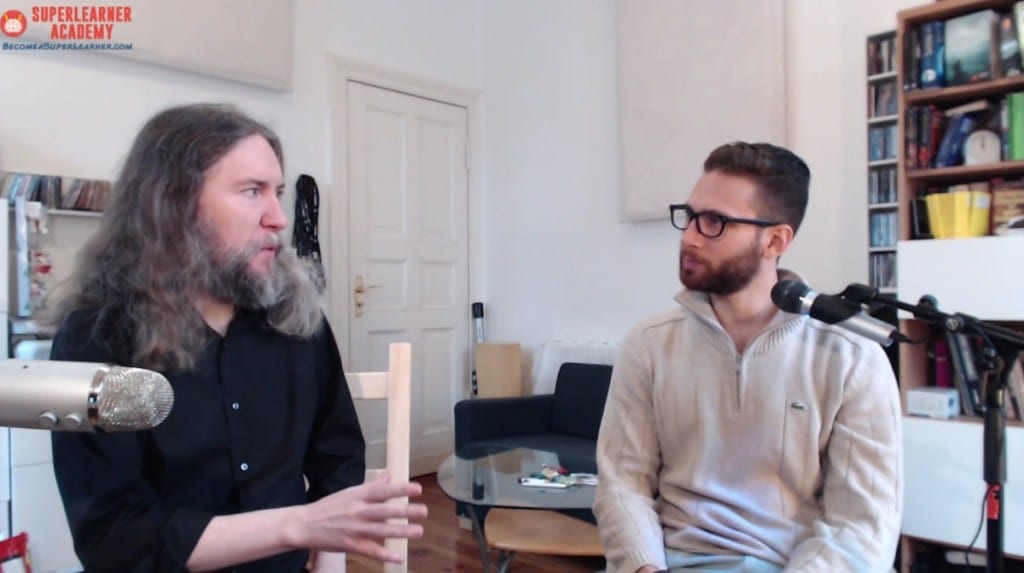
 If you’re lucky enough, eating is something you do every day. If you’re like most of us lucky ones, it might be something you do too often every day.
If you’re lucky enough, eating is something you do every day. If you’re like most of us lucky ones, it might be something you do too often every day.
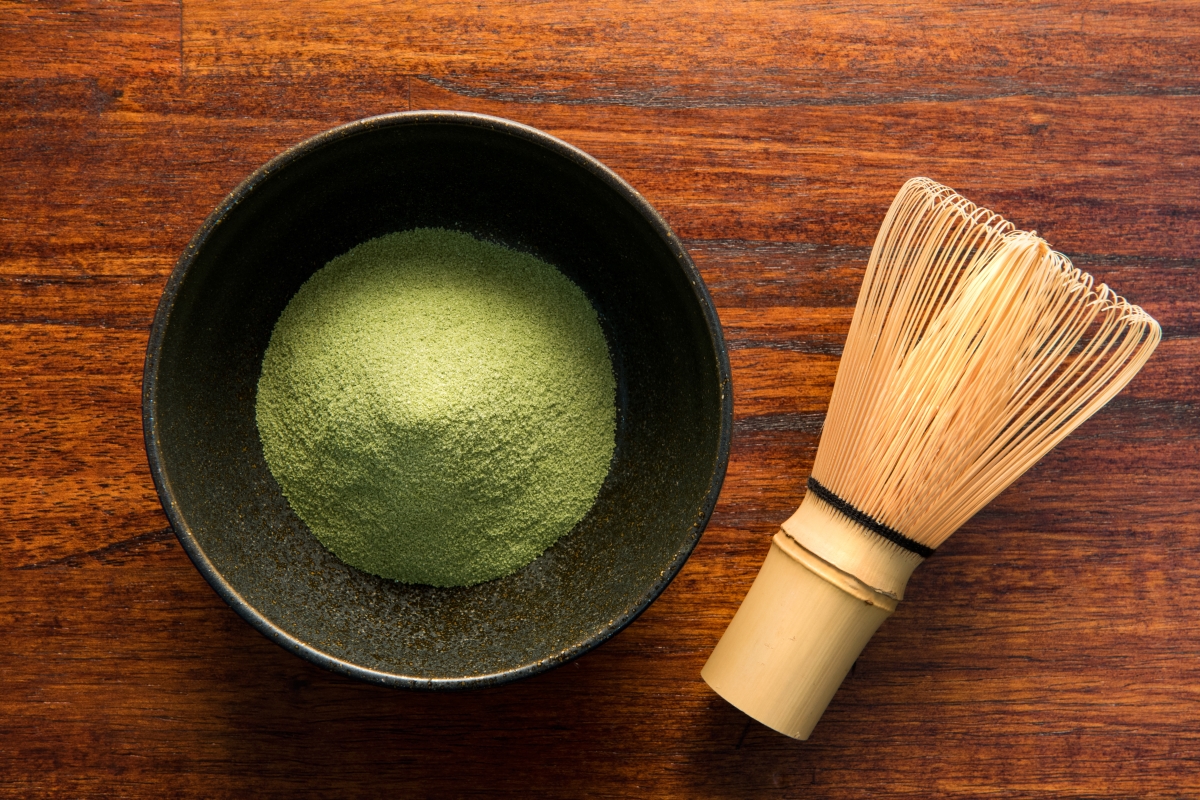




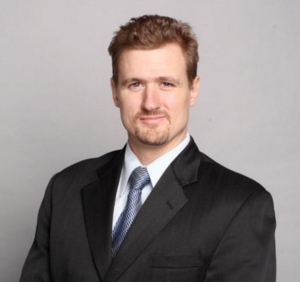 In this episode of the Magnetic Memory Method Podcast, Guinness World Record Holder
In this episode of the Magnetic Memory Method Podcast, Guinness World Record Holder 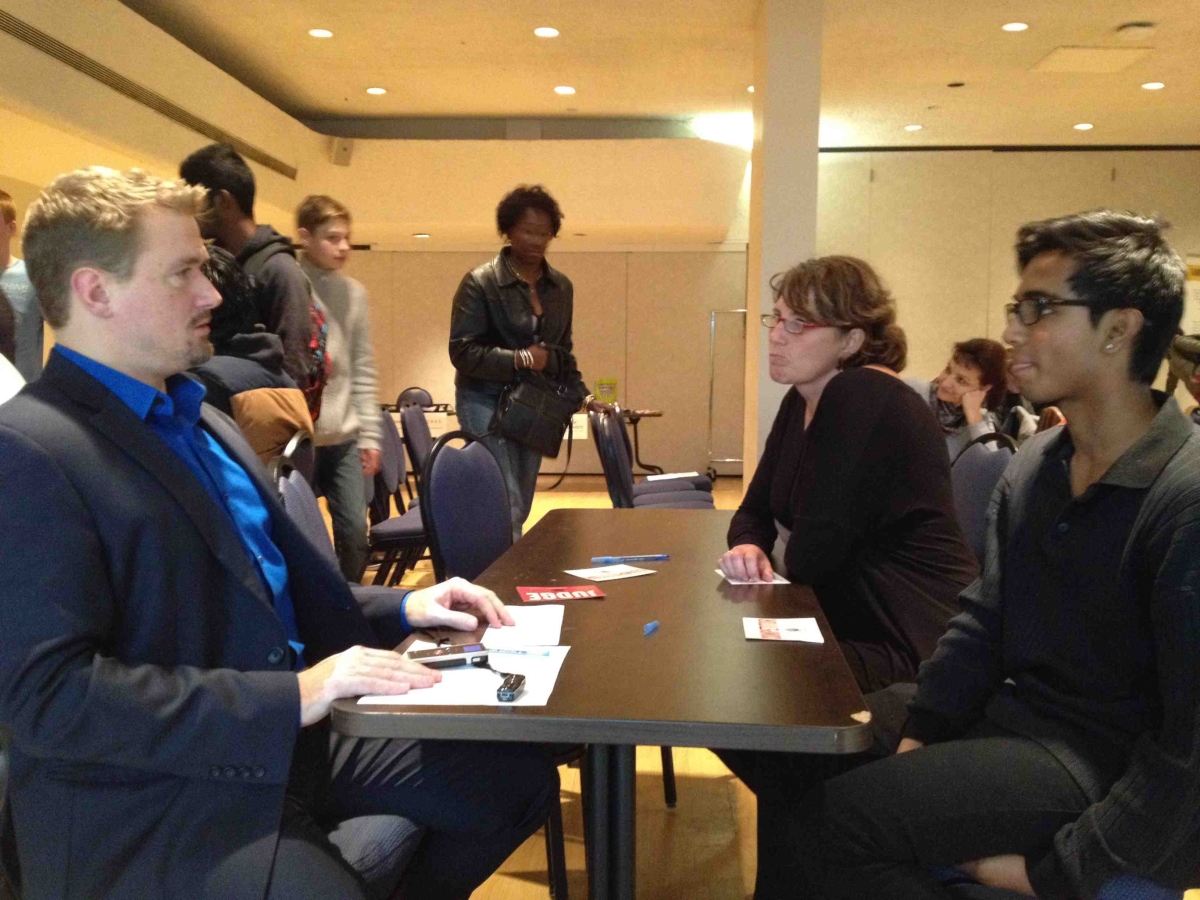
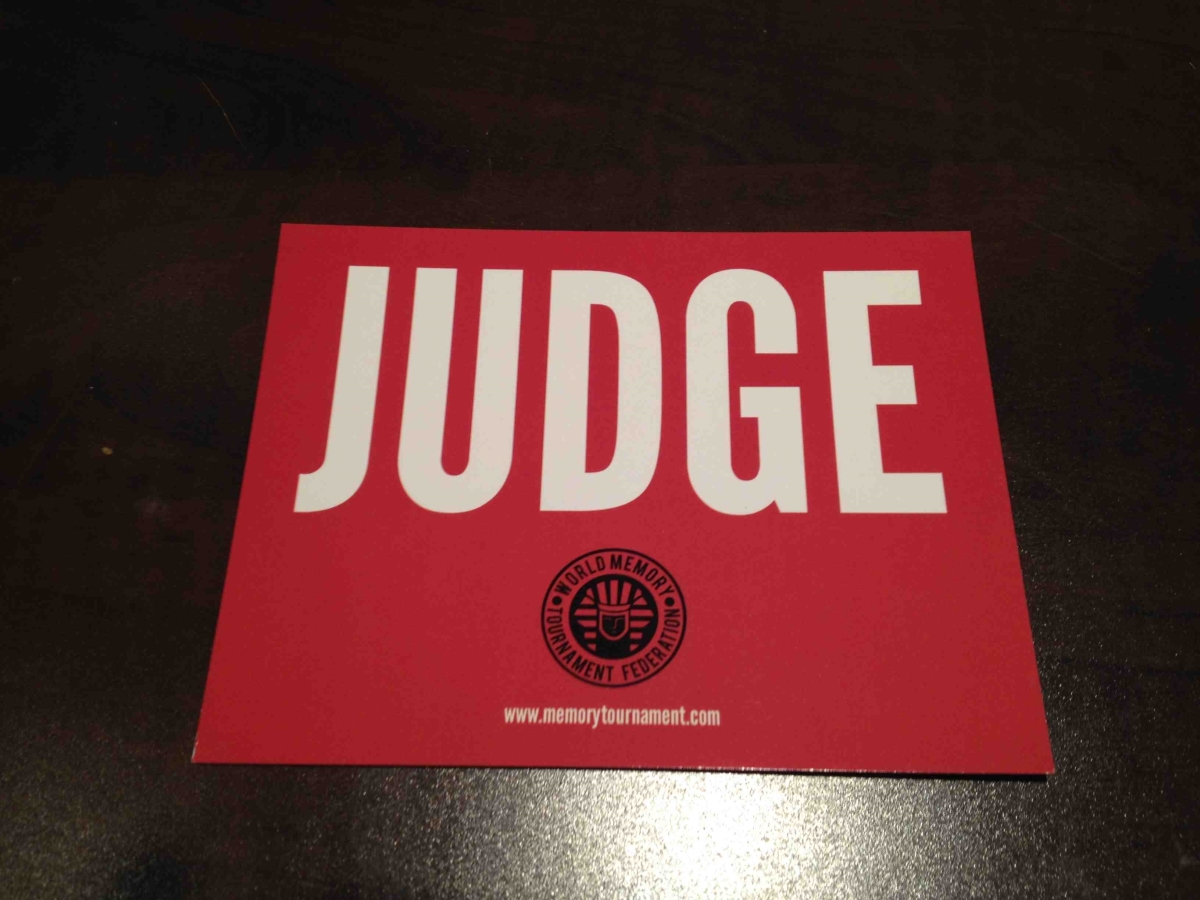
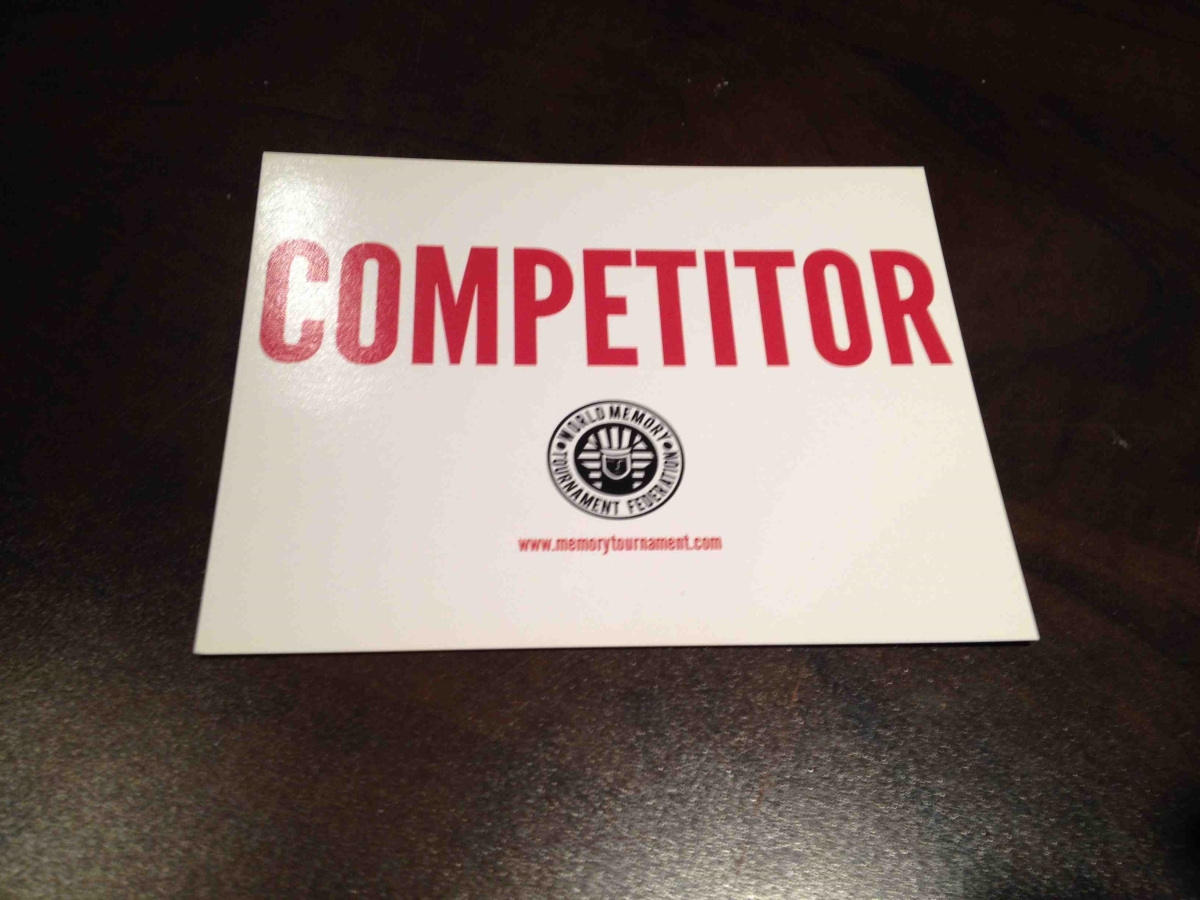
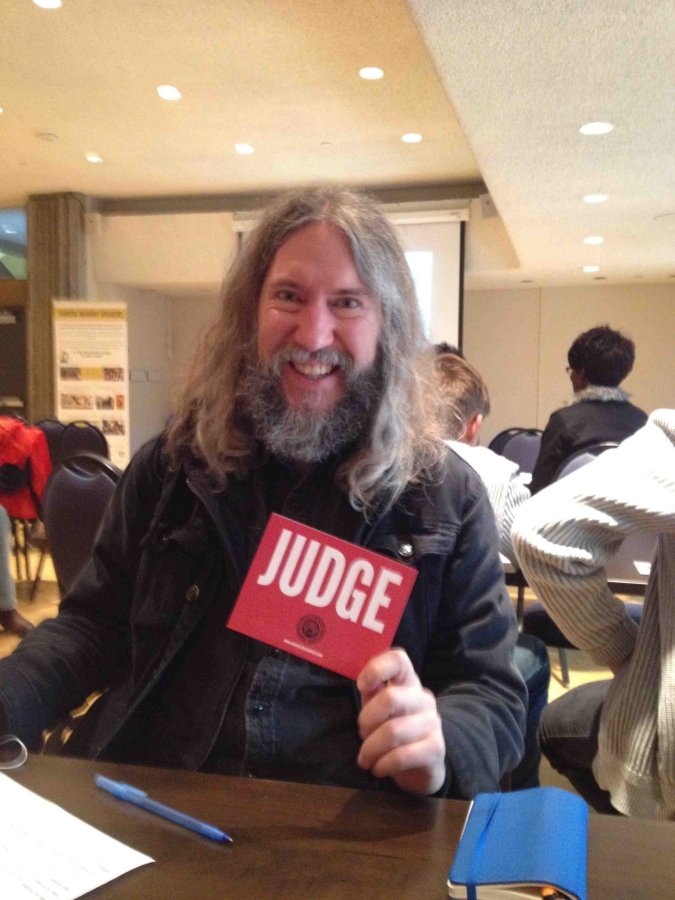
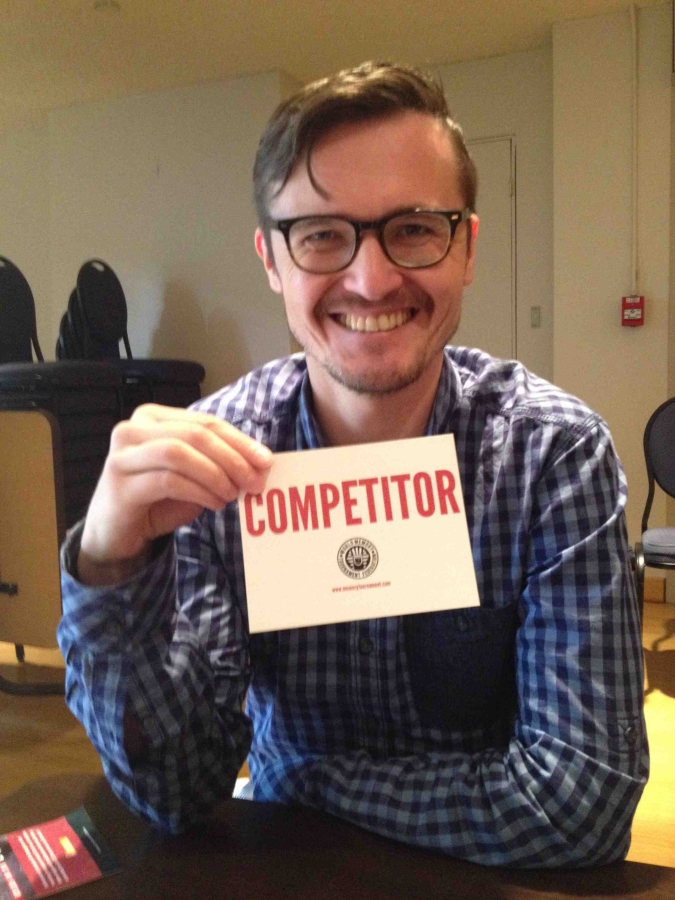
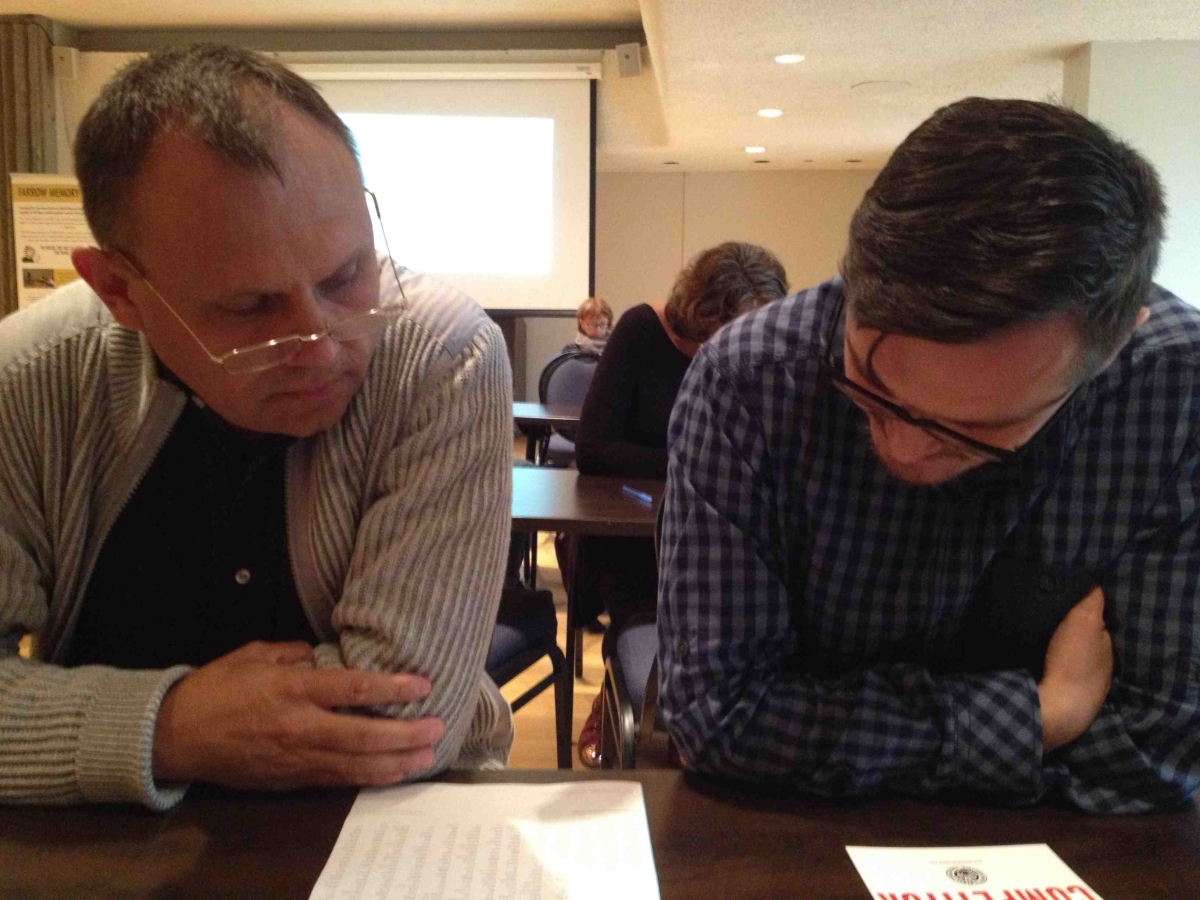
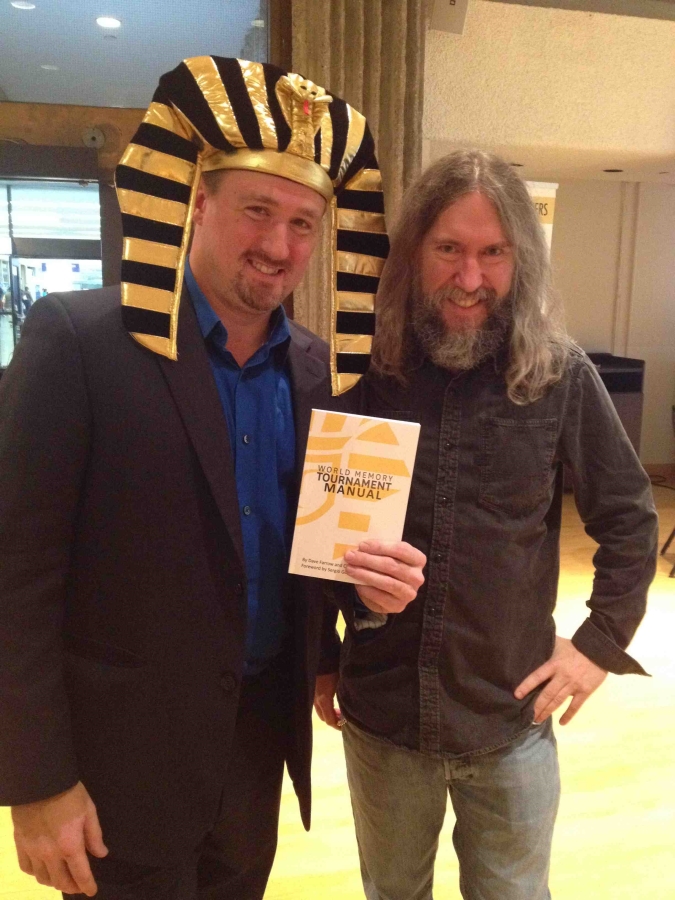
 Let me ask you something:
Let me ask you something:



 This
This  Let’s face it – you’re burned out.
Let’s face it – you’re burned out.
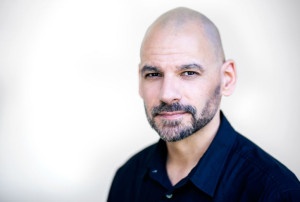 Have you ever thought about getting into marketing?
Have you ever thought about getting into marketing?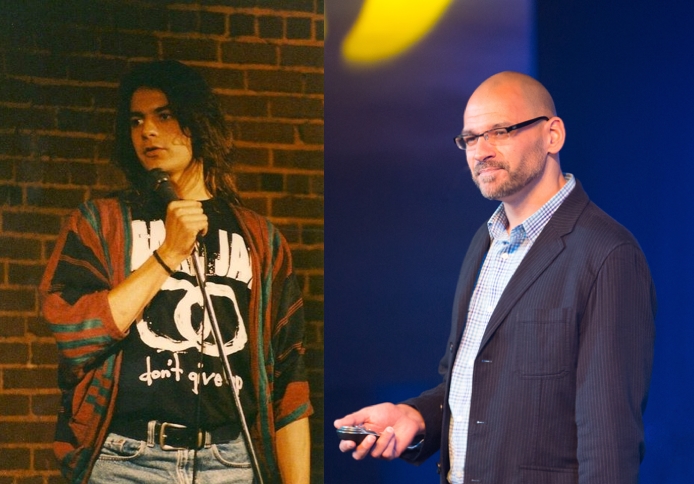
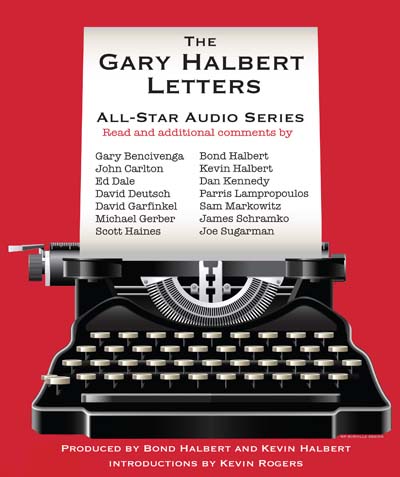
 Have you ever wondered if mnemonics and memory techniques are for everyone?
Have you ever wondered if mnemonics and memory techniques are for everyone?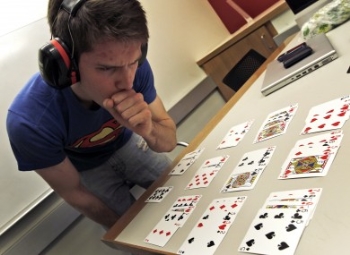 In this episode of the Magnetic Memory Method Podcast, USA Memory Champ Nelson Dellis teaches you how to win the USA Memory Championship.
In this episode of the Magnetic Memory Method Podcast, USA Memory Champ Nelson Dellis teaches you how to win the USA Memory Championship.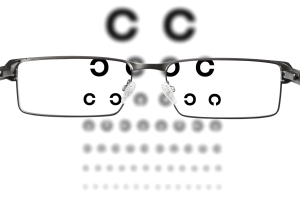 Absentmindedness sucks.
Absentmindedness sucks. This is Andrew Barr and today I’m sitting in for Anthony in this guest post.
This is Andrew Barr and today I’m sitting in for Anthony in this guest post. Do you get overwhelmed and frustrated every time you need to come up with new ideas when using memory techniques as part of your brain training? Especially when learning a
Do you get overwhelmed and frustrated every time you need to come up with new ideas when using memory techniques as part of your brain training? Especially when learning a 

 Here’s a great question about how to memorize textbooks I received from a Magnetic Memory Method fan:
Here’s a great question about how to memorize textbooks I received from a Magnetic Memory Method fan: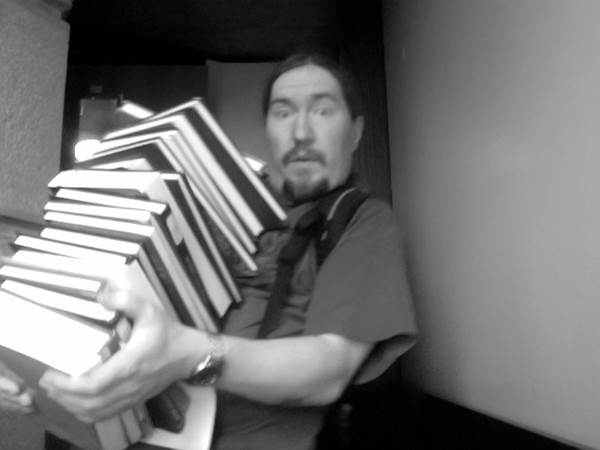
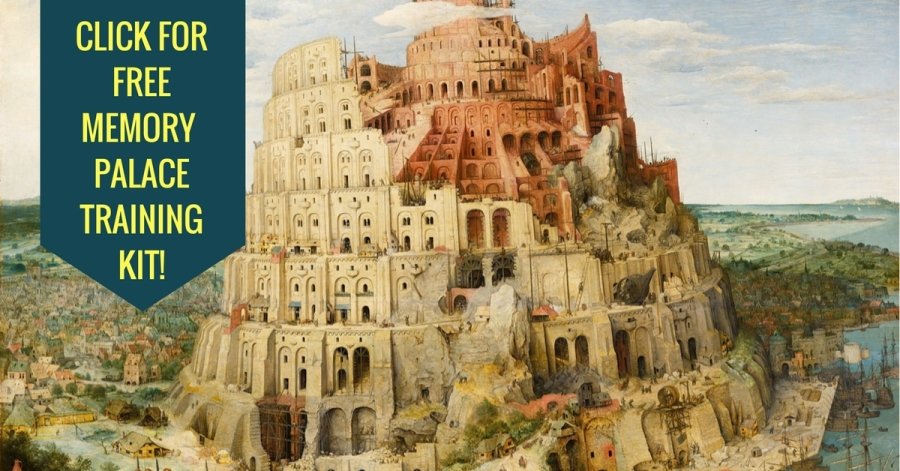



 This Man Shows You How To Unlock The Extreme Power Of Your Memory
This Man Shows You How To Unlock The Extreme Power Of Your Memory Have you ever purchased something and hated it? And yet, for some reason, you gradually …
Have you ever purchased something and hated it? And yet, for some reason, you gradually …
 Memory is not what you think it is.
Memory is not what you think it is. Wouldn’t it be great if you could experience memory improvement …
Wouldn’t it be great if you could experience memory improvement … Have you ever had a fact you know like the back of your hand stick on the tip of your tongue?
Have you ever had a fact you know like the back of your hand stick on the tip of your tongue? Have You Ever Had A Past Life Experience? Do You Believe In Reincarnation? How Much Karma Do You Spread On Your Mummified Animal Crackers?
Have You Ever Had A Past Life Experience? Do You Believe In Reincarnation? How Much Karma Do You Spread On Your Mummified Animal Crackers?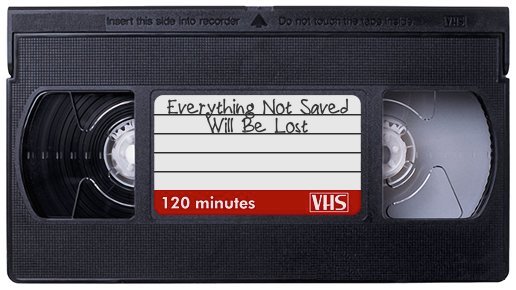
 To celebrate the release of a course I put together with Jonathan Levi called, Branding You
To celebrate the release of a course I put together with Jonathan Levi called, Branding You : How To Build A Multimedia Internet Empire, we’re re-releasing an interview I gave on his Becoming a Superhuman podcast. So when you’re ready, hit play and learn …
: How To Build A Multimedia Internet Empire, we’re re-releasing an interview I gave on his Becoming a Superhuman podcast. So when you’re ready, hit play and learn … The thought of memory improvement excites you, doesn’t it?
The thought of memory improvement excites you, doesn’t it? How Much Would The Quality Of Your Life
How Much Would The Quality Of Your Life  How Would You Like A Quote That Will Change Your Life – And Your Memory – For The Better?
How Would You Like A Quote That Will Change Your Life – And Your Memory – For The Better? You’d like to have psychic powers, wouldn’t you?
You’d like to have psychic powers, wouldn’t you? How To Use Your Emotions To Memorize More Instead Of Letting Them Take Over Your Life And Make A Big Fat Mess Of Everything
How To Use Your Emotions To Memorize More Instead Of Letting Them Take Over Your Life And Make A Big Fat Mess Of Everything How
How  How To Memorize Even The Most Difficult Words In The World Using World Class Memory Techniques
How To Memorize Even The Most Difficult Words In The World Using World Class Memory Techniques Sometimes Learning Is As Simple As Asking The Right Questions
Sometimes Learning Is As Simple As Asking The Right Questions How To Become More Creative And Remember The Information That Matters In Your Life
How To Become More Creative And Remember The Information That Matters In Your Life How To Win Any Language Learning Contest
How To Win Any Language Learning Contest Who Else Wants To Get Rid Of Stress-Induced Memory Loss
Who Else Wants To Get Rid Of Stress-Induced Memory Loss  Can You
Can You  These Memory Strategies Can
These Memory Strategies Can 
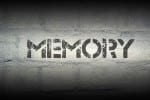 A lot of people suffer from a “bad memory.”
A lot of people suffer from a “bad memory.”
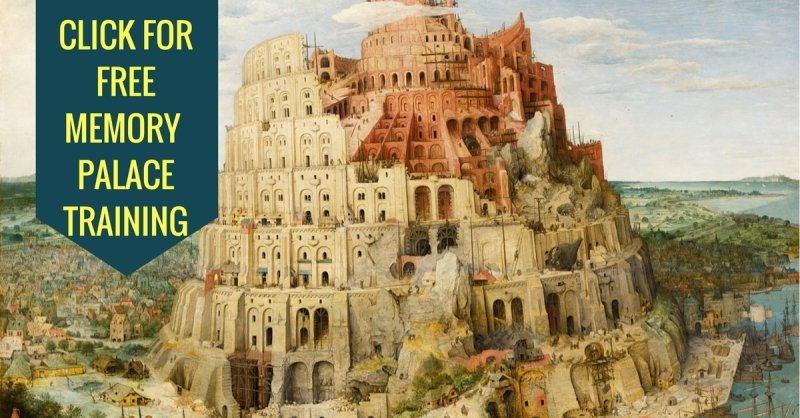
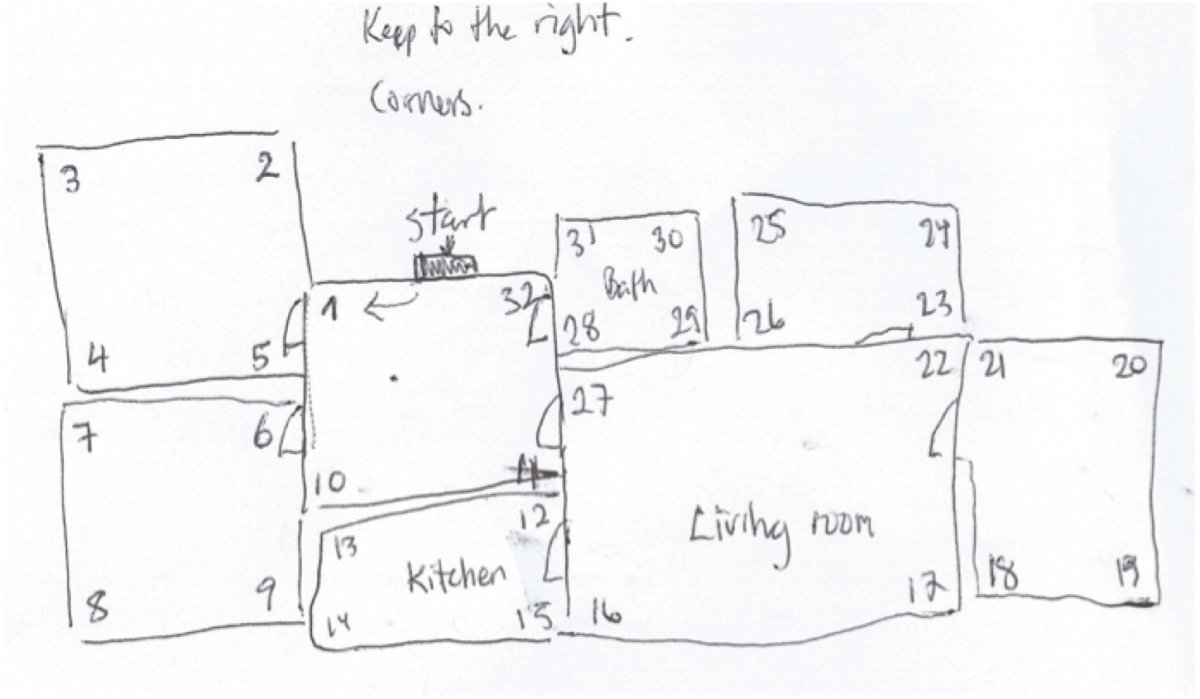

 People around the world wish they could remember their dreams. And not just remember them.
People around the world wish they could remember their dreams. And not just remember them.




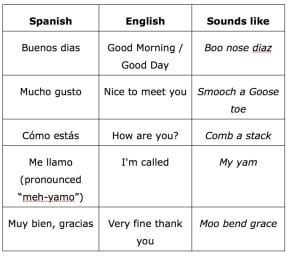

 In this episode of the Magnetic Memory Method Podcast, you’ll learn about how to get fat off of all the free donuts you can stuff in your Magnetic little belly (or big belly as the case soon shall be …)
In this episode of the Magnetic Memory Method Podcast, you’ll learn about how to get fat off of all the free donuts you can stuff in your Magnetic little belly (or big belly as the case soon shall be …)
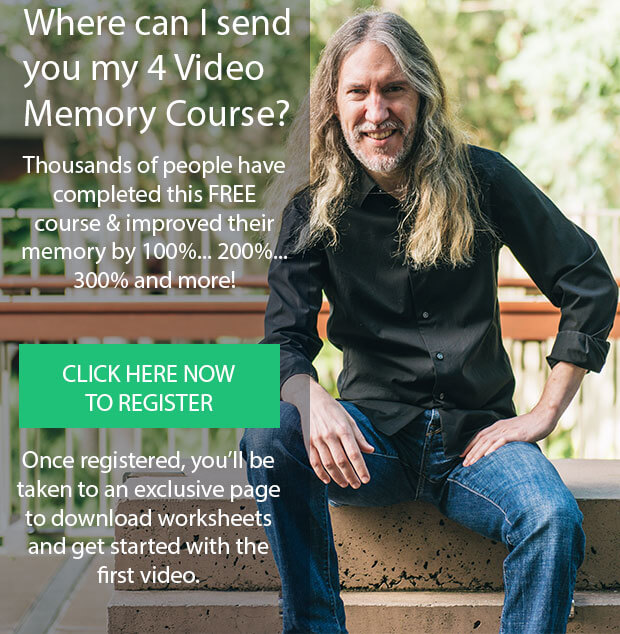

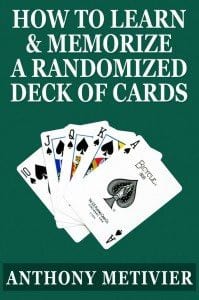


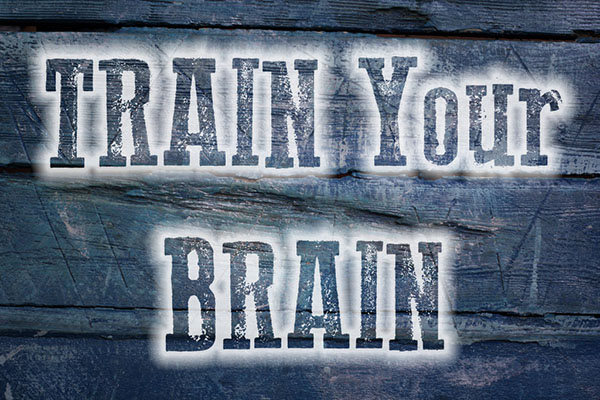

 I’ve give you this handwritten image because that’s exactly how I suggest you write out your mind map. It takes just a few seconds. But in case you can’t read my handwriting or interpret my short form, here’s the list of what “memory power” means to me. It’s the ability to:
I’ve give you this handwritten image because that’s exactly how I suggest you write out your mind map. It takes just a few seconds. But in case you can’t read my handwriting or interpret my short form, here’s the list of what “memory power” means to me. It’s the ability to: Again, this isn’t rocket science. Just a simple sheet of paper will do. So you can make out what I’ve written, here’s the words in type (and in more normal English):
Again, this isn’t rocket science. Just a simple sheet of paper will do. So you can make out what I’ve written, here’s the words in type (and in more normal English):
